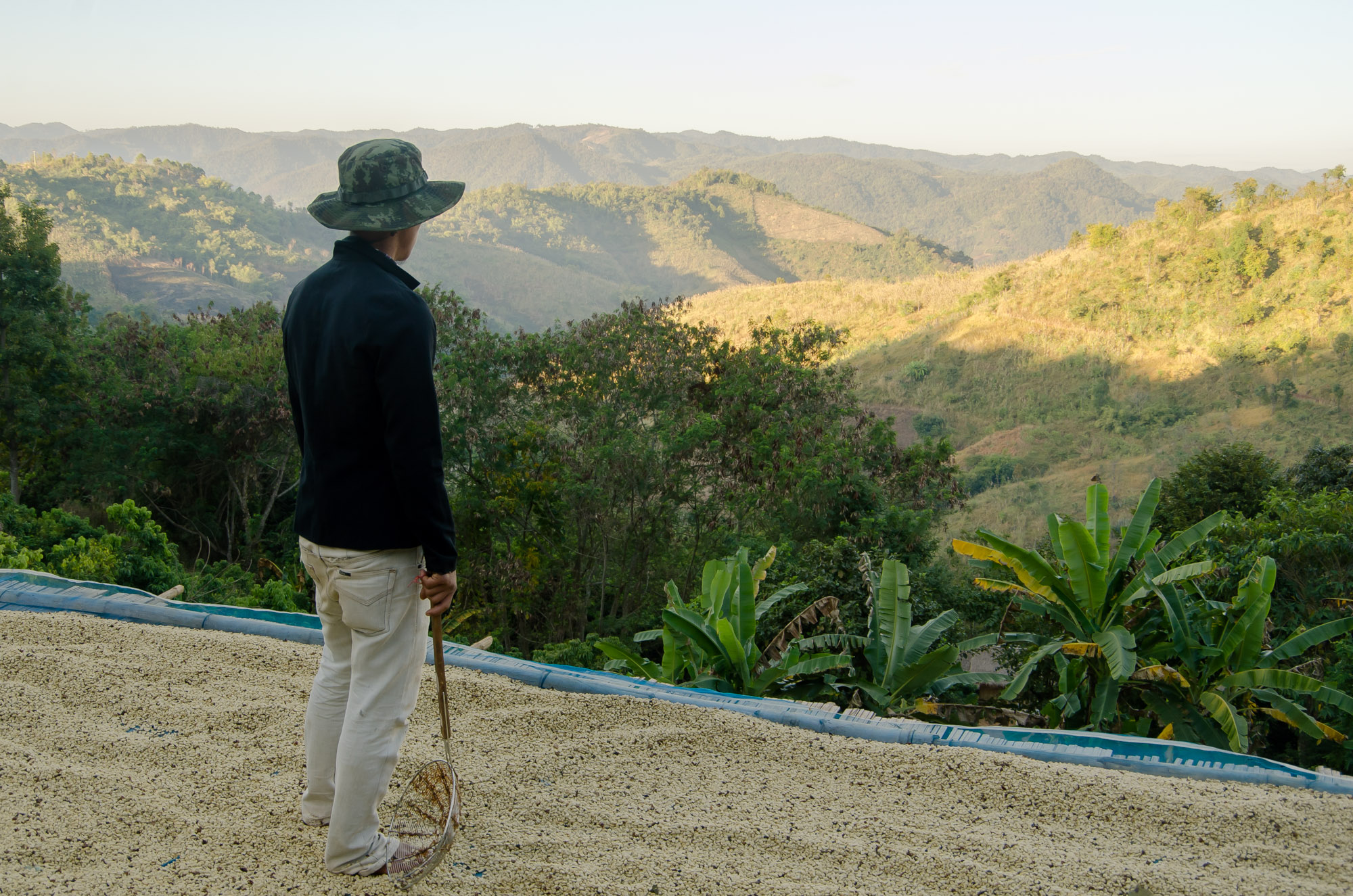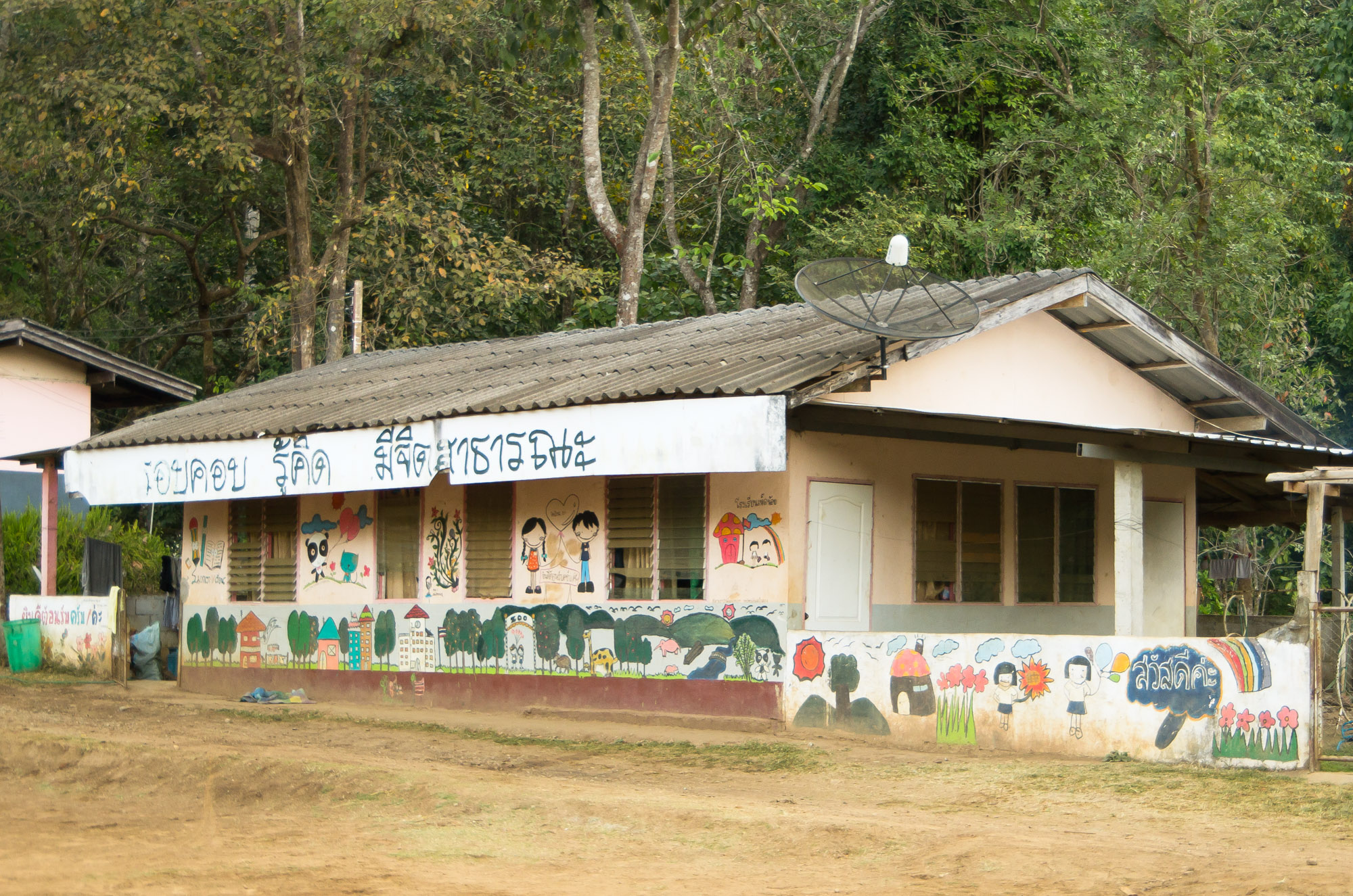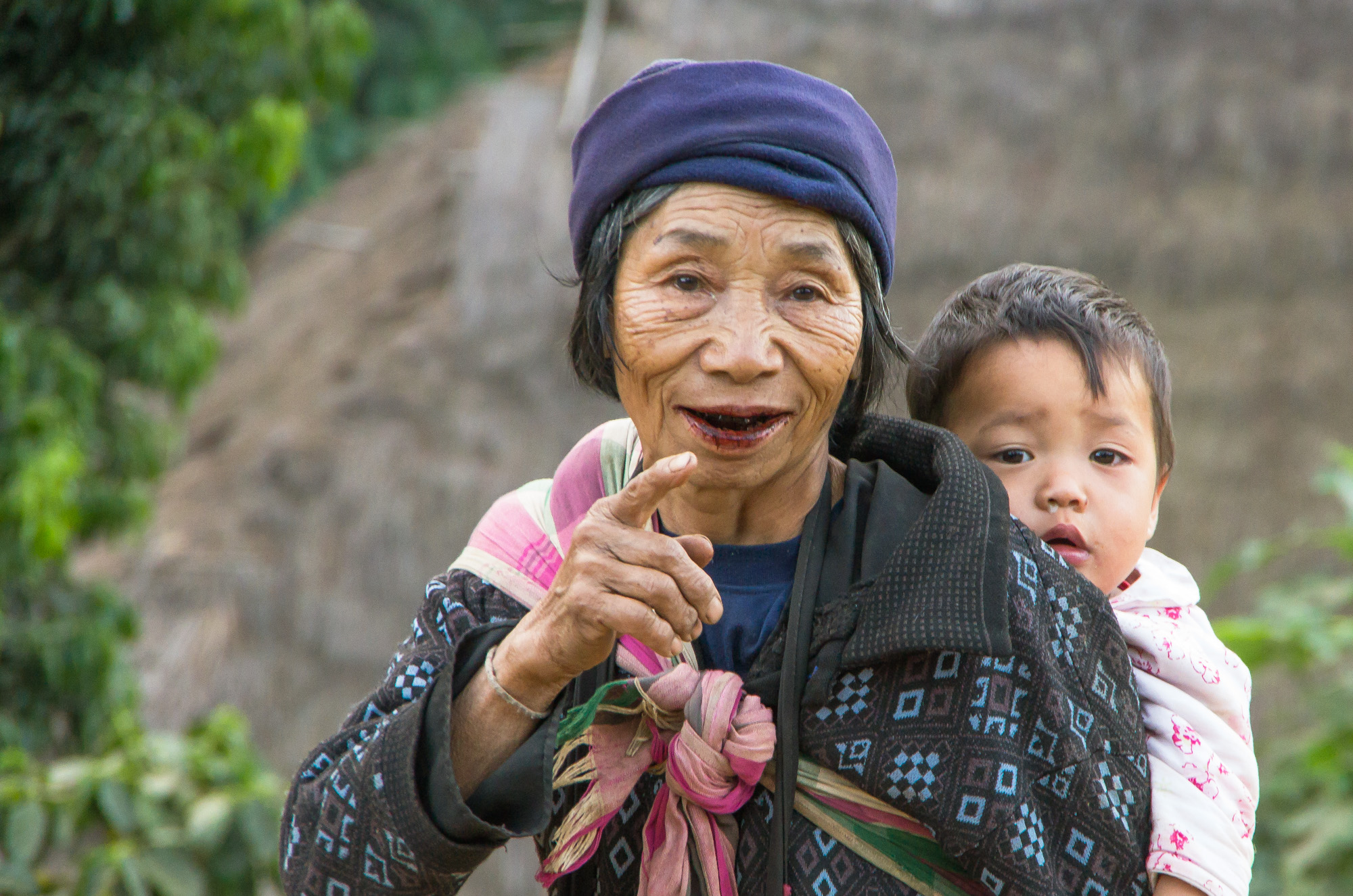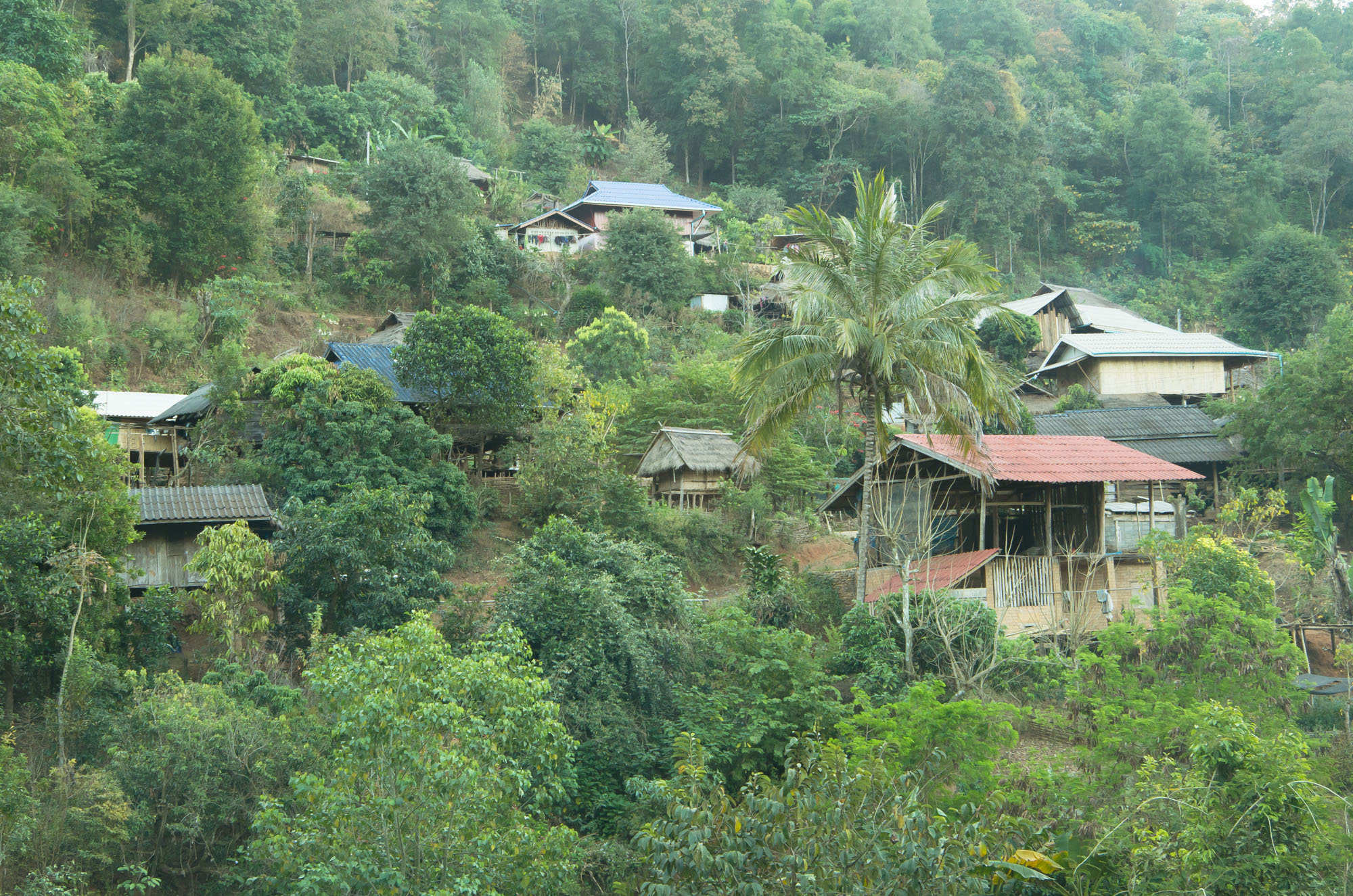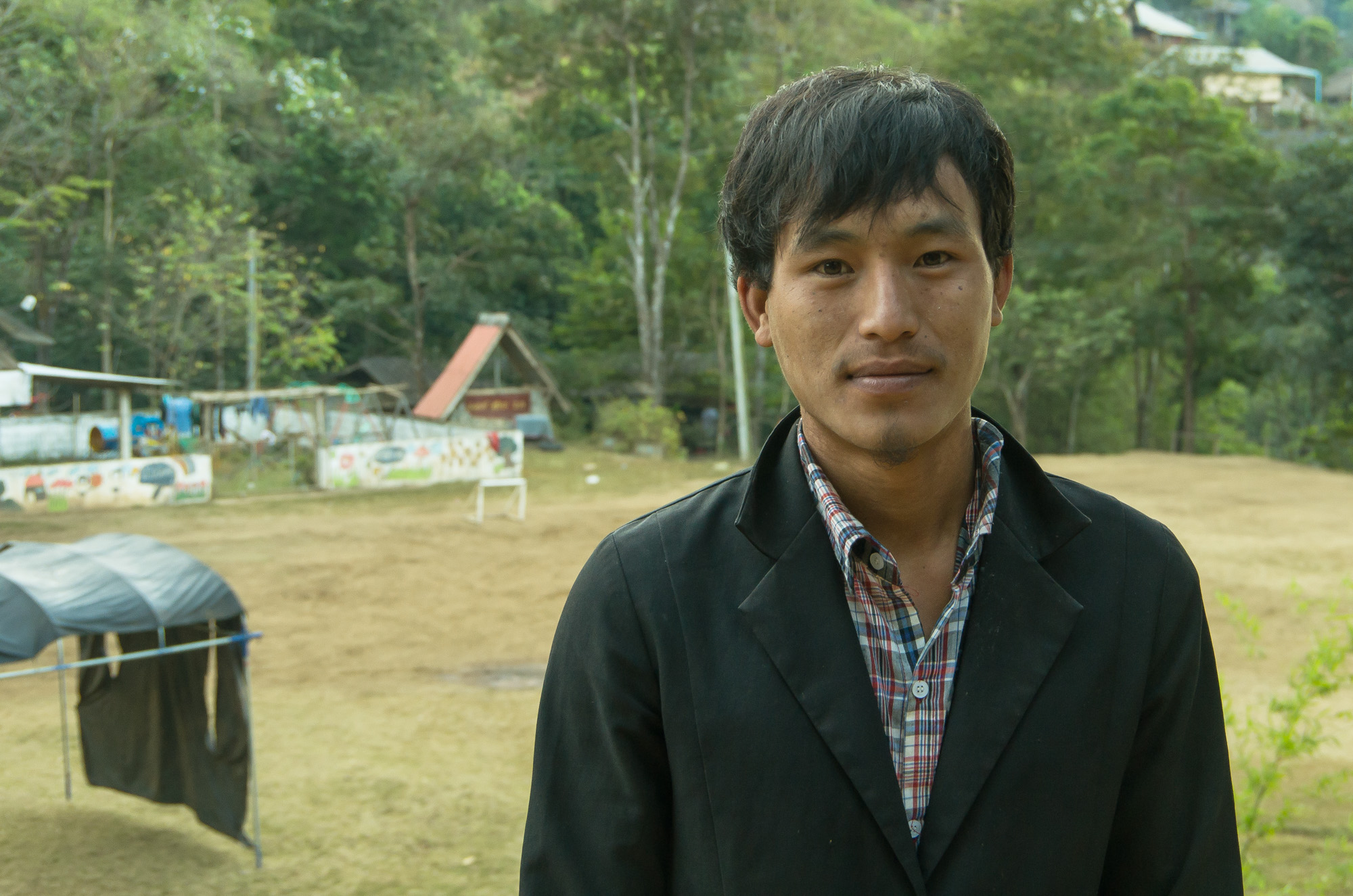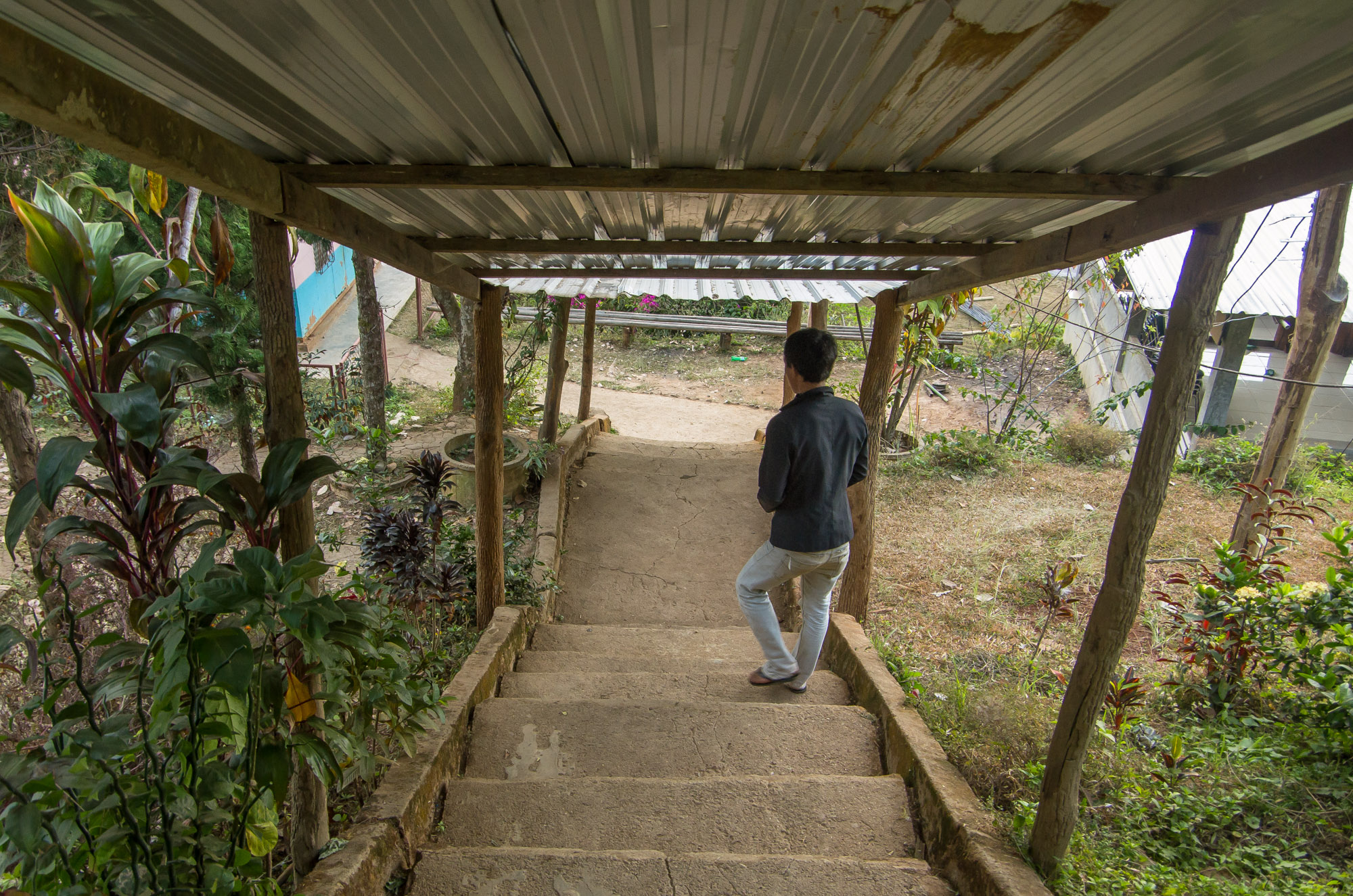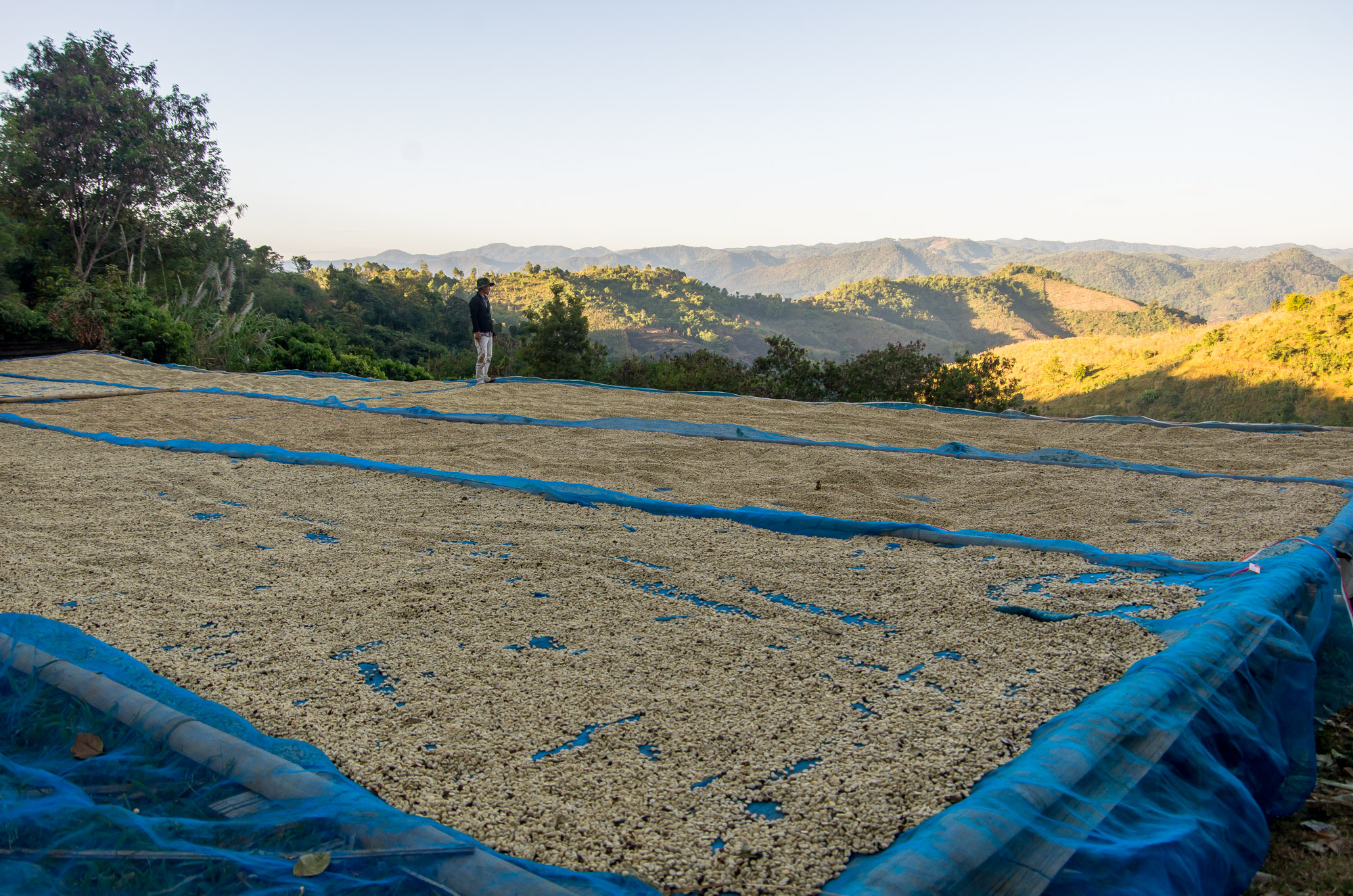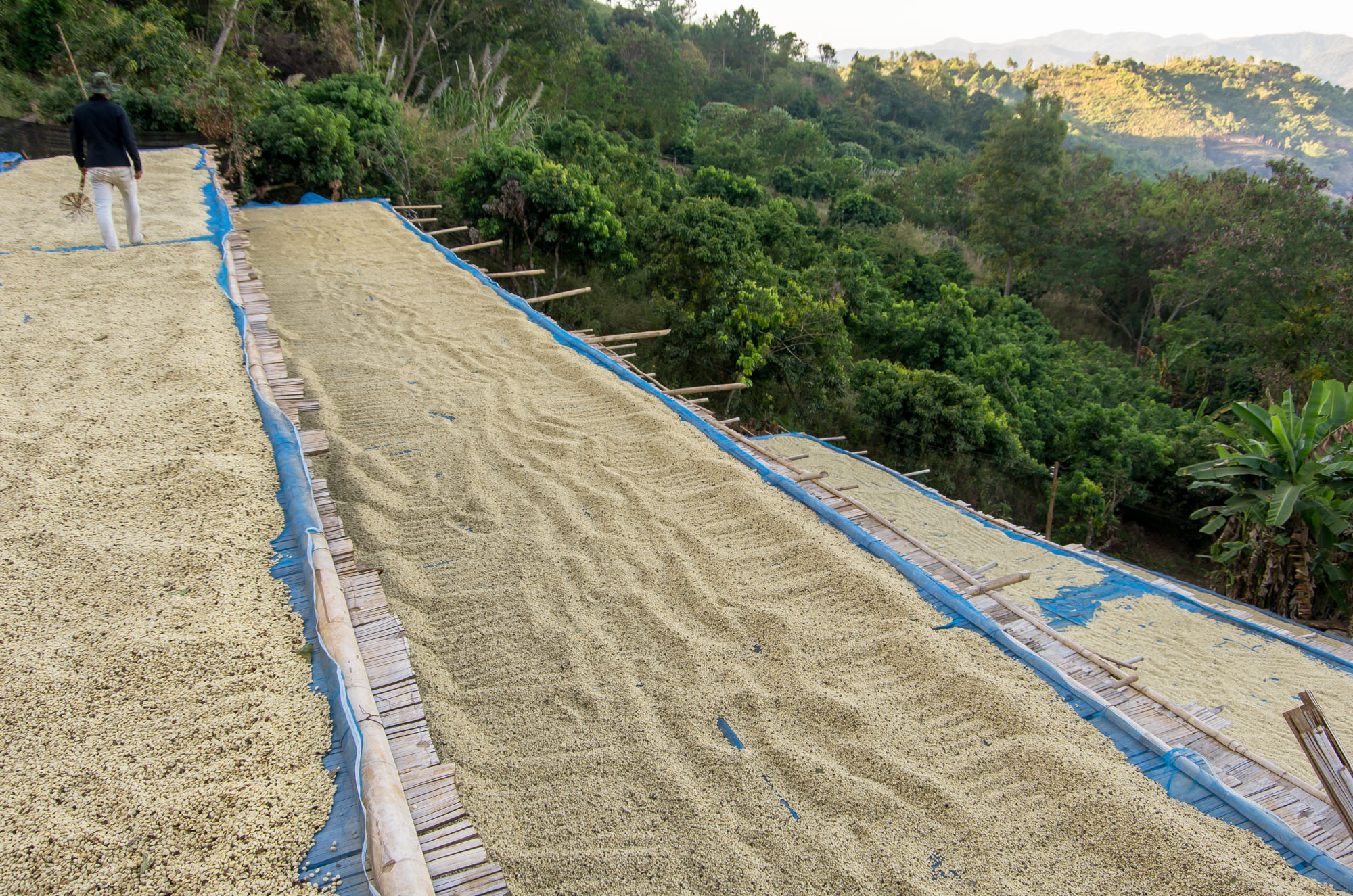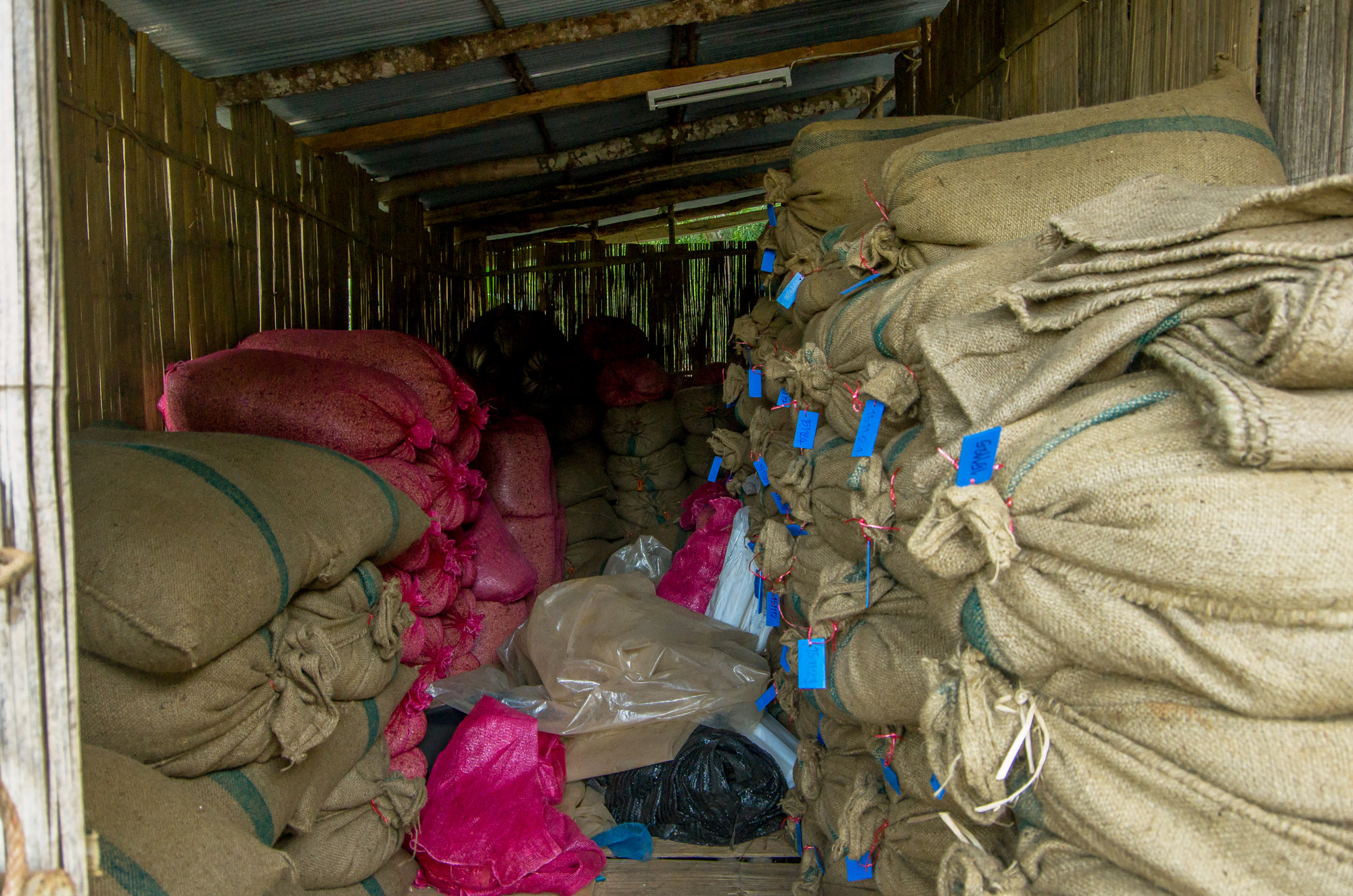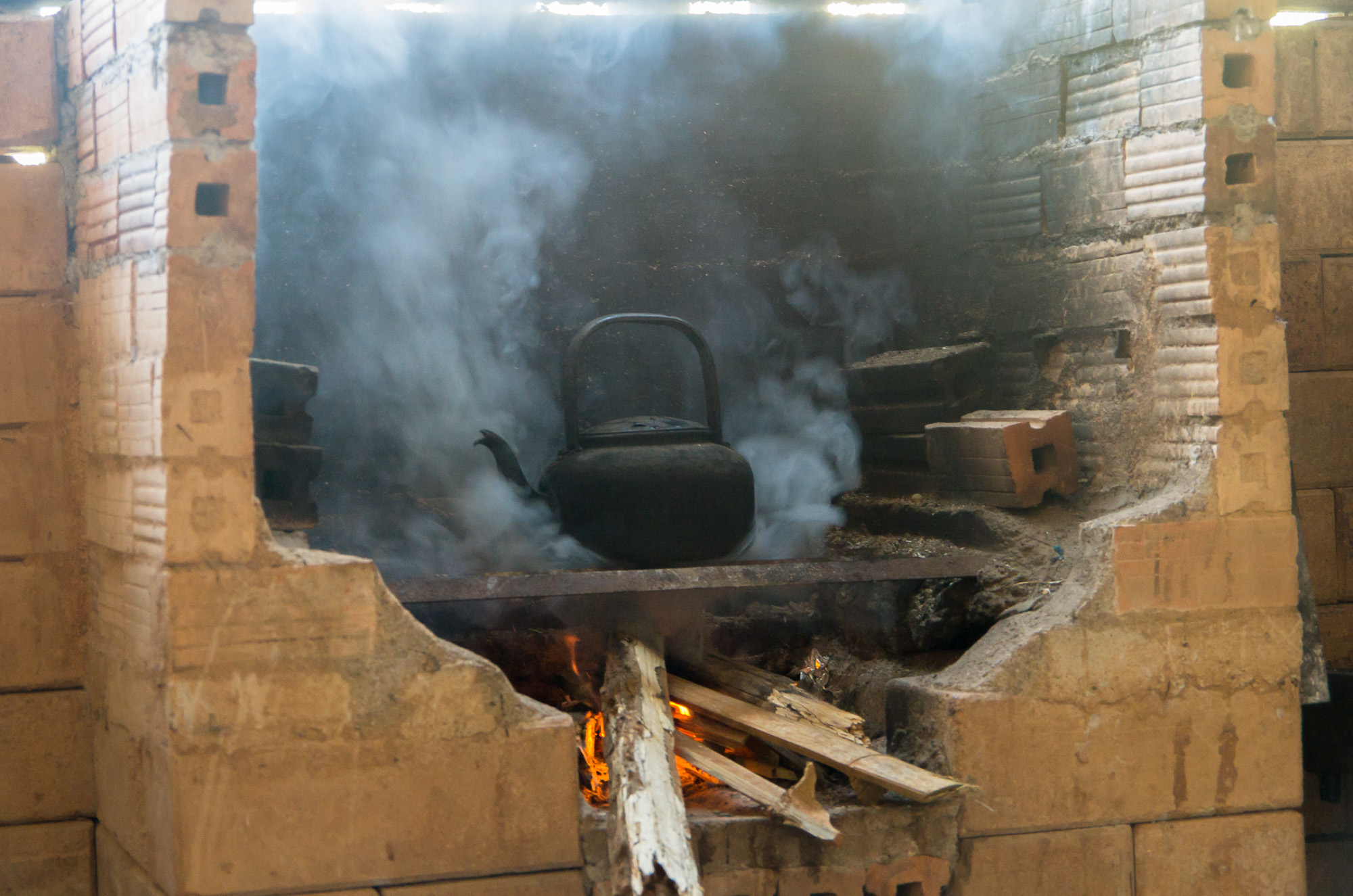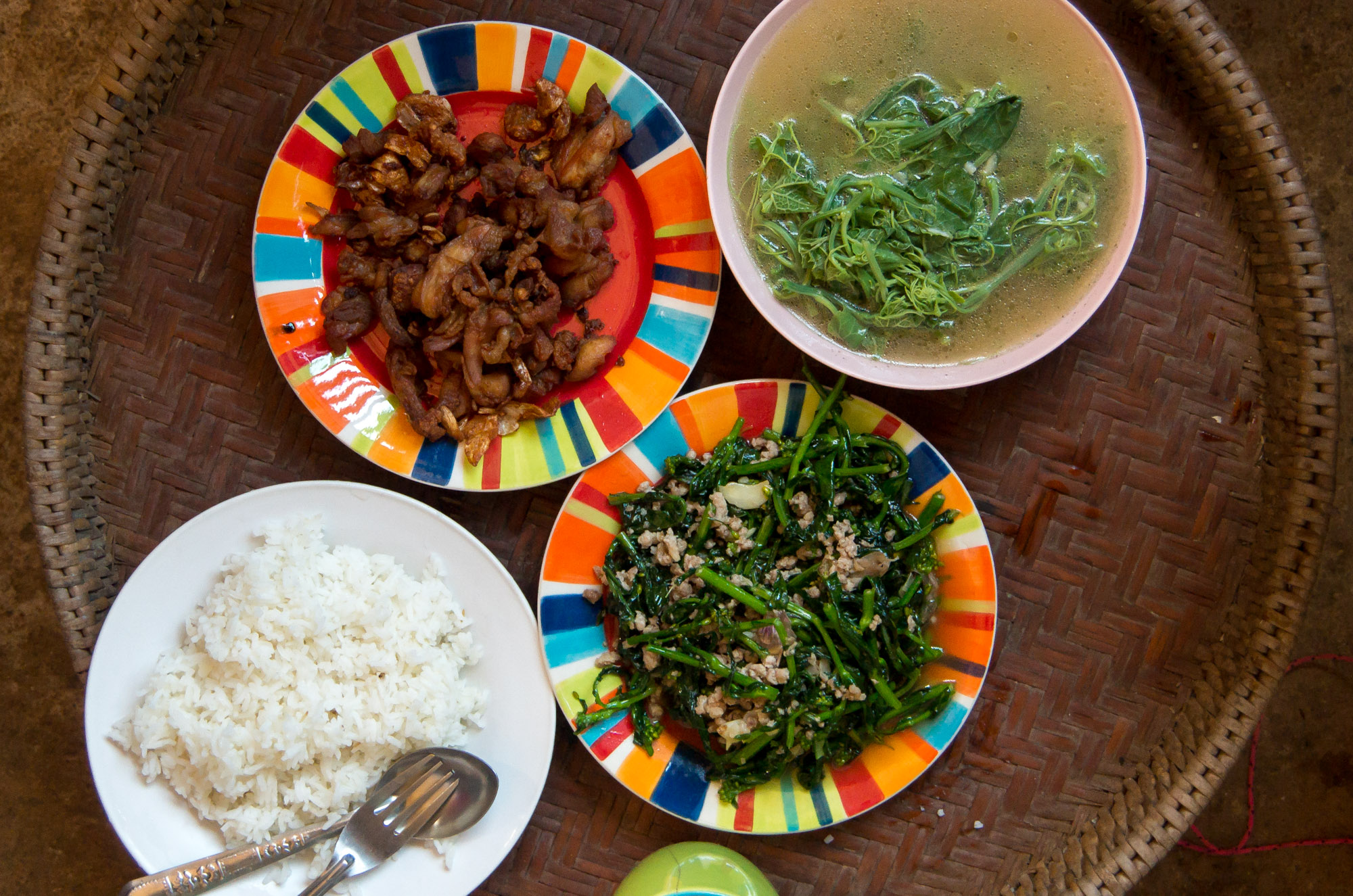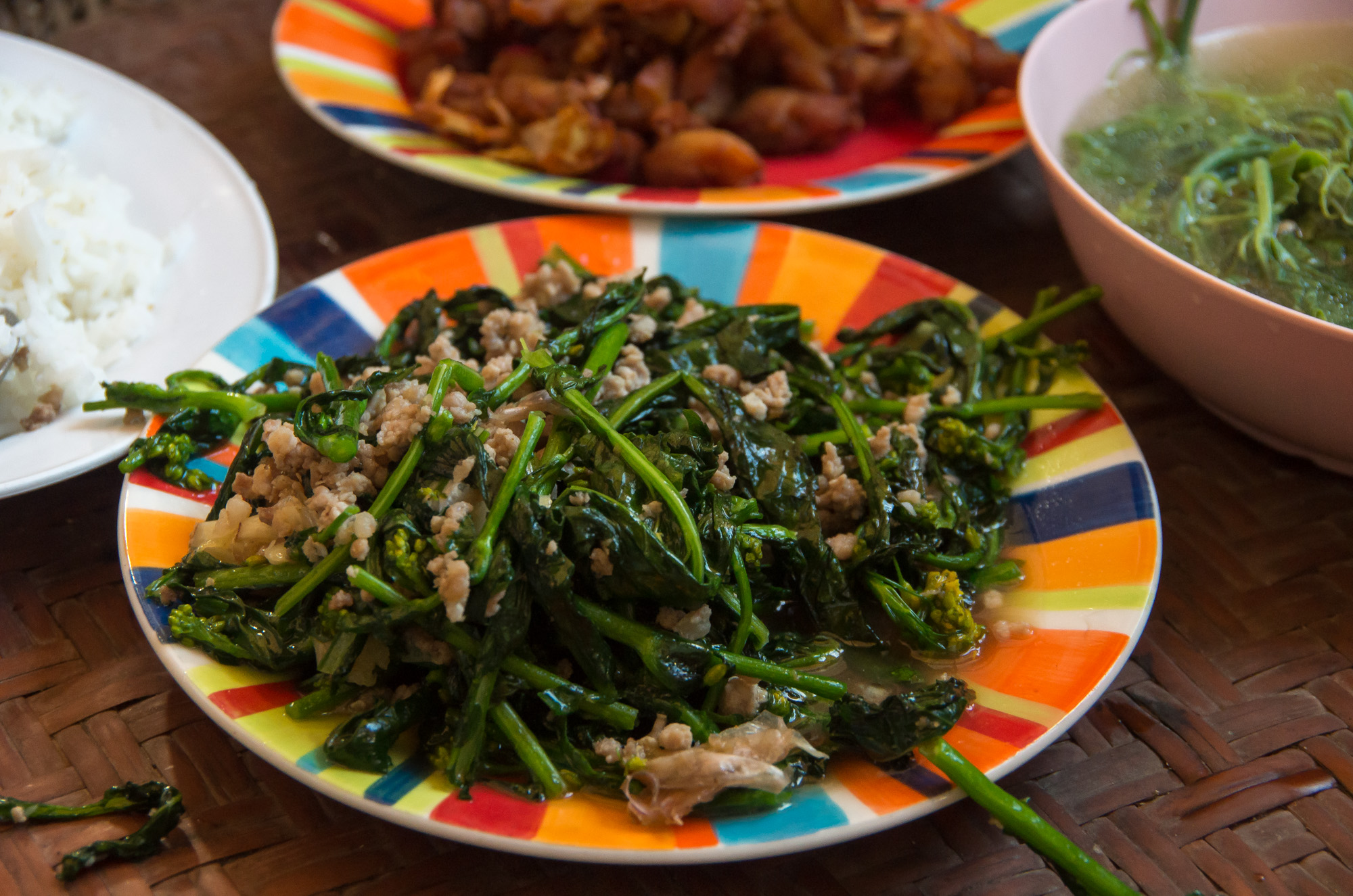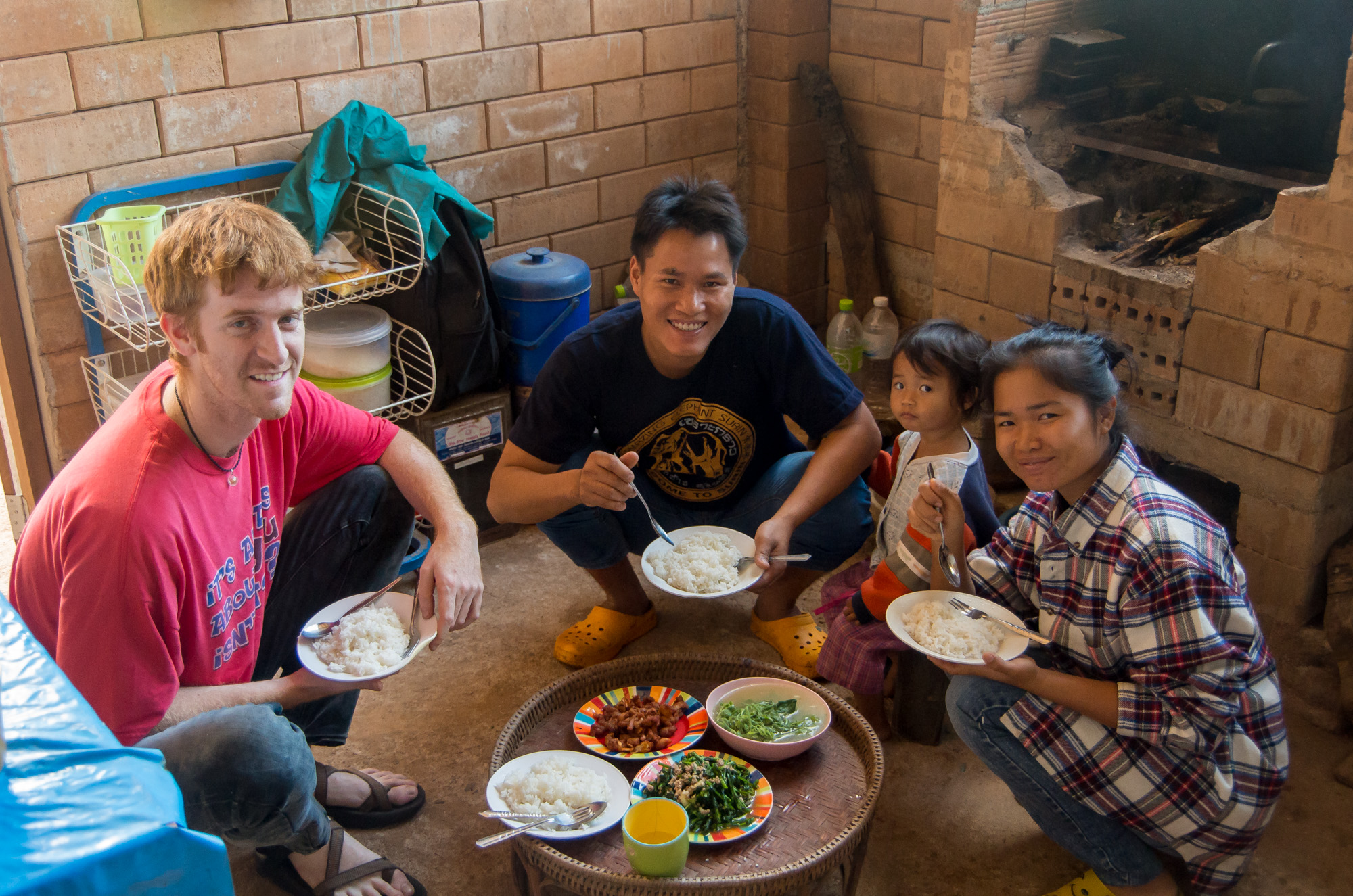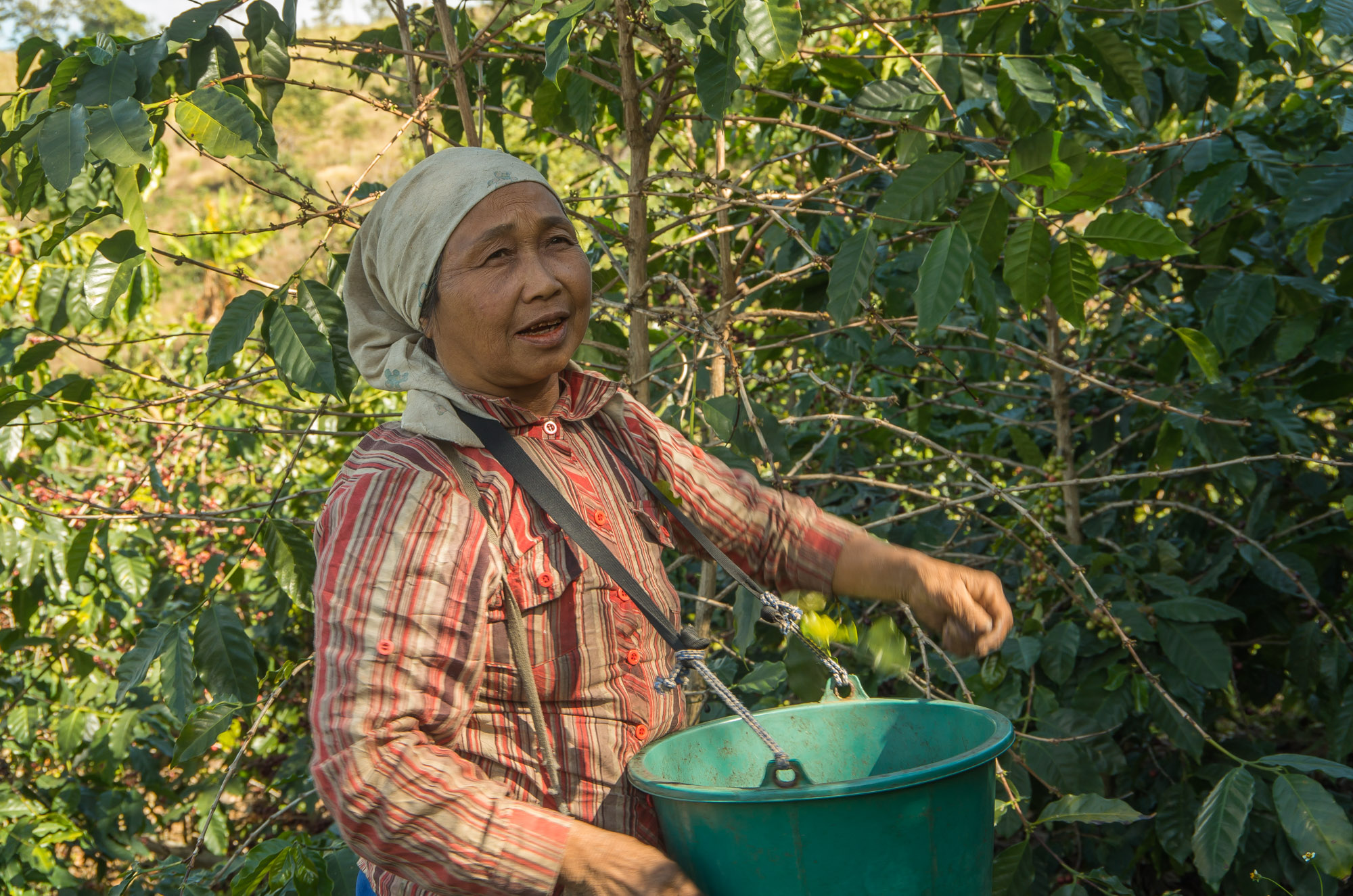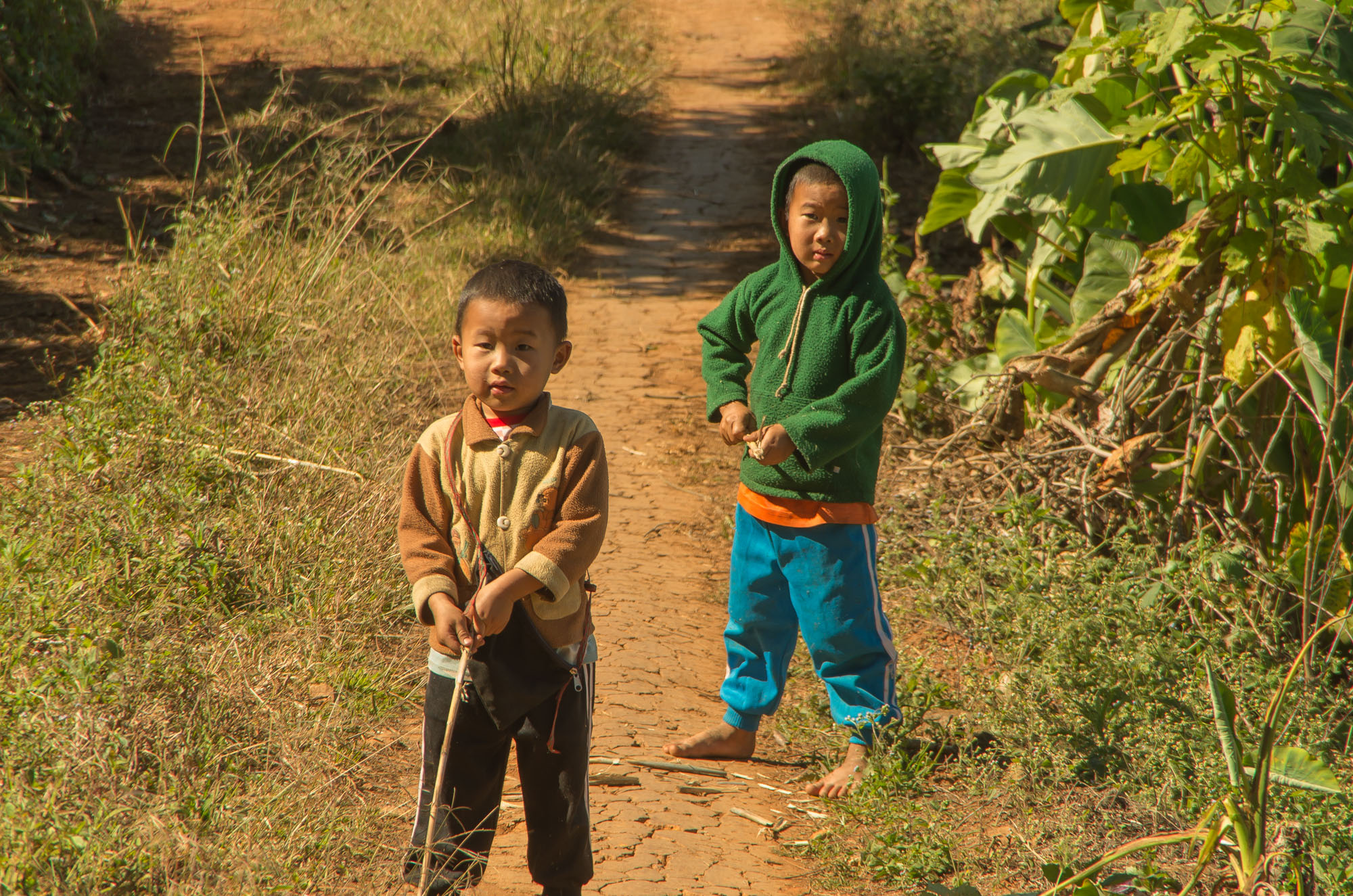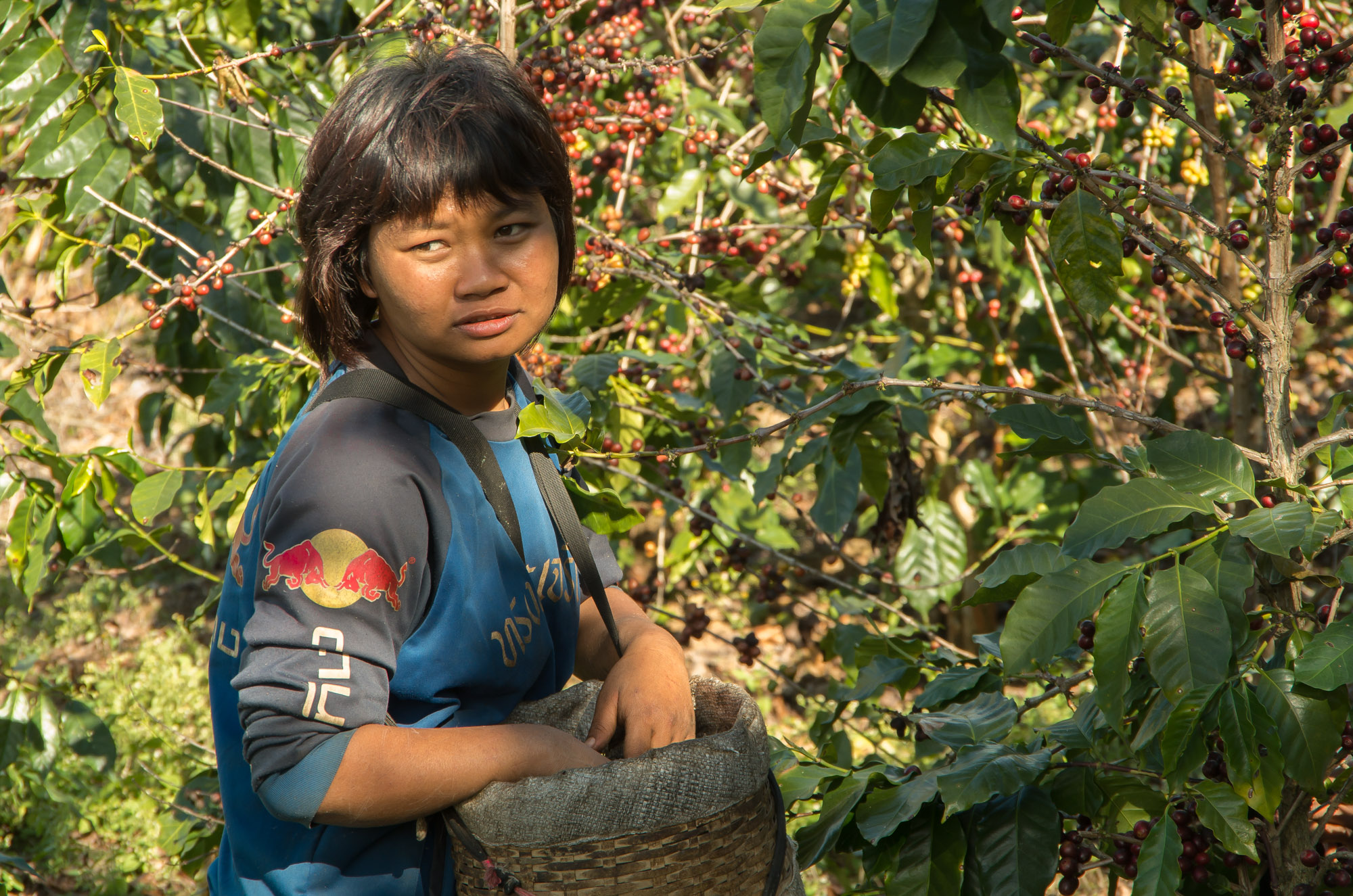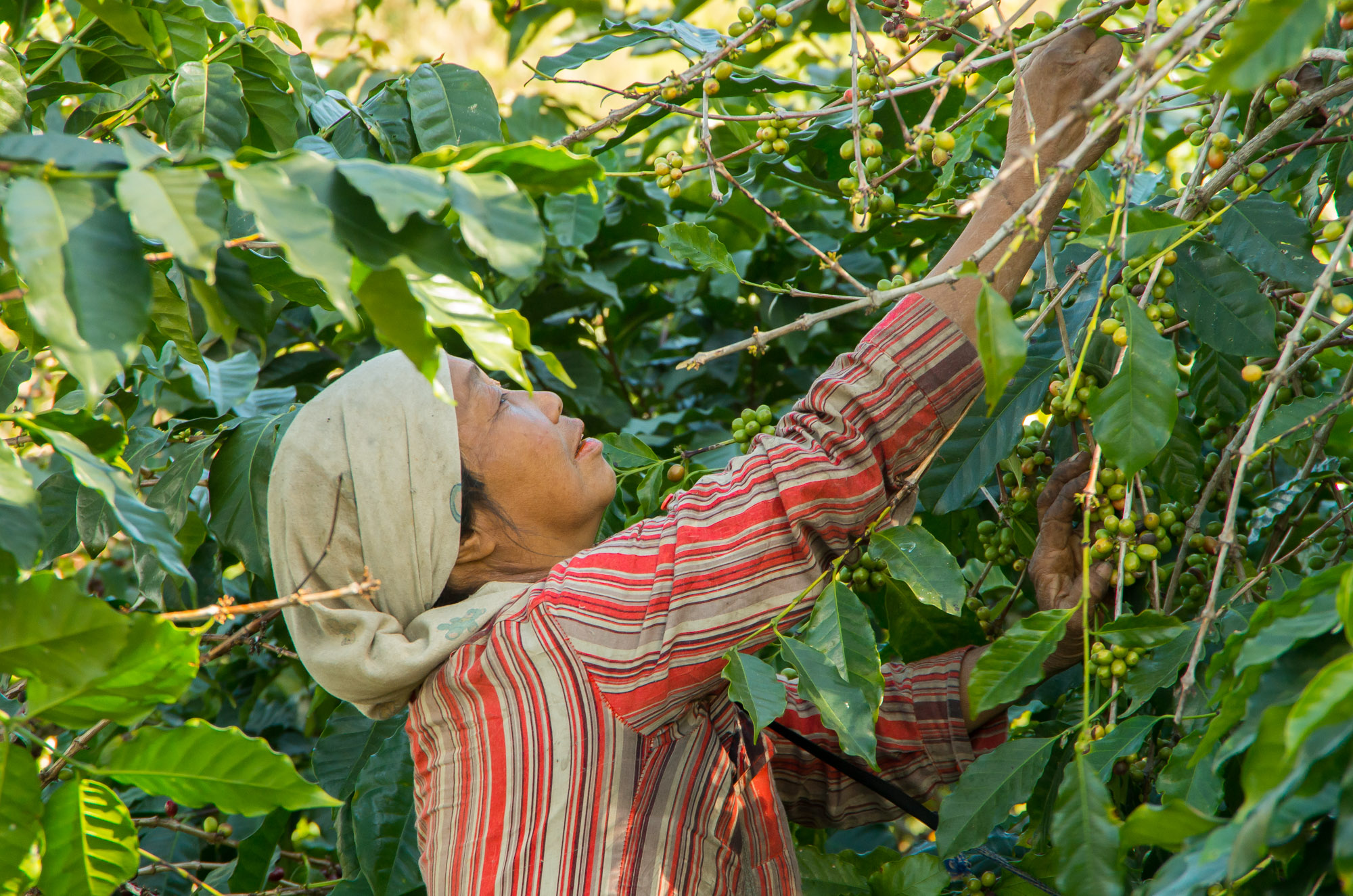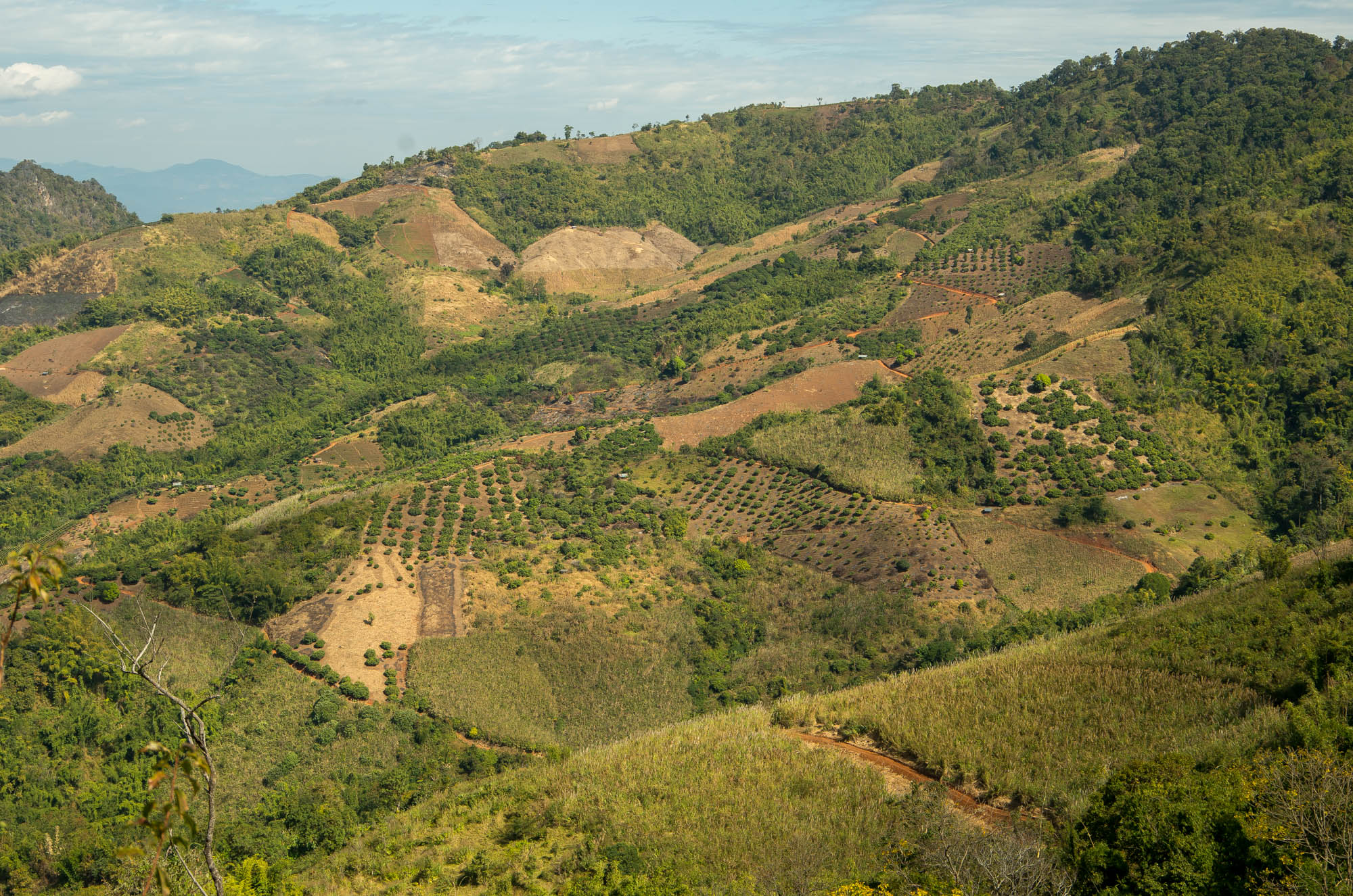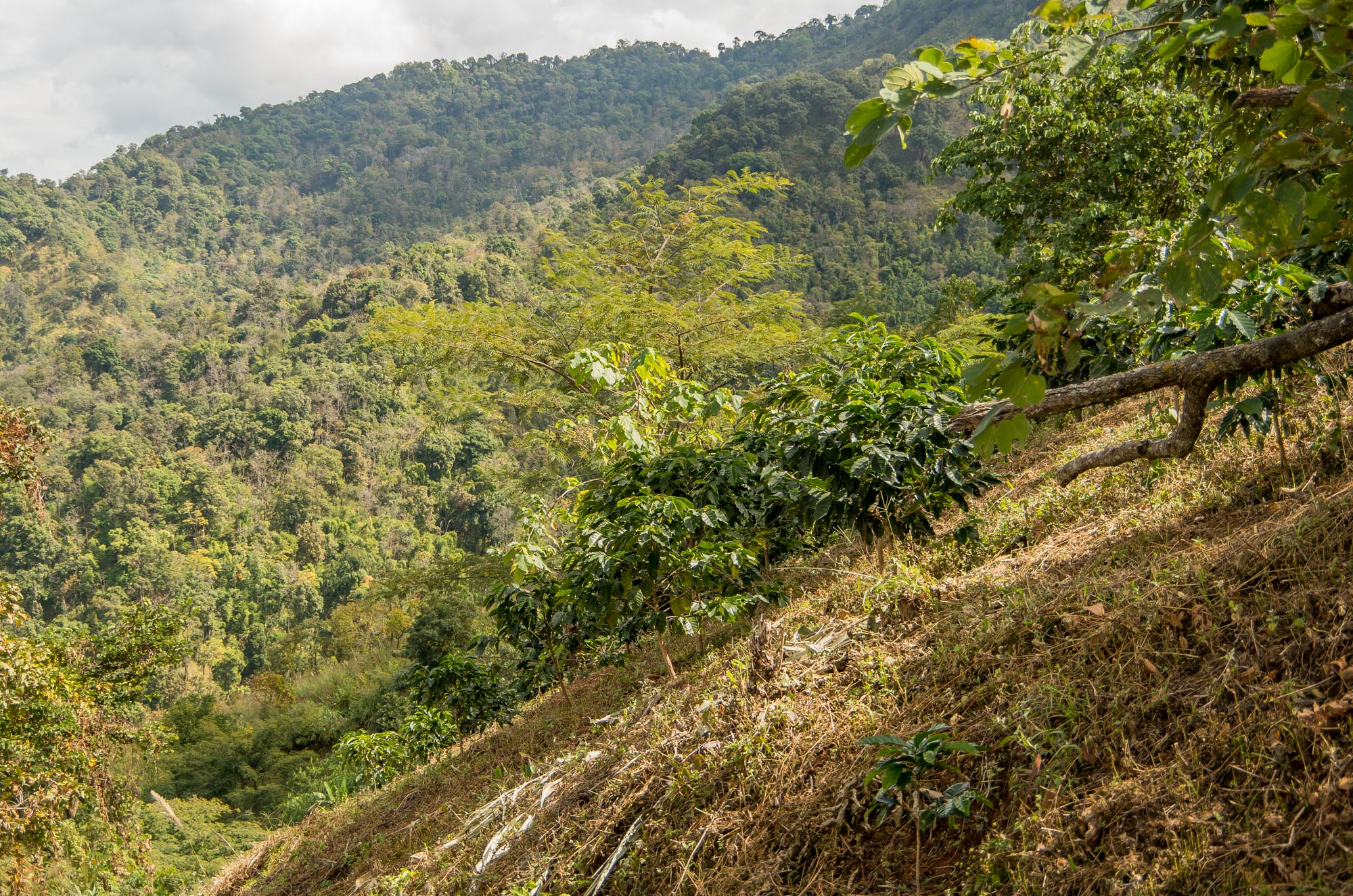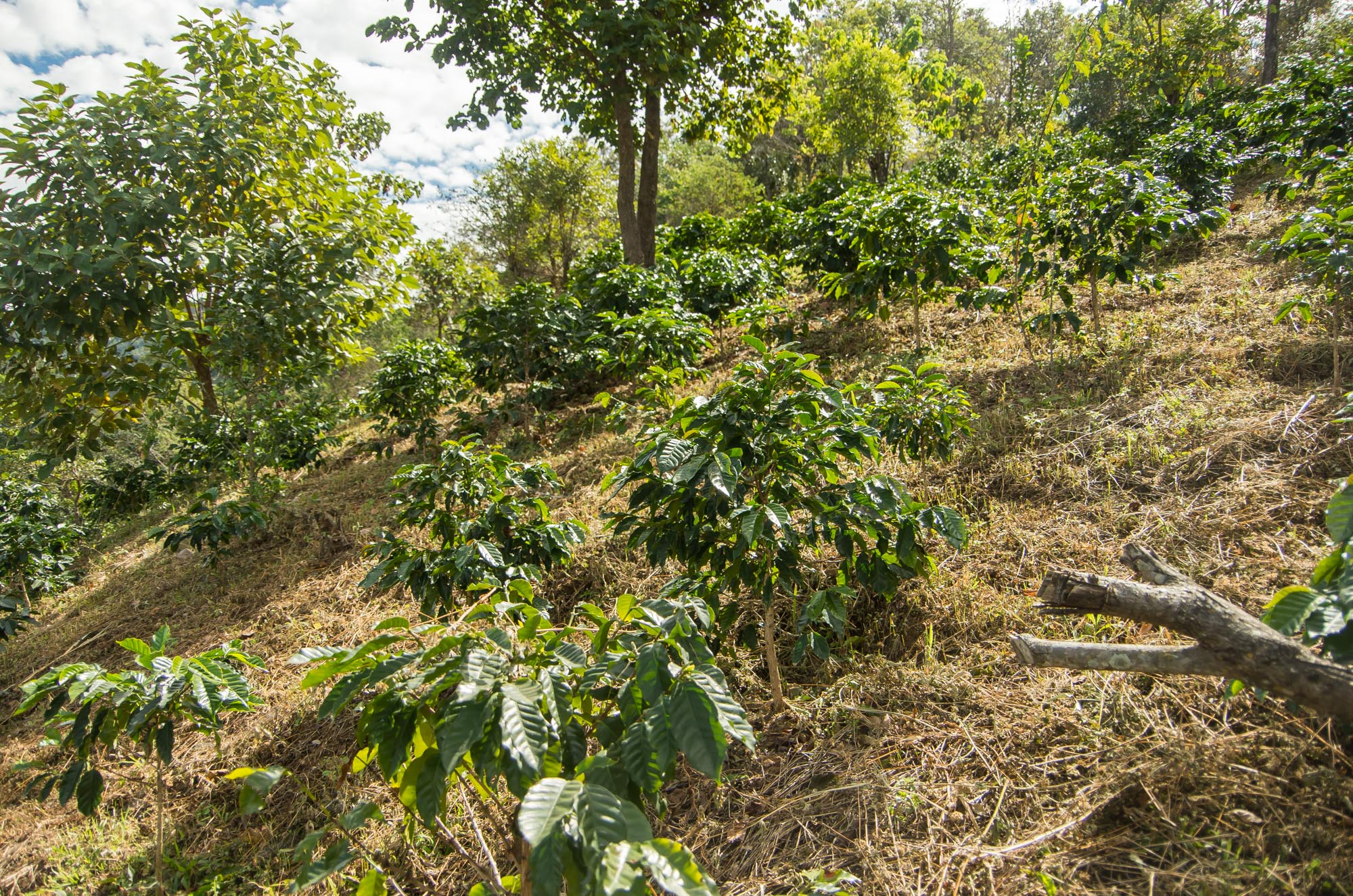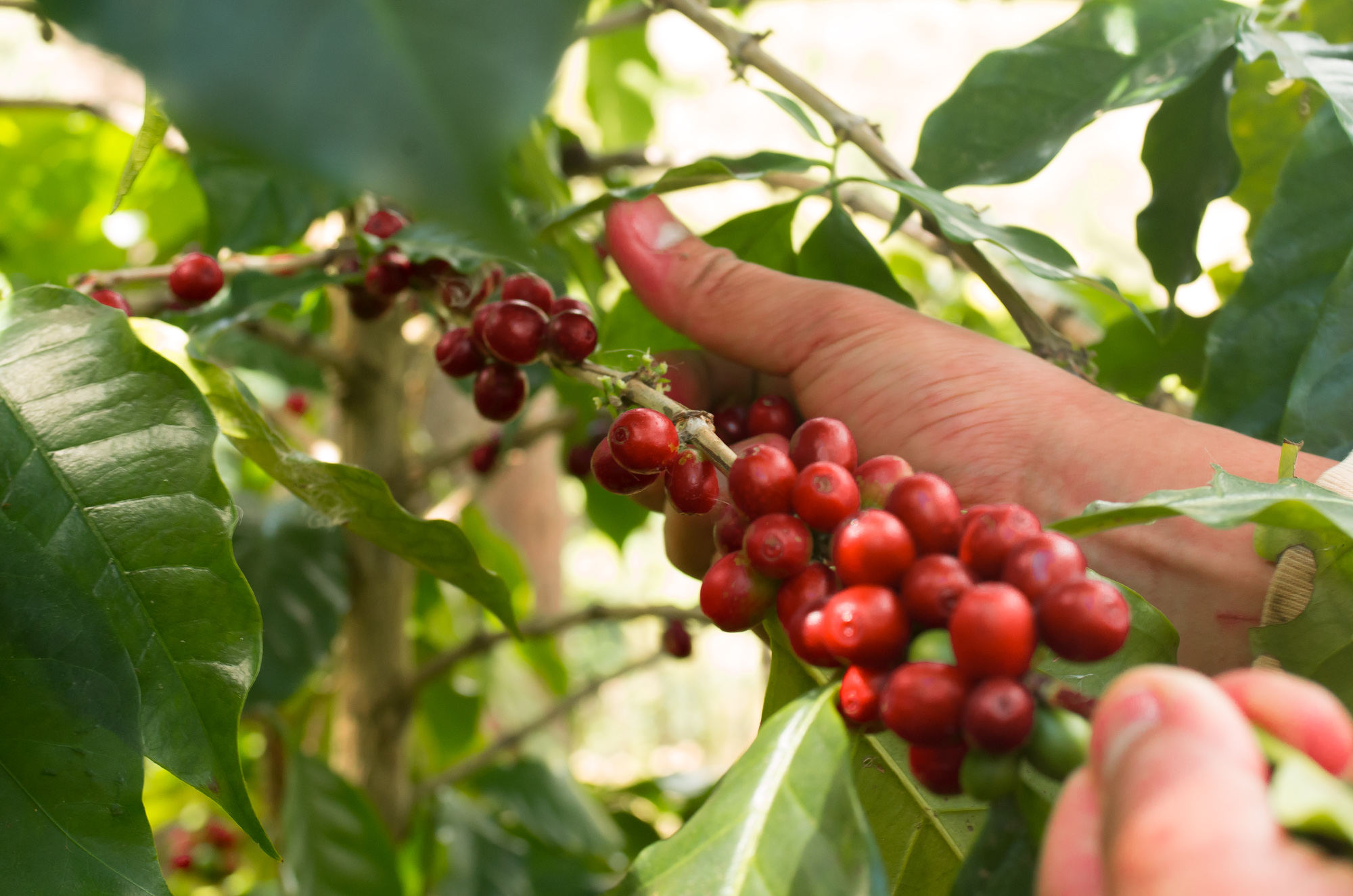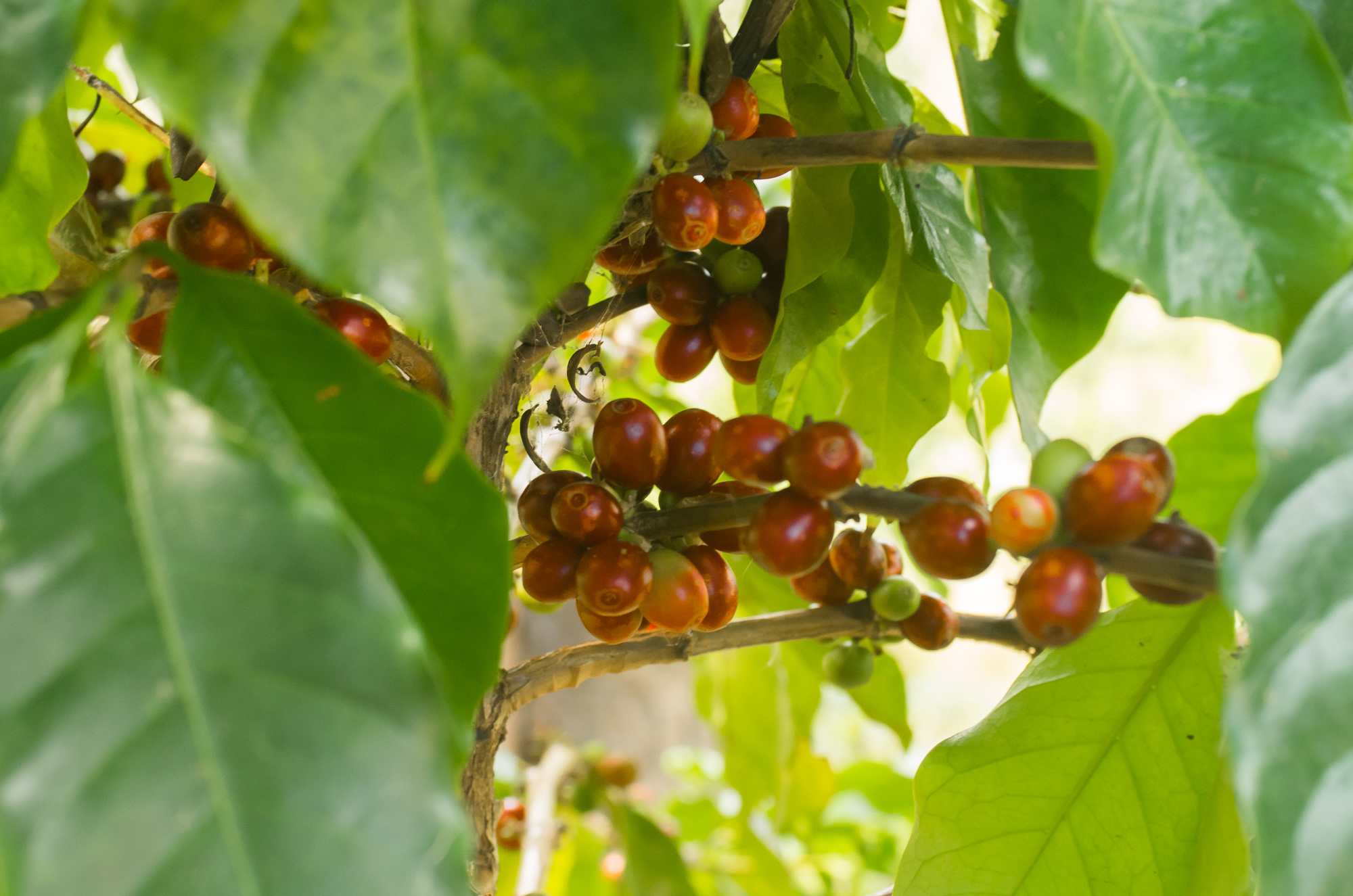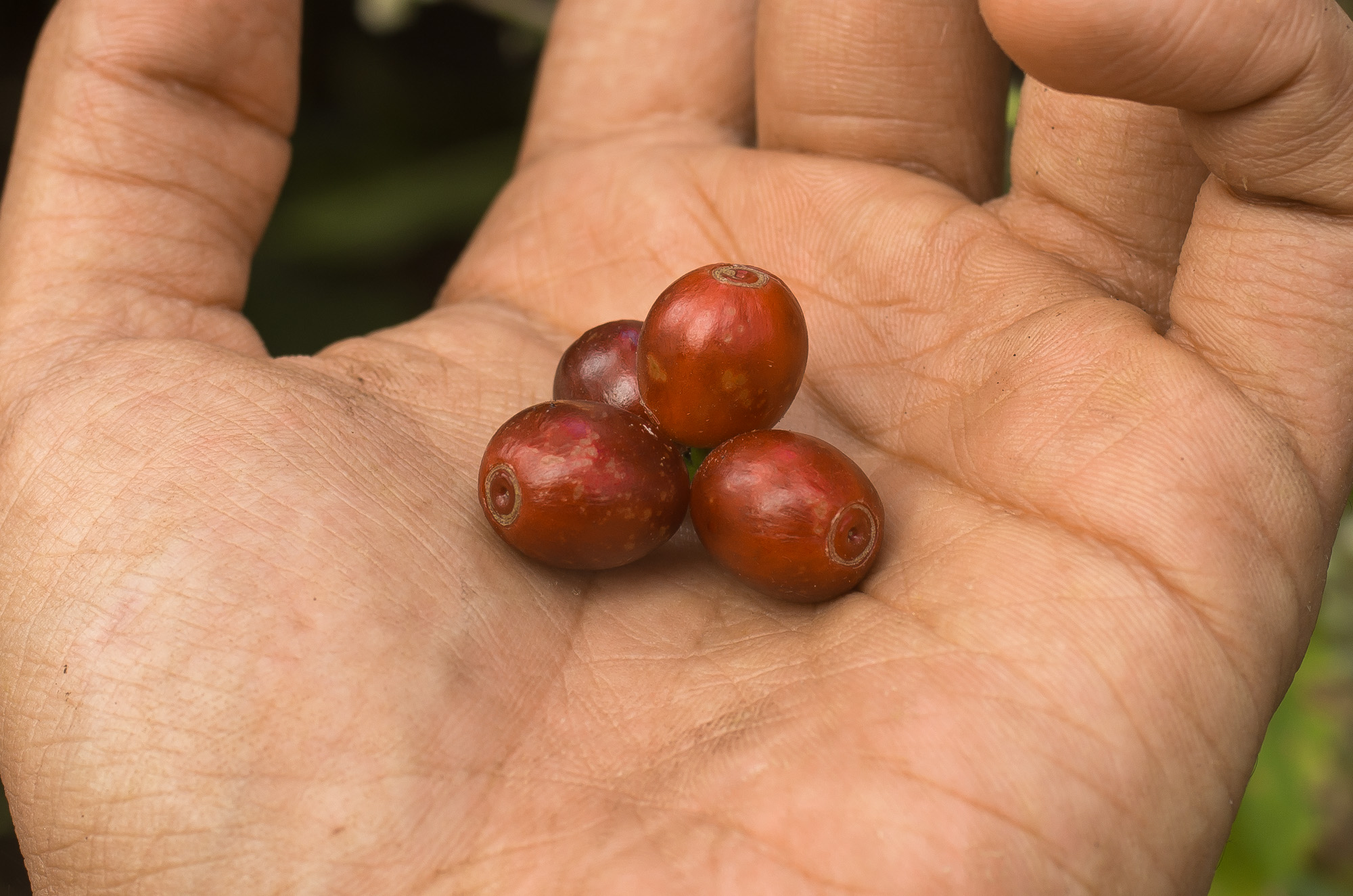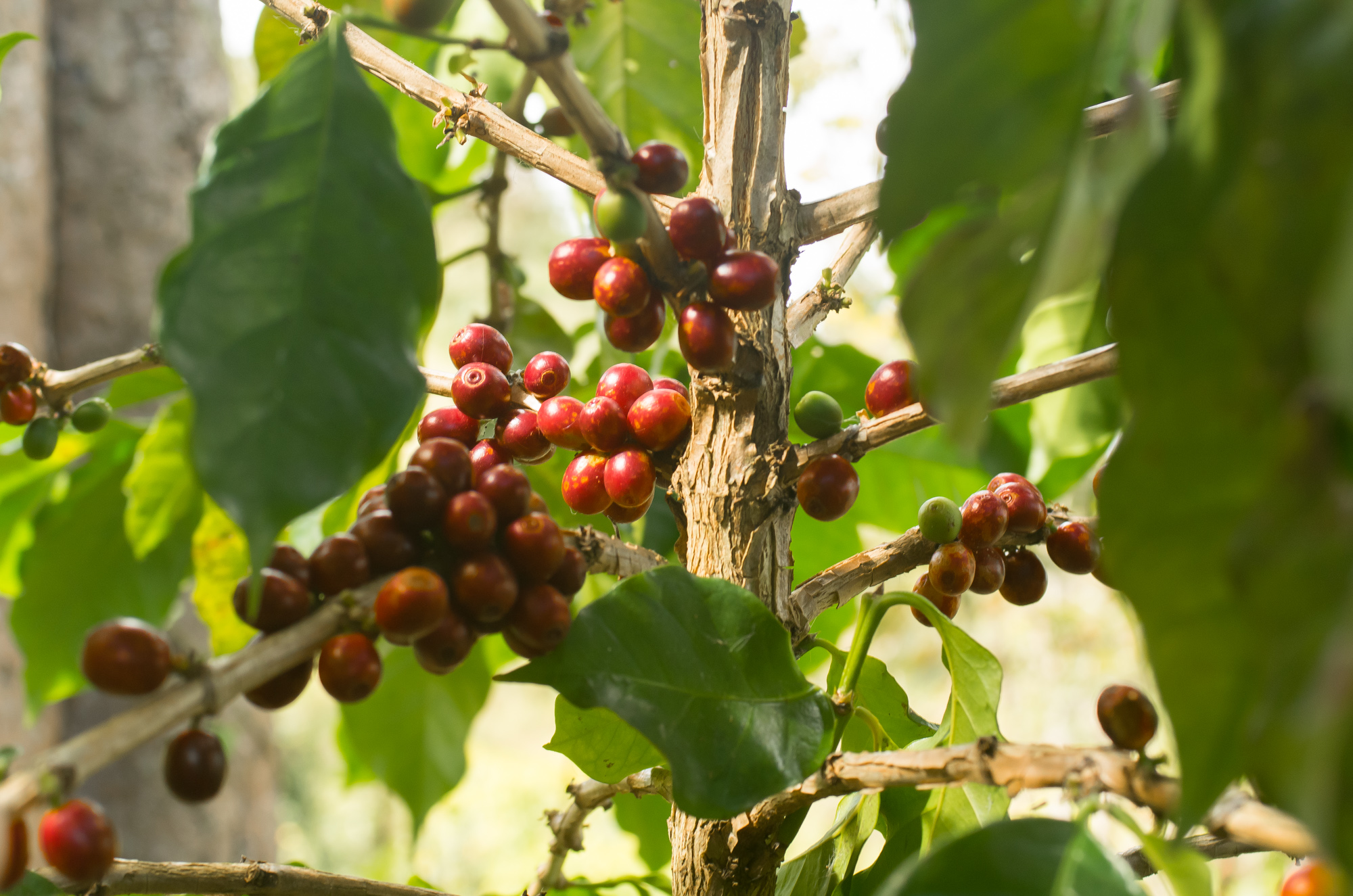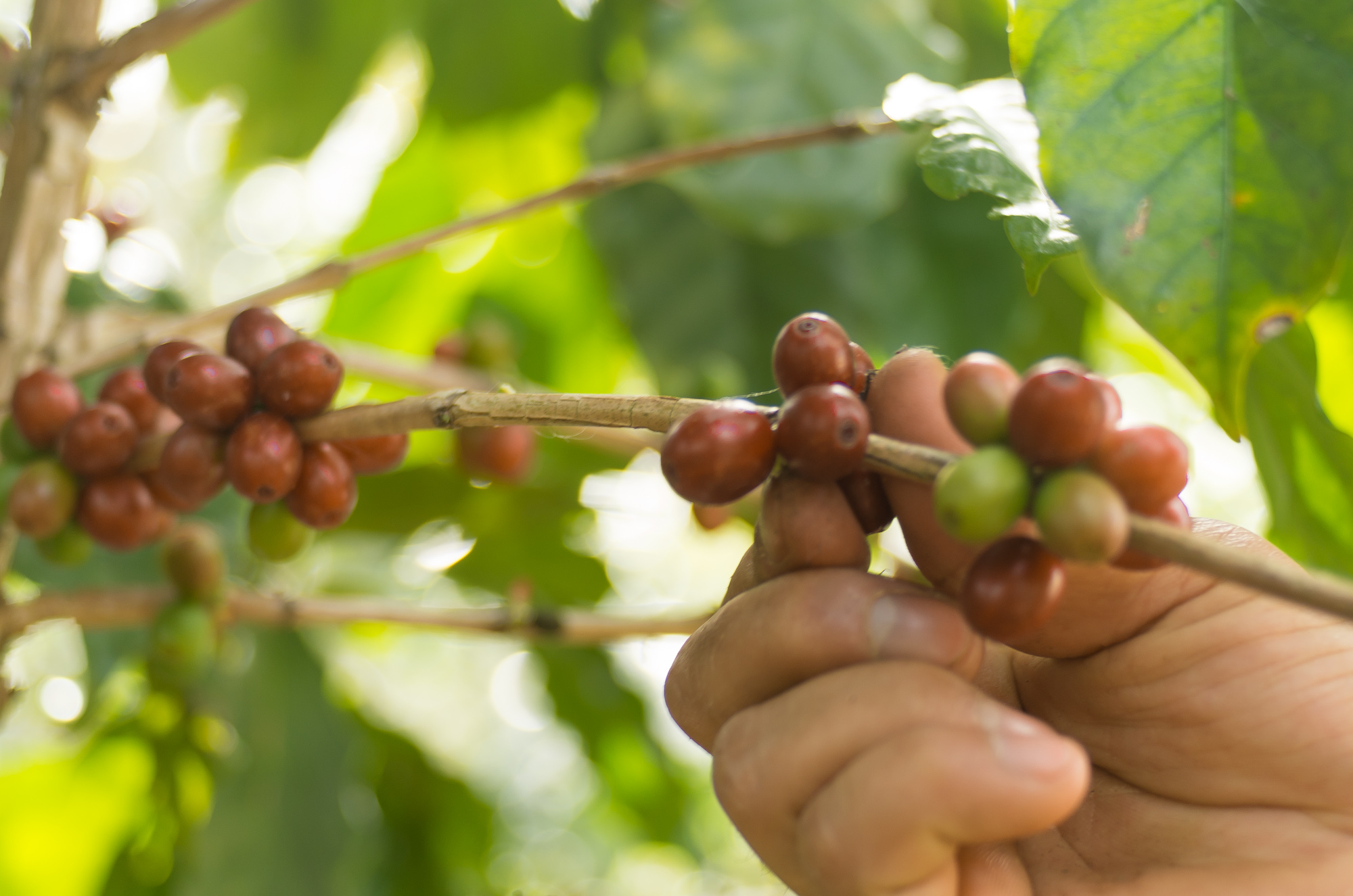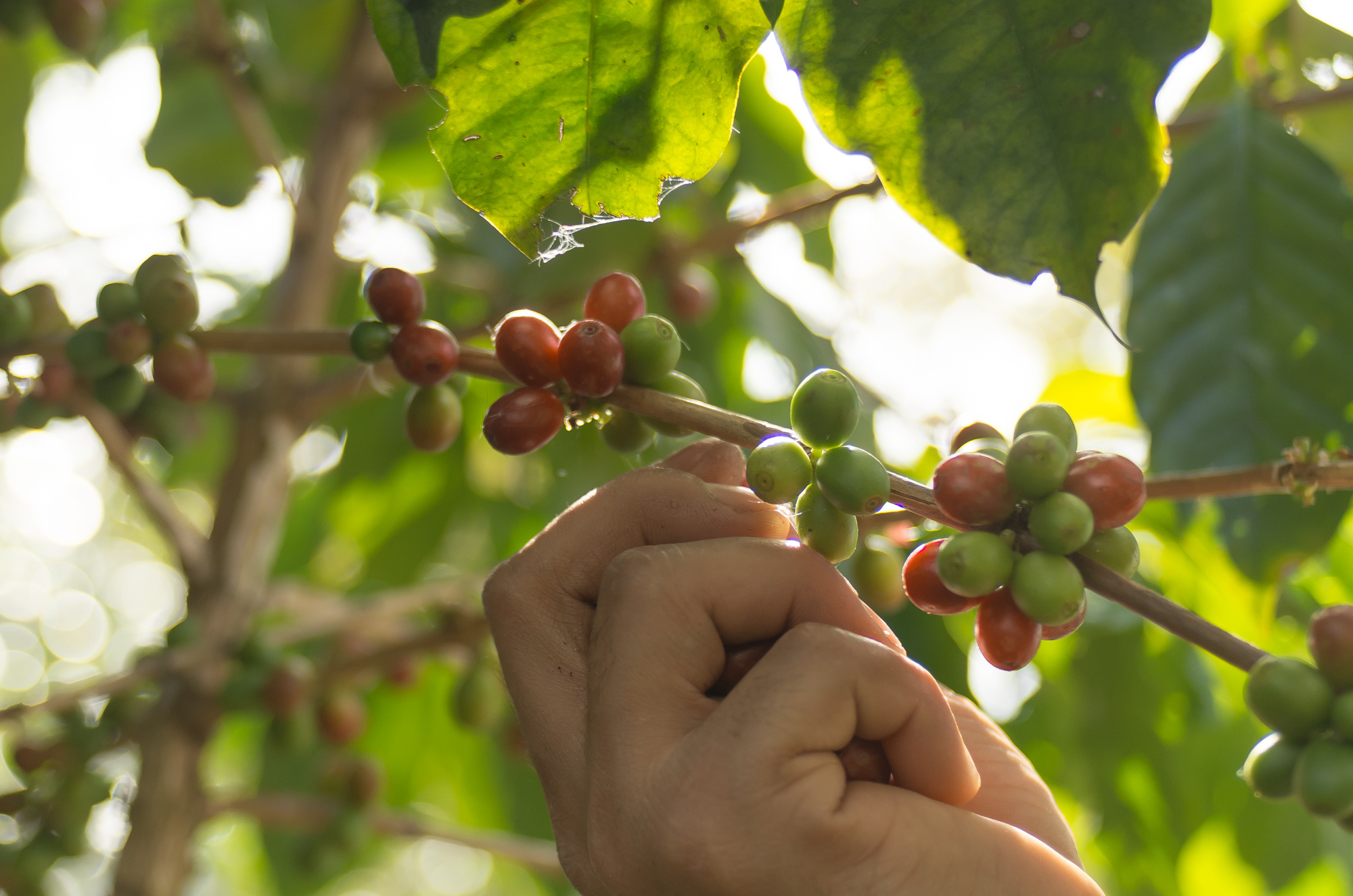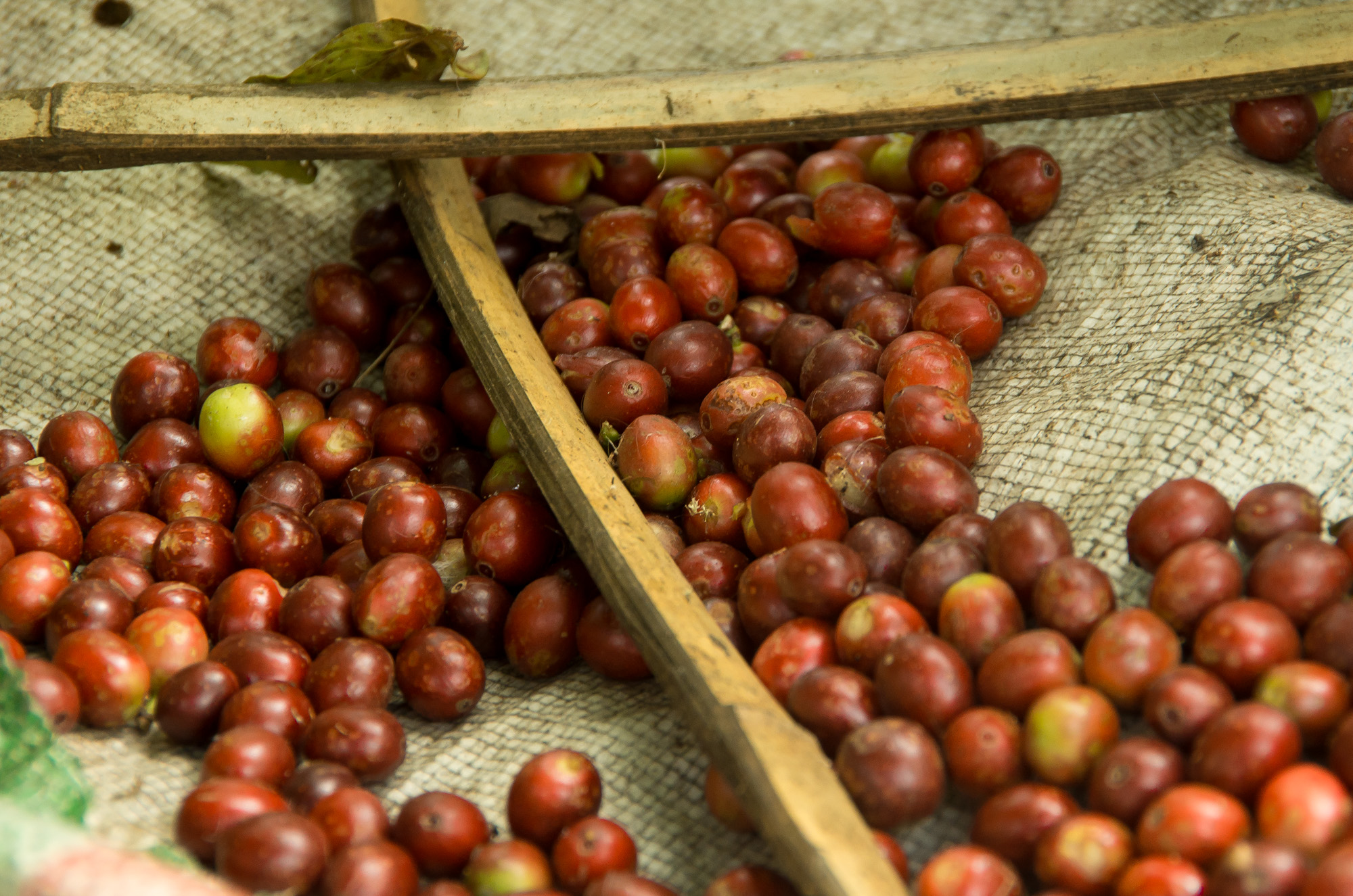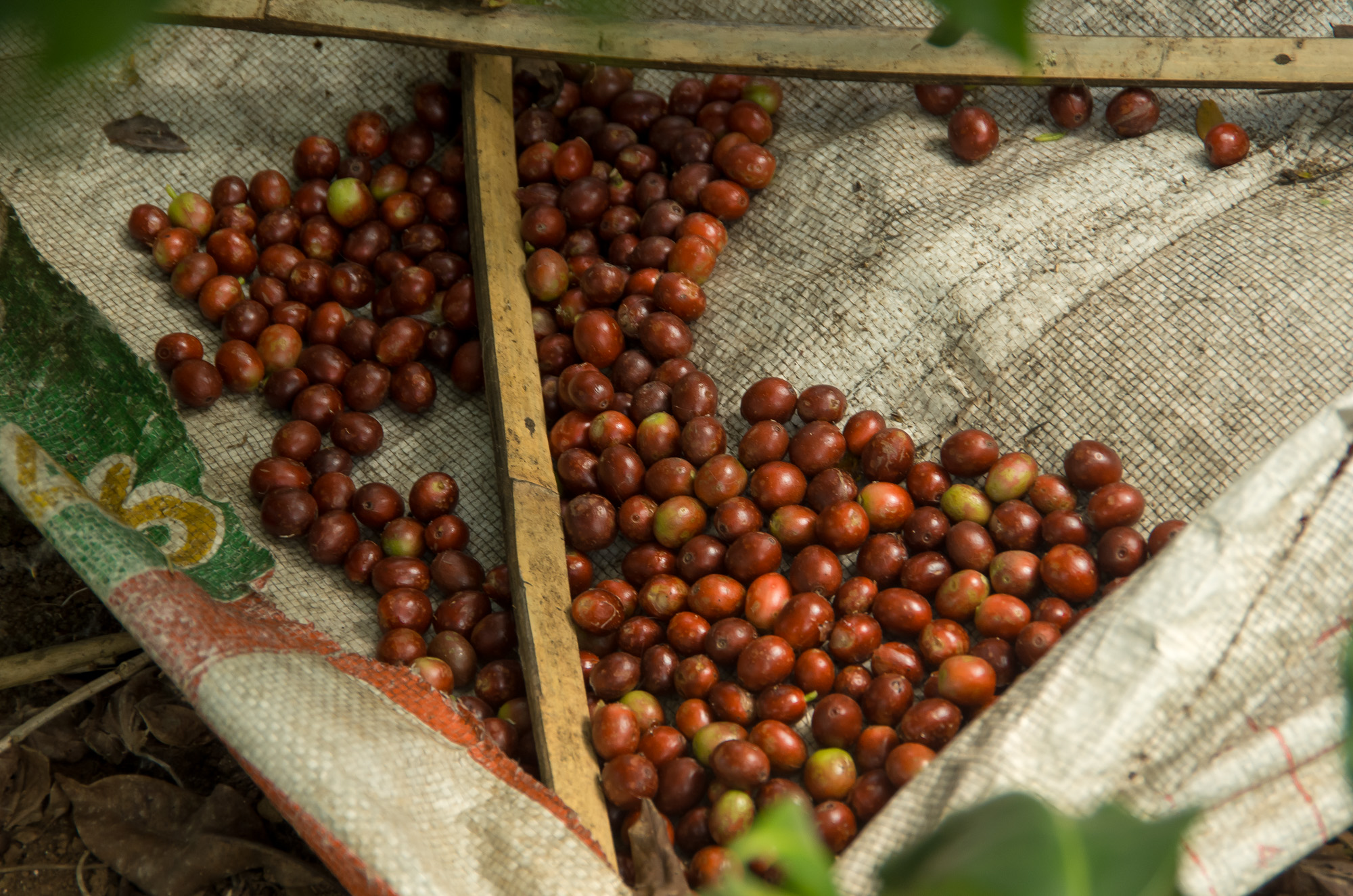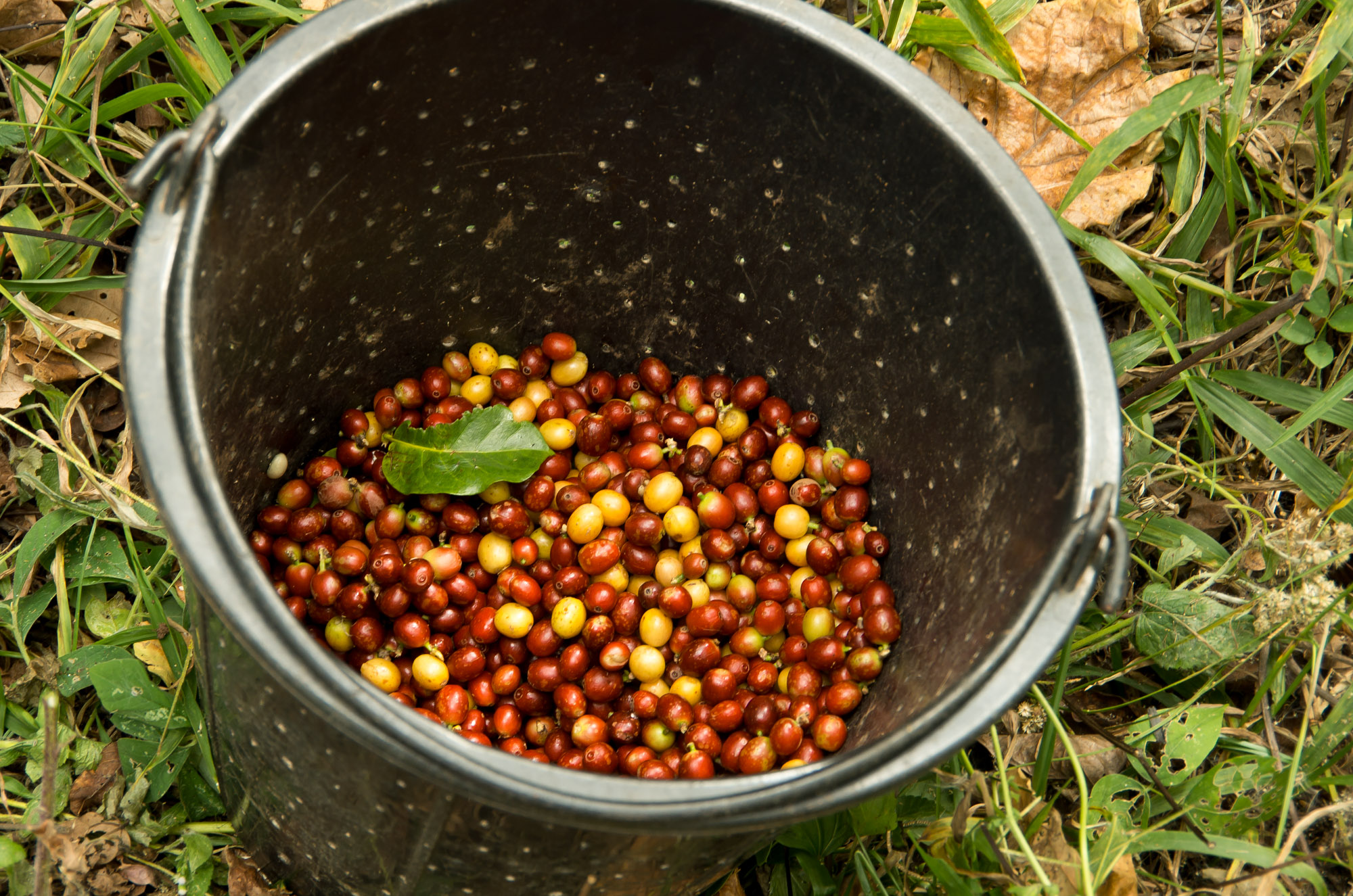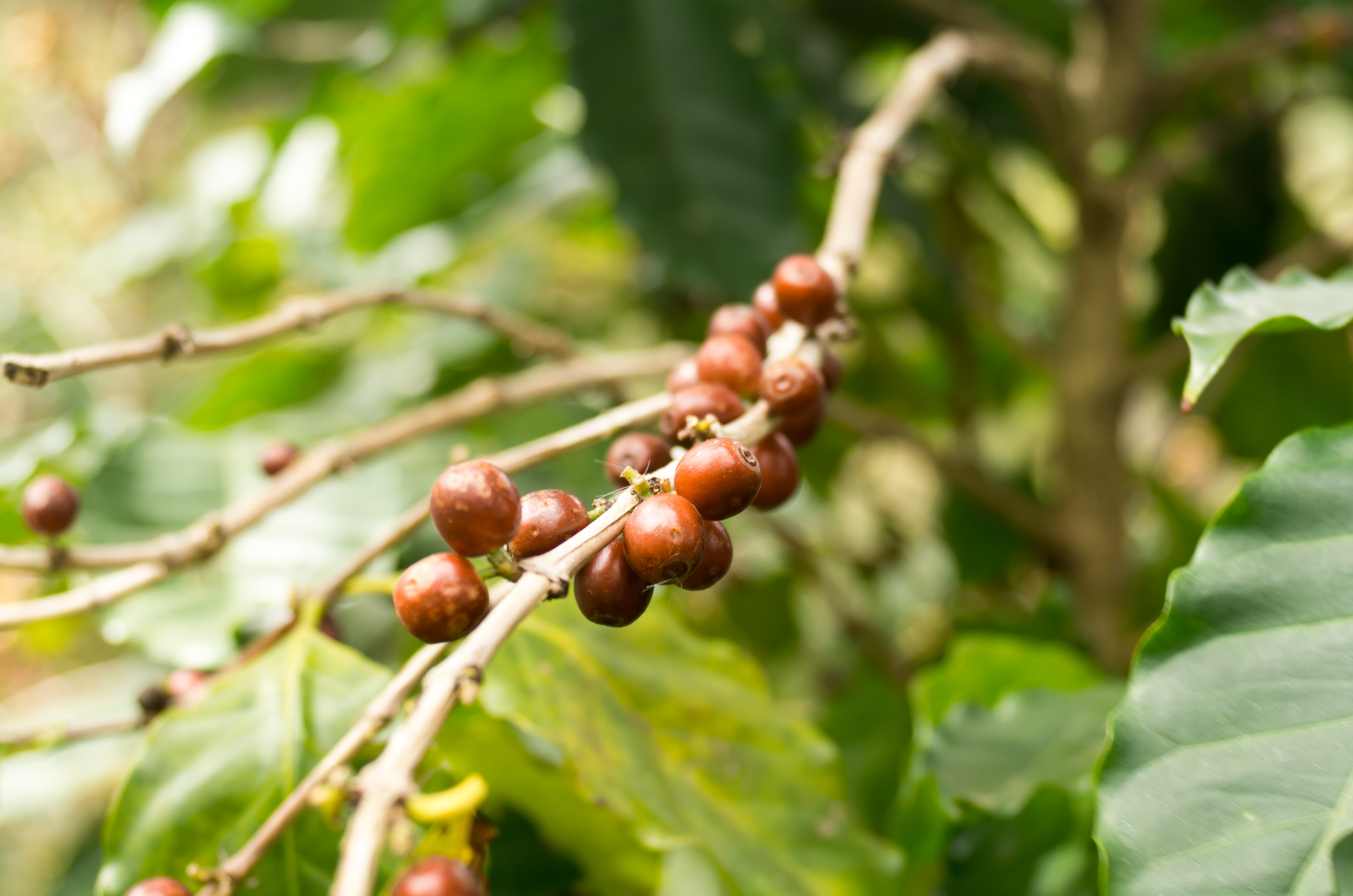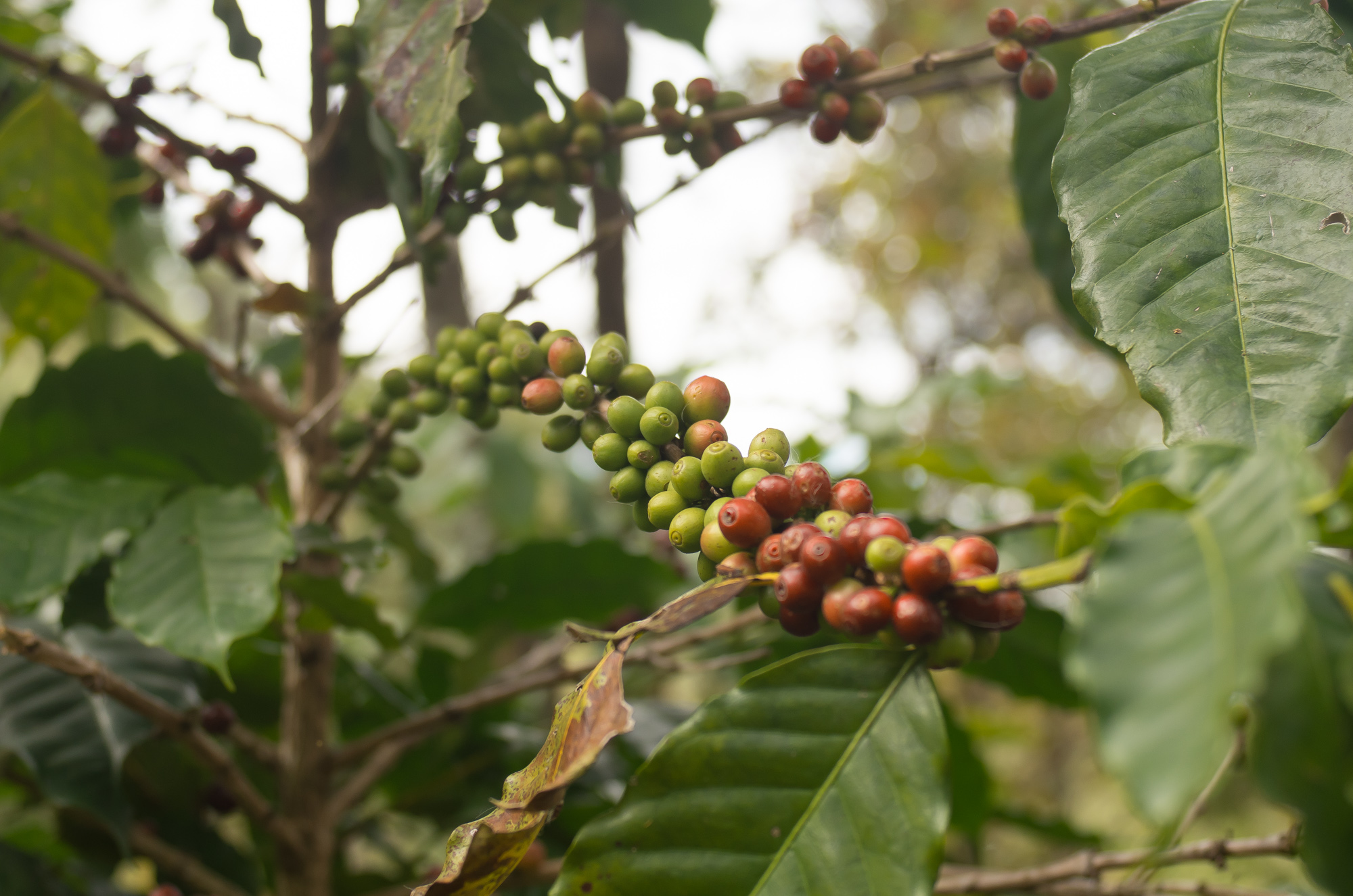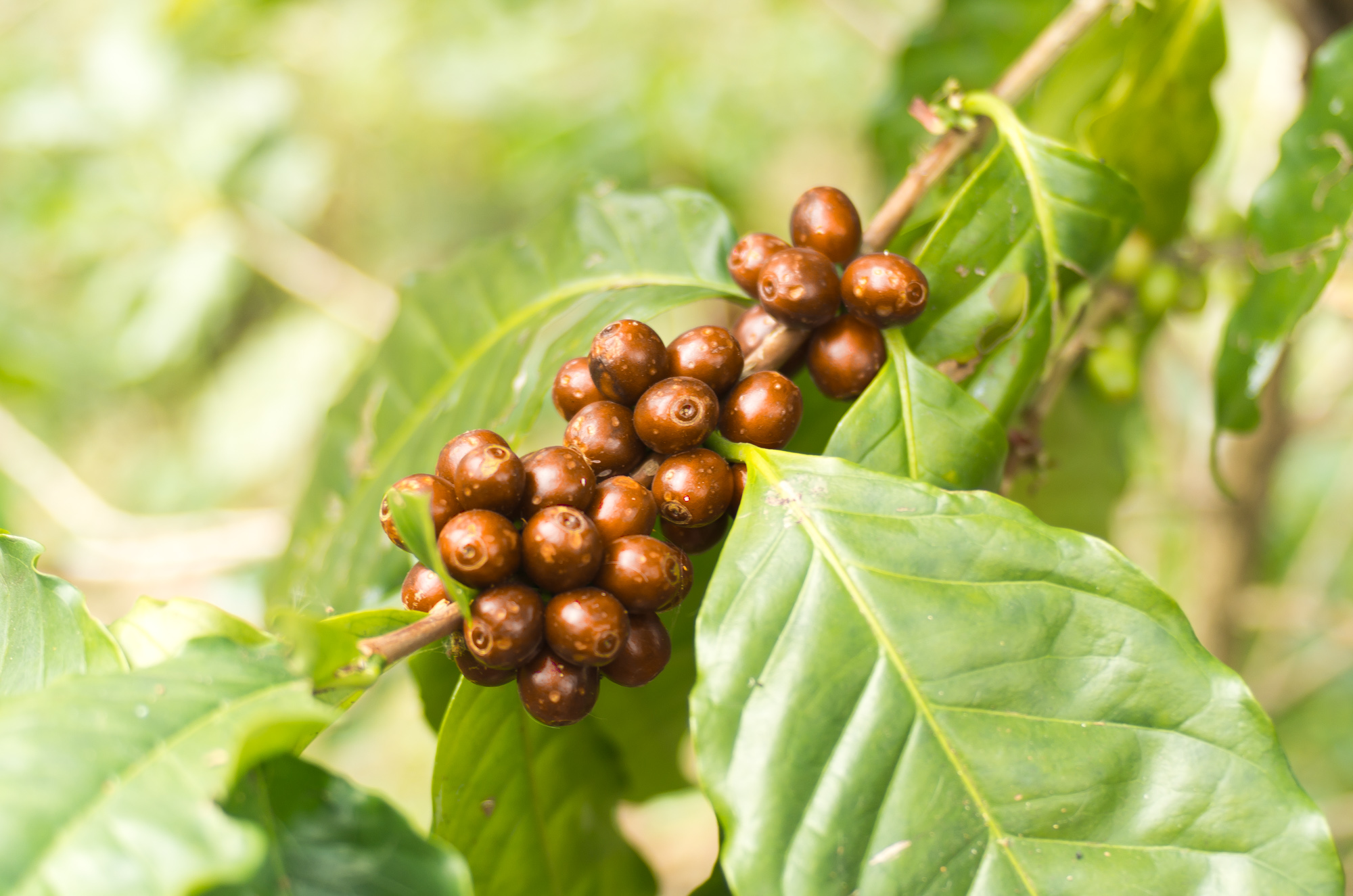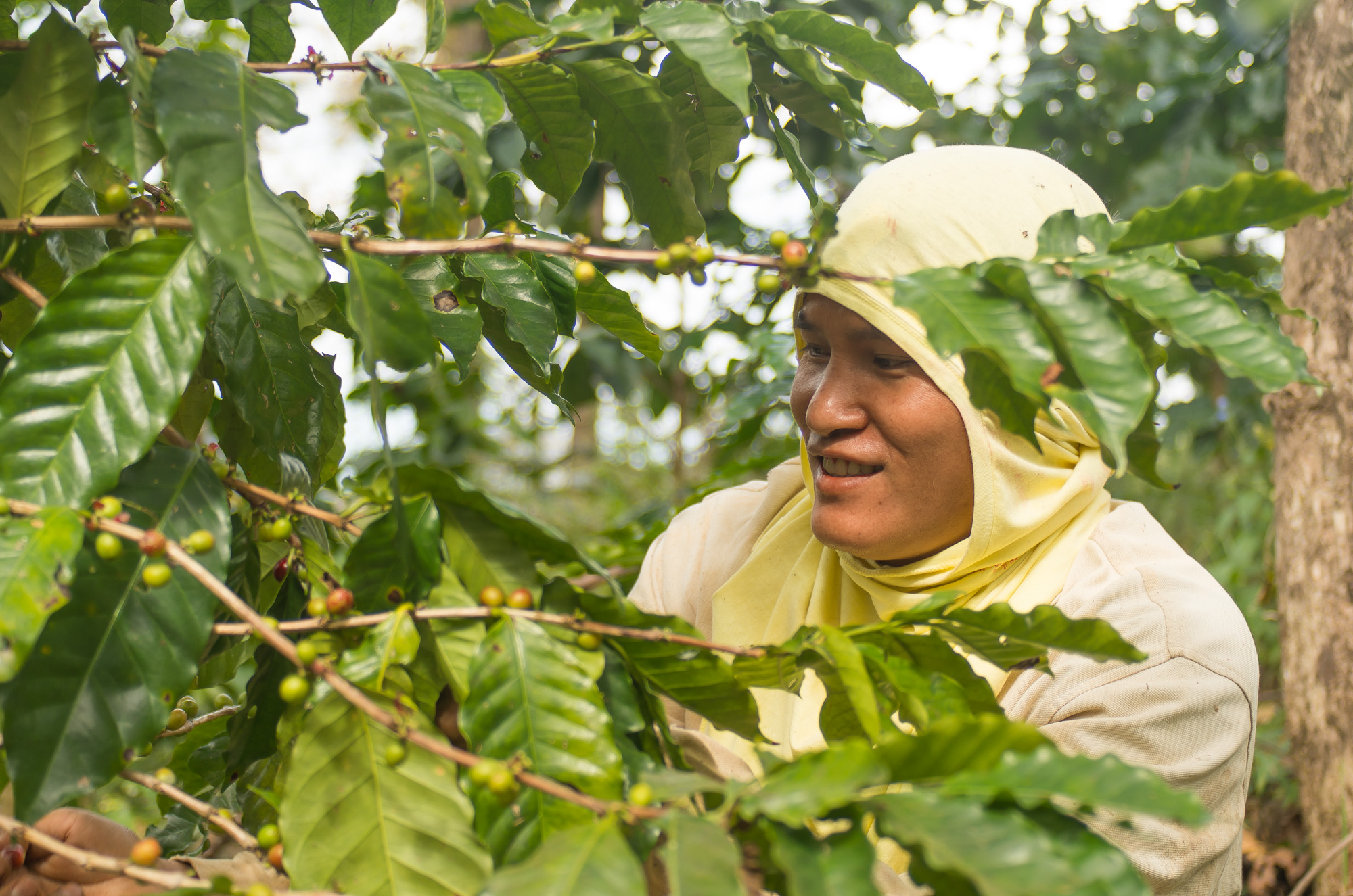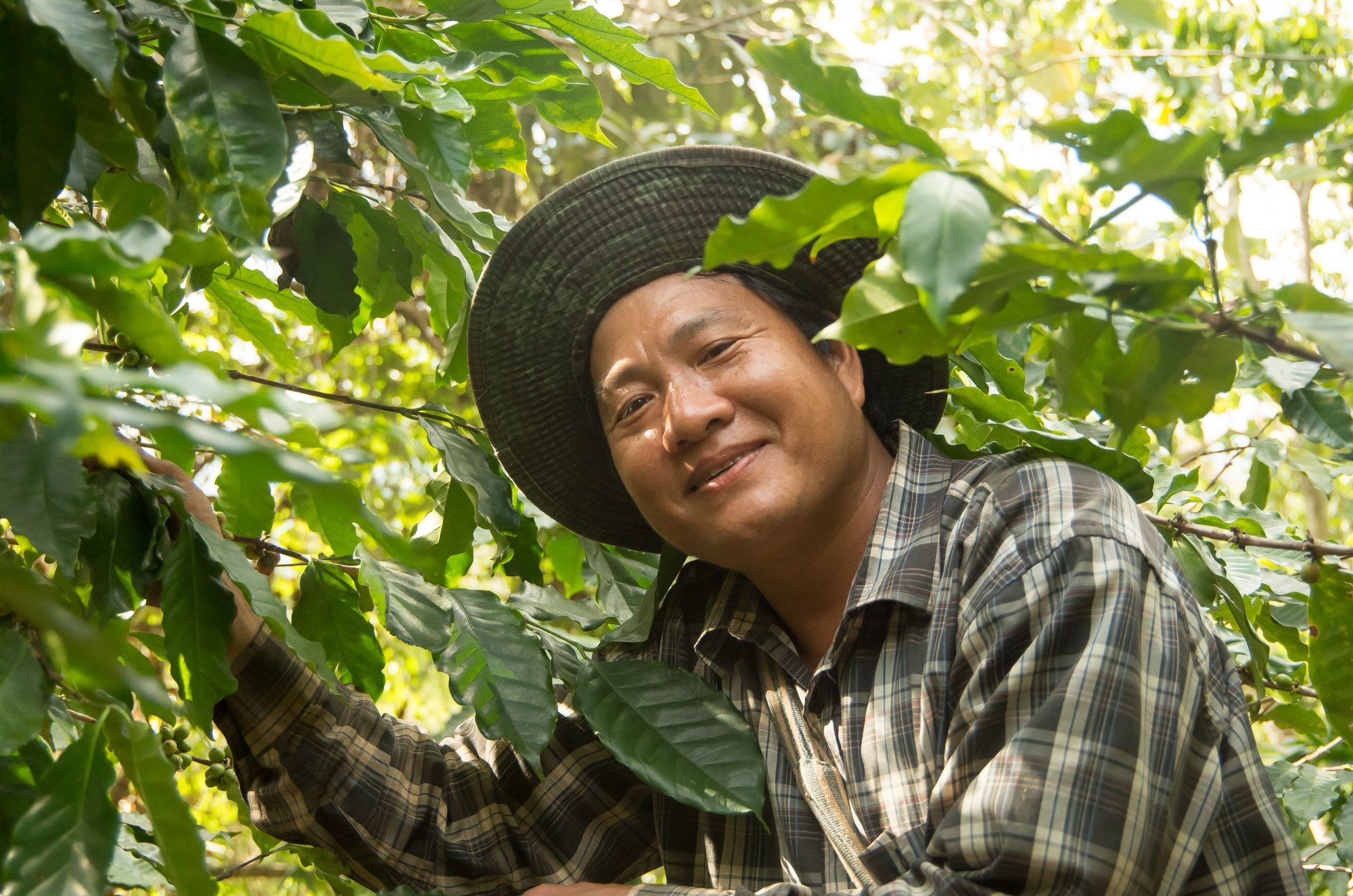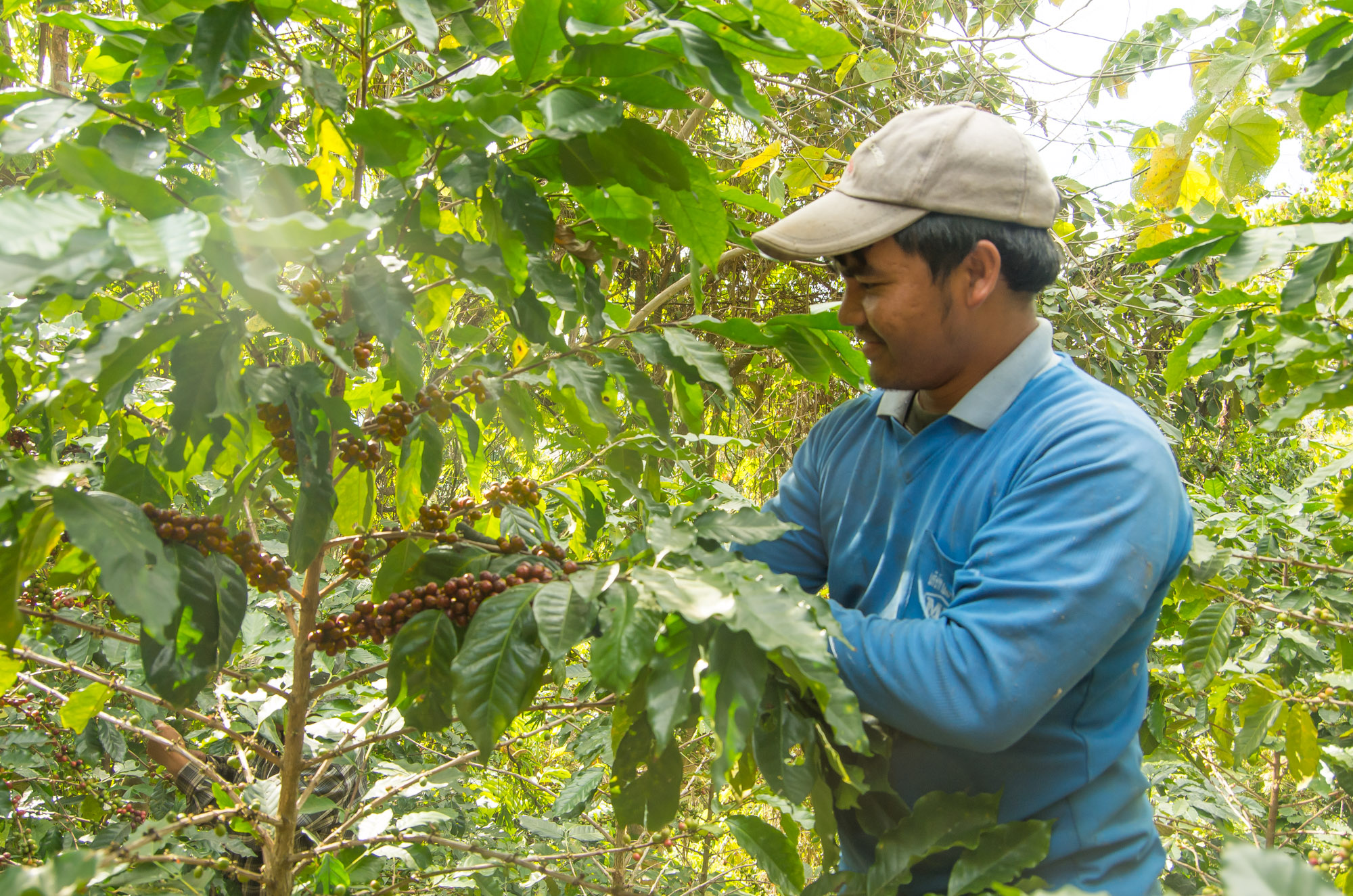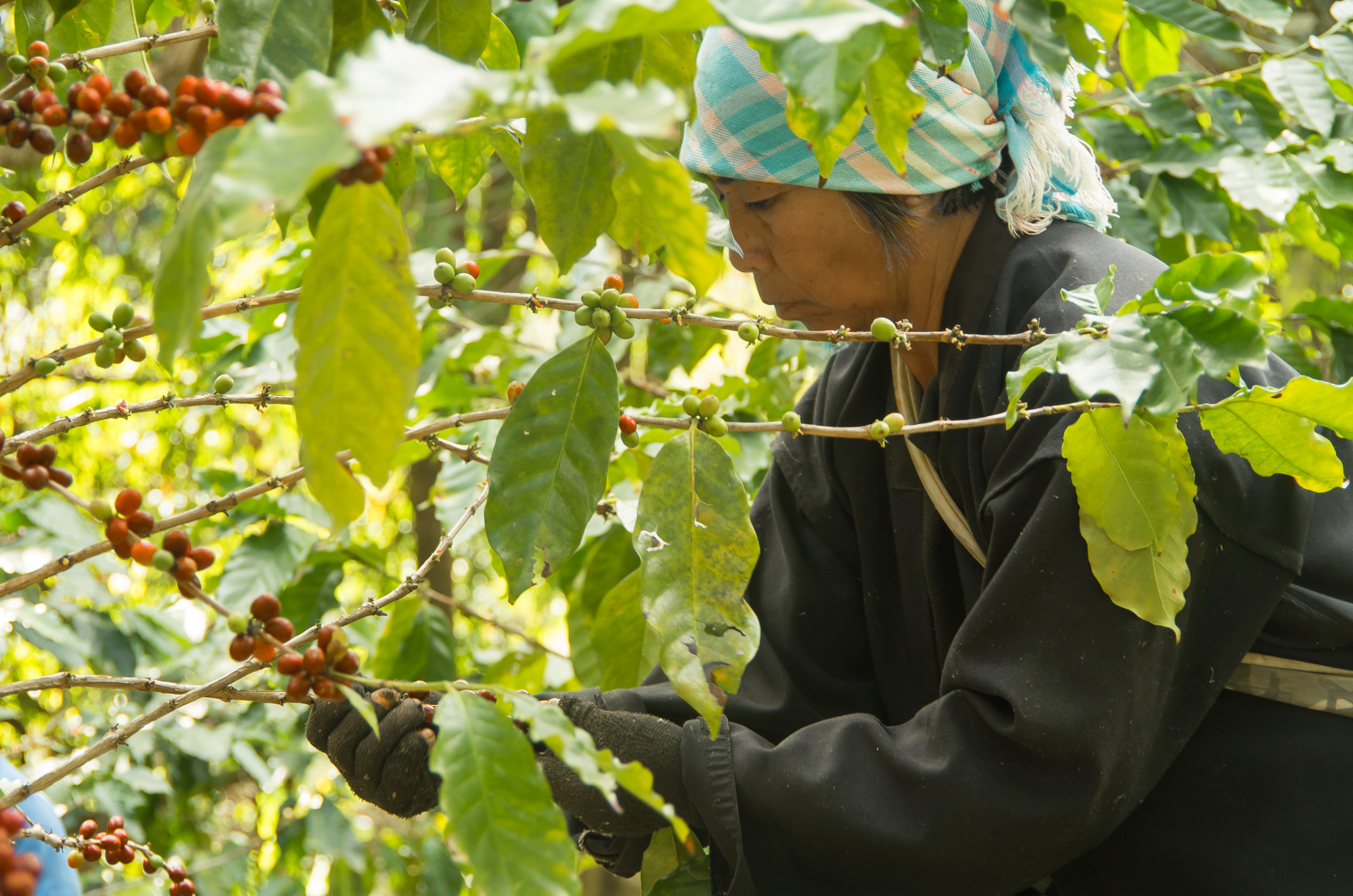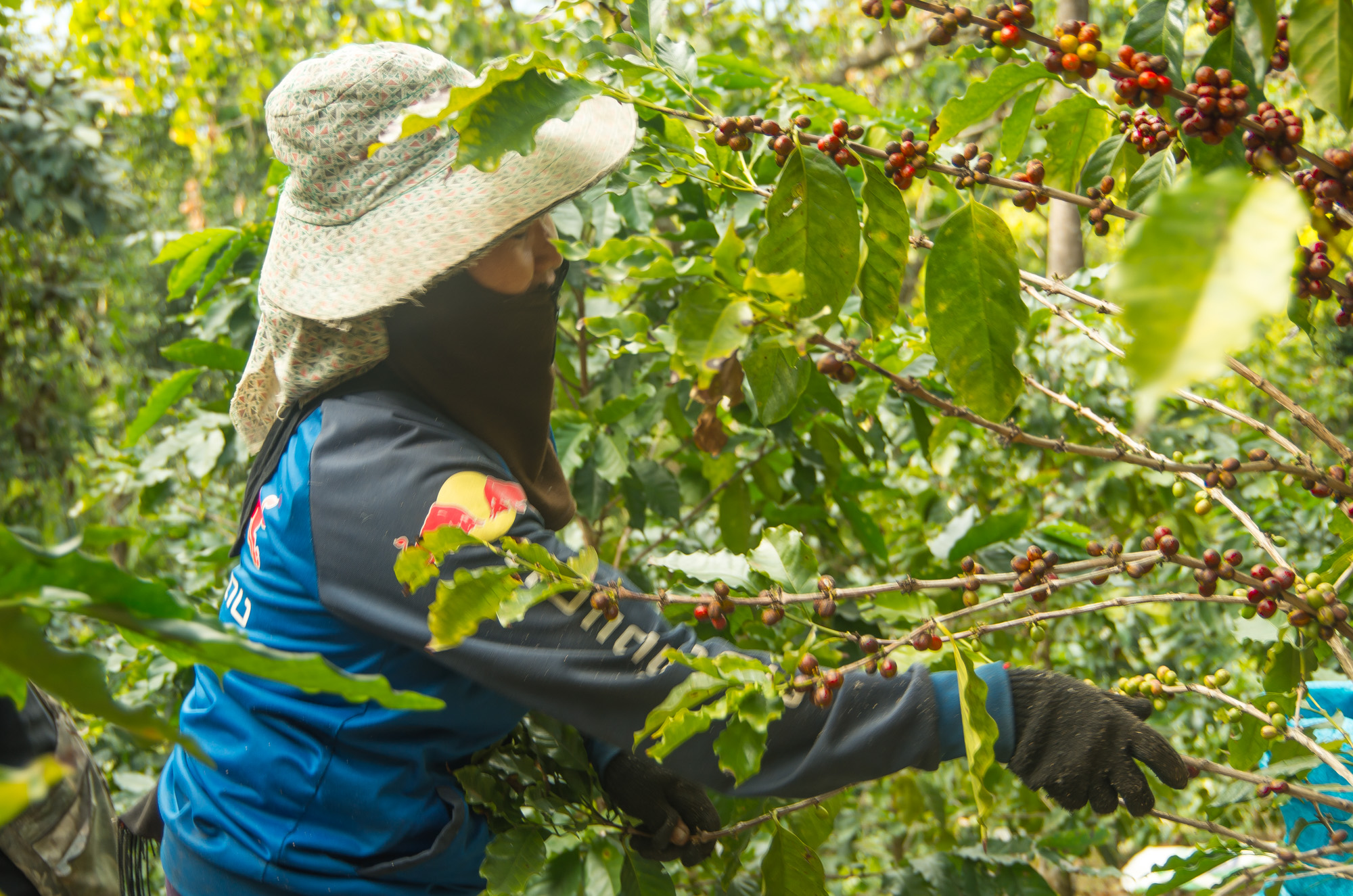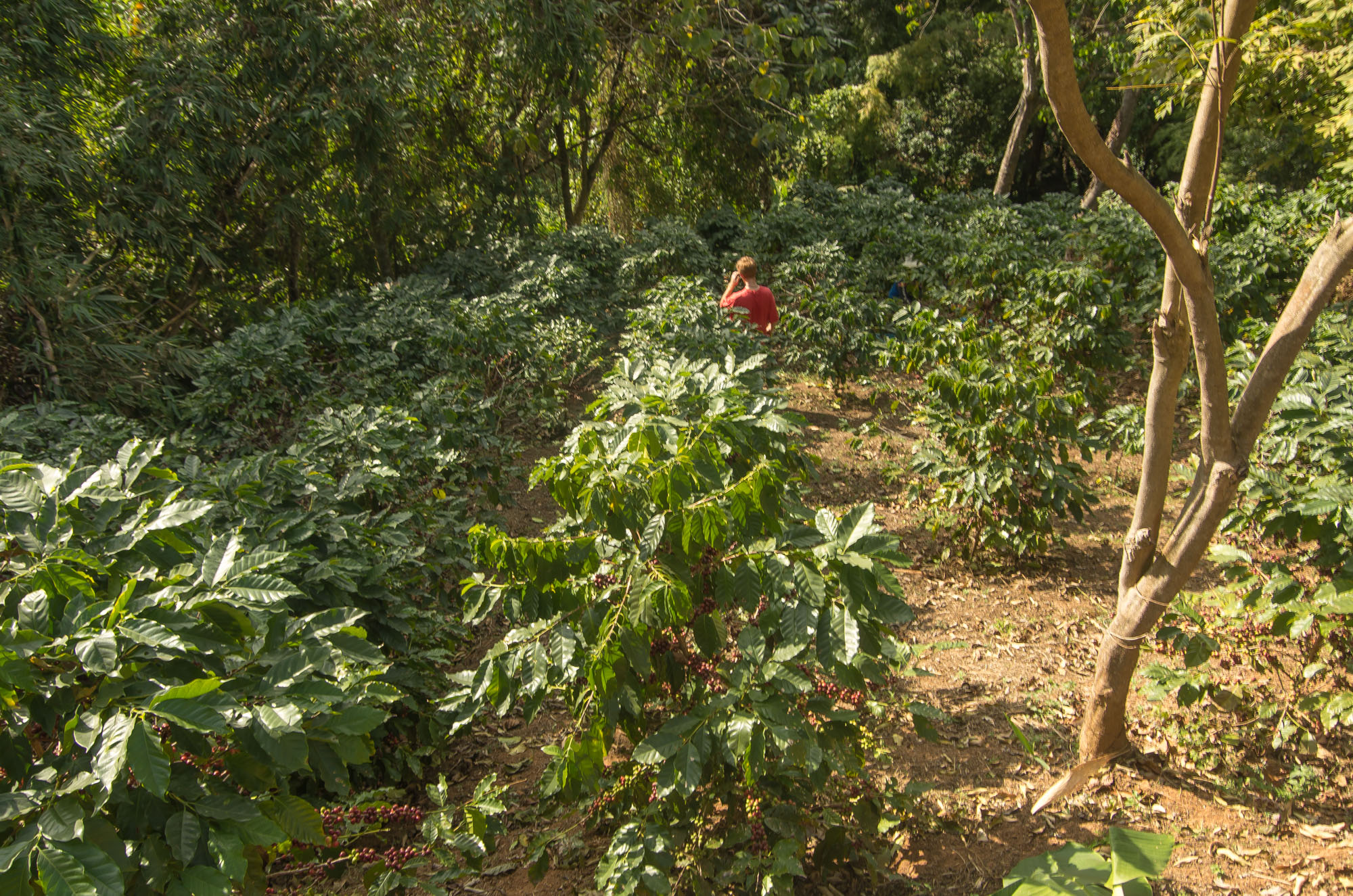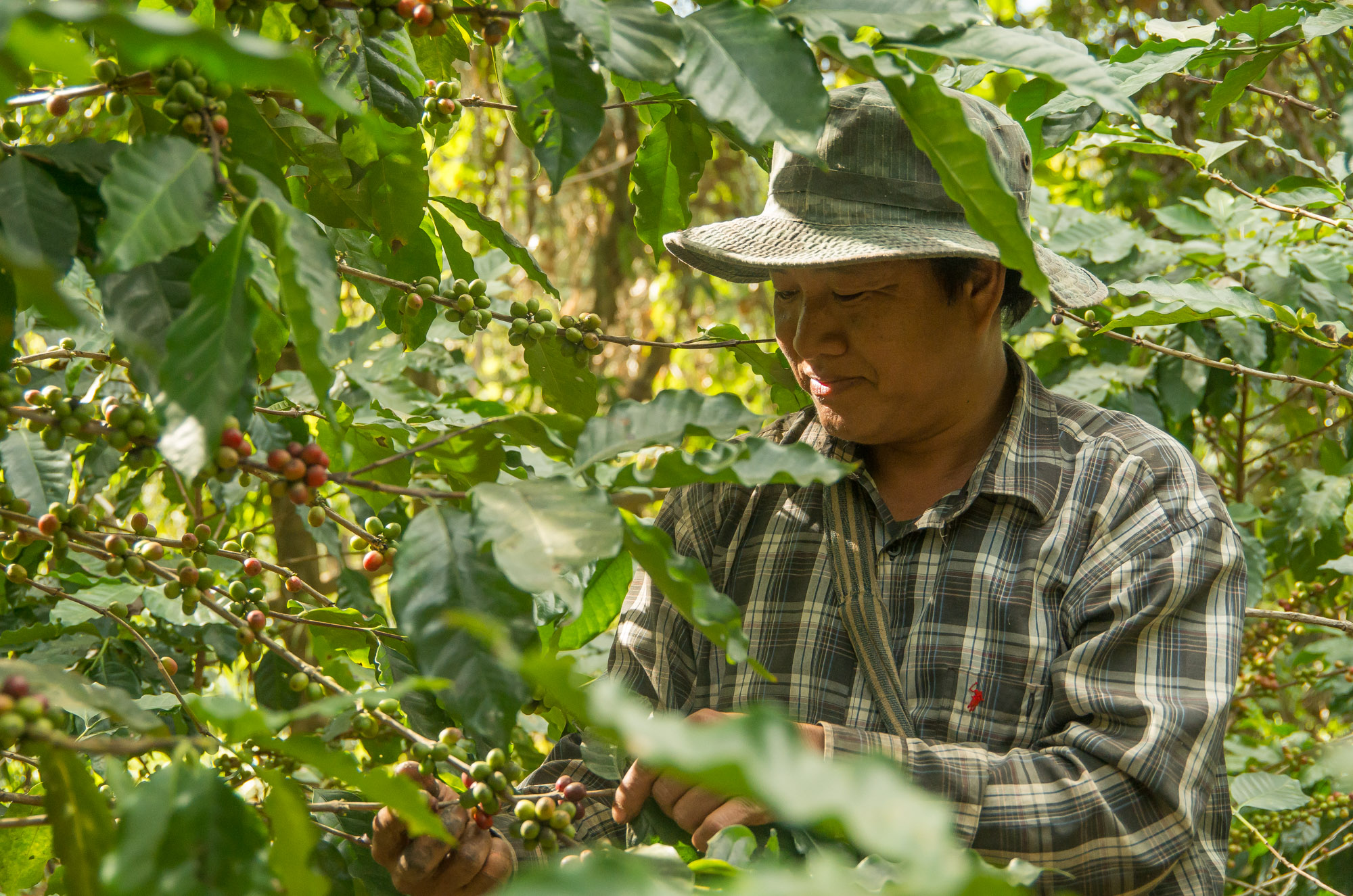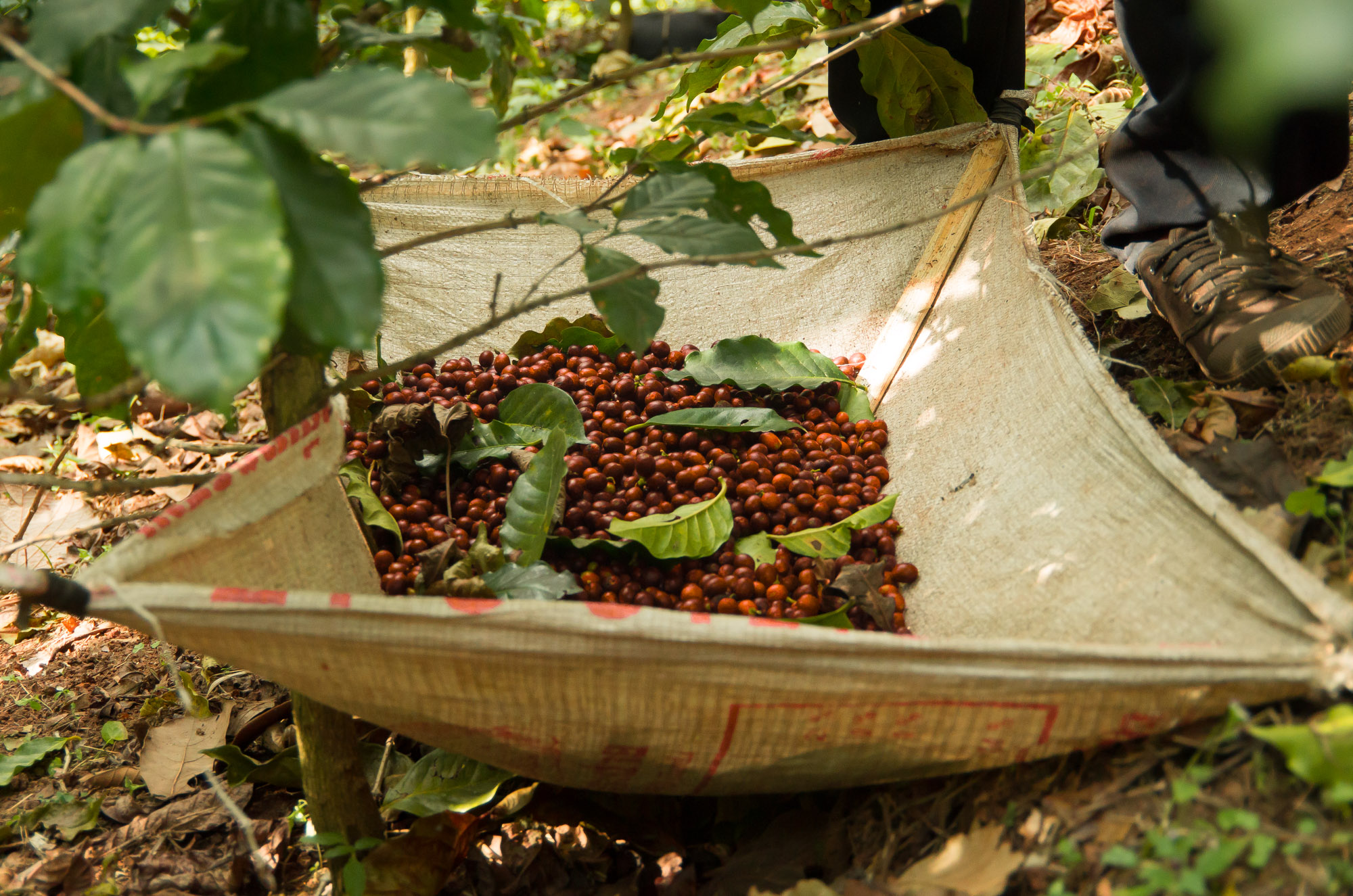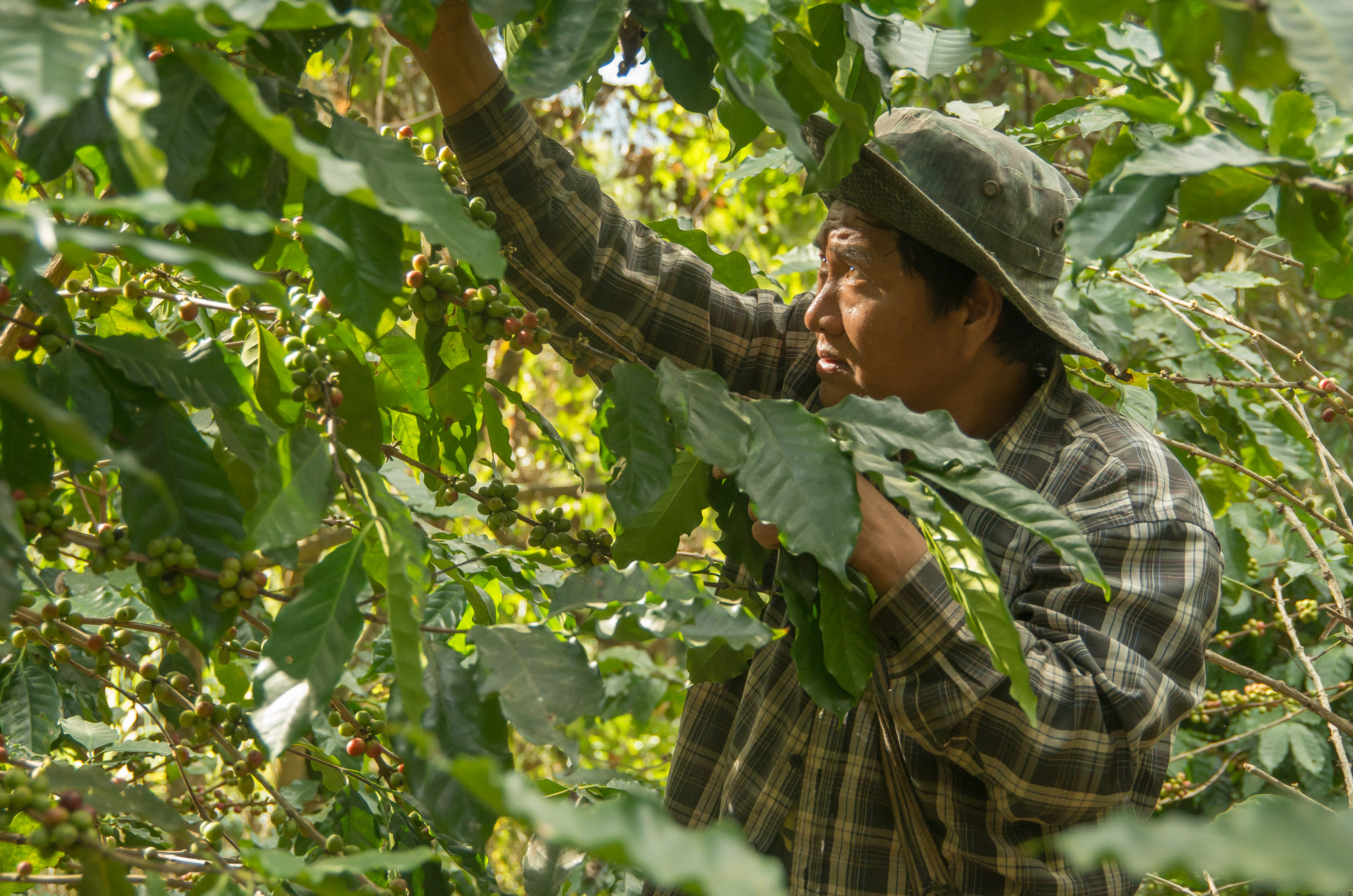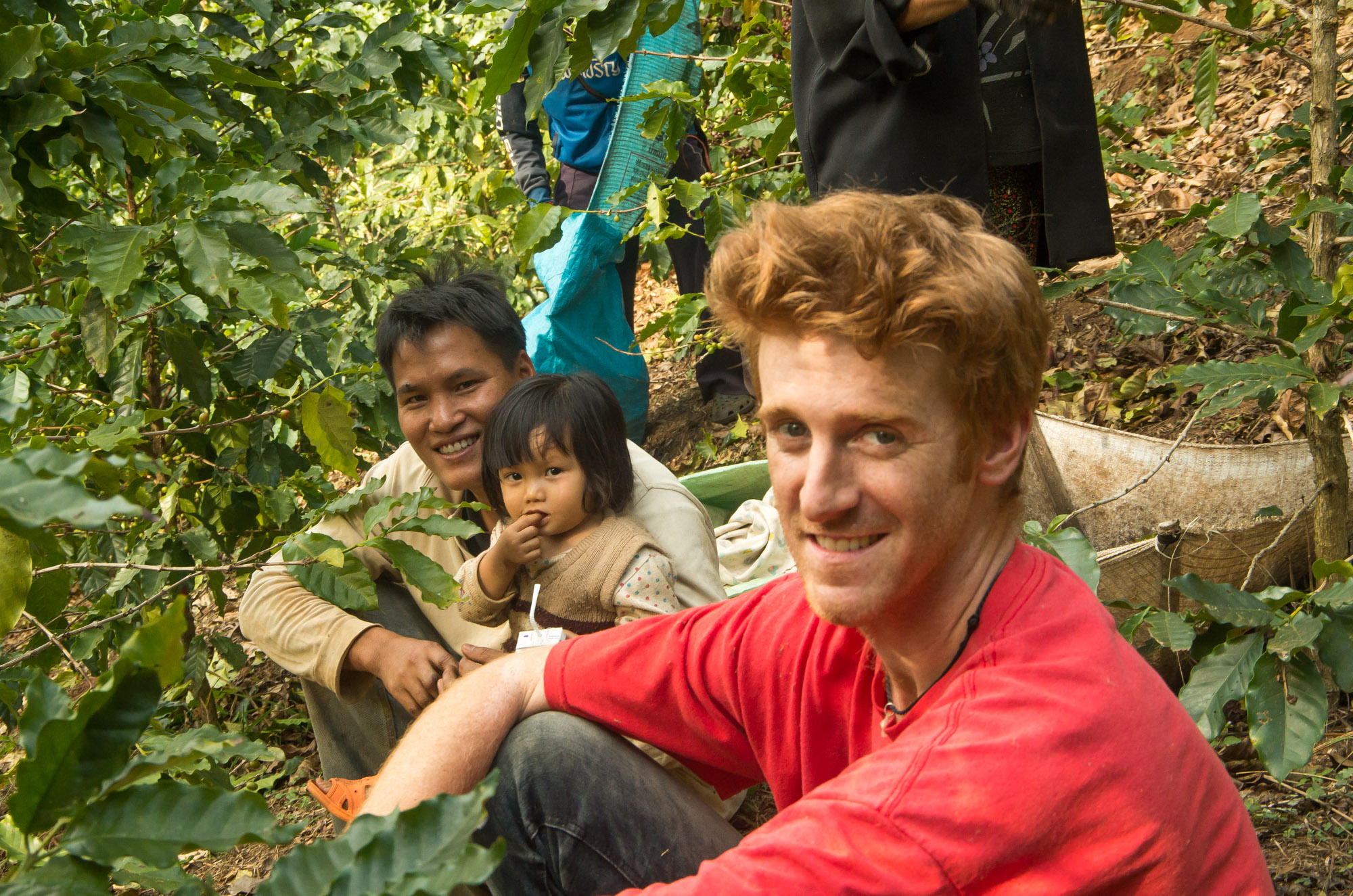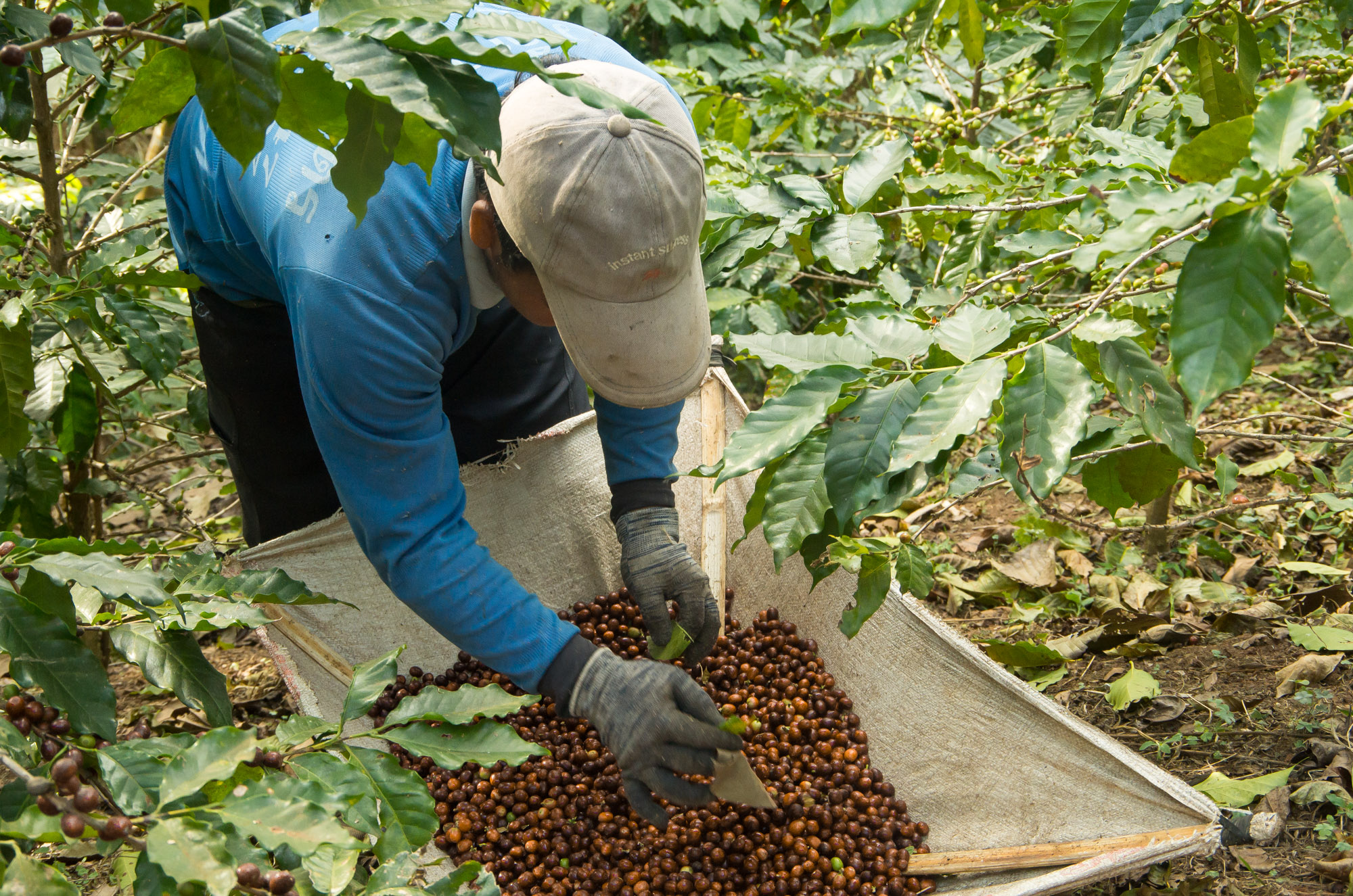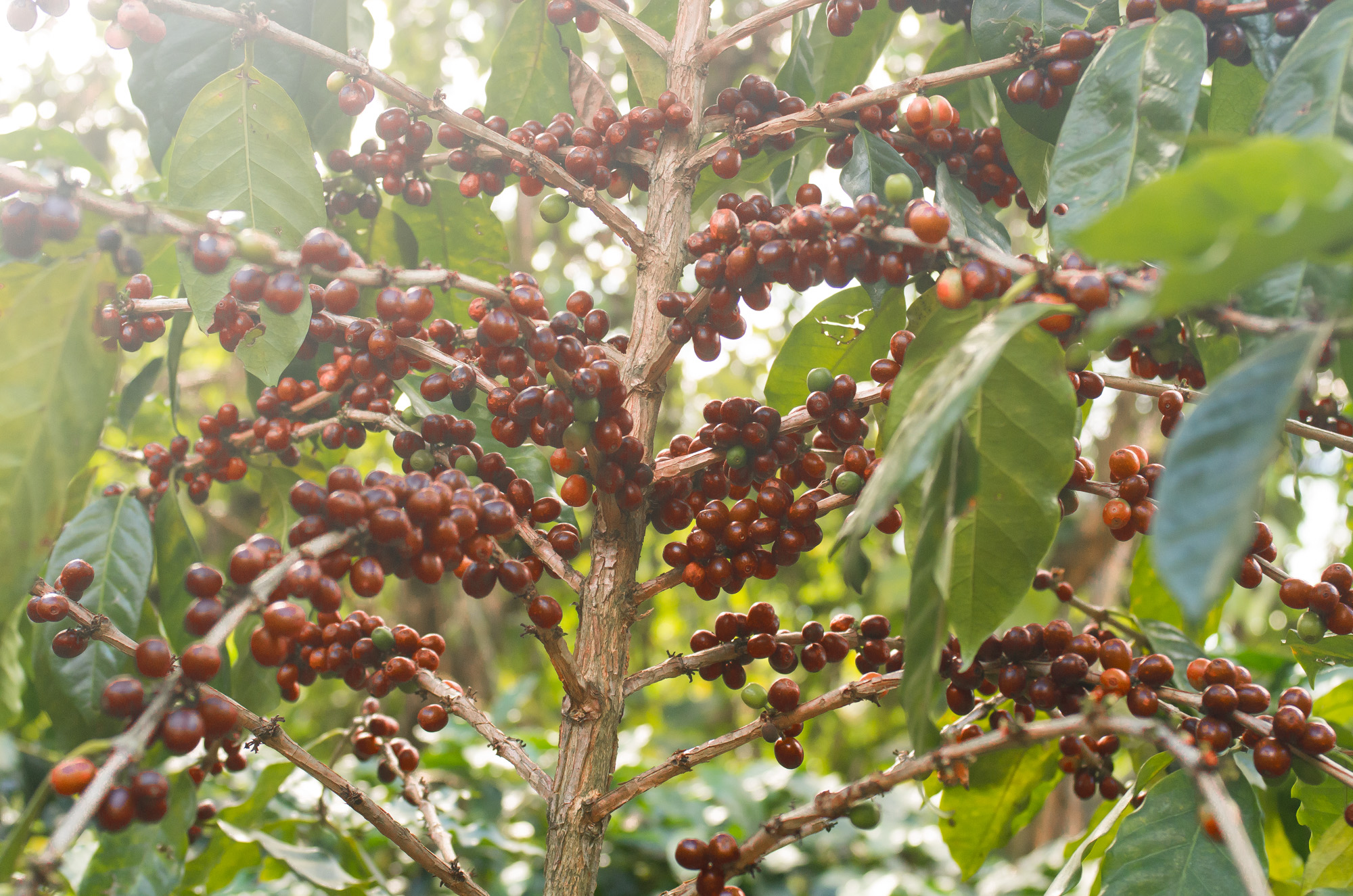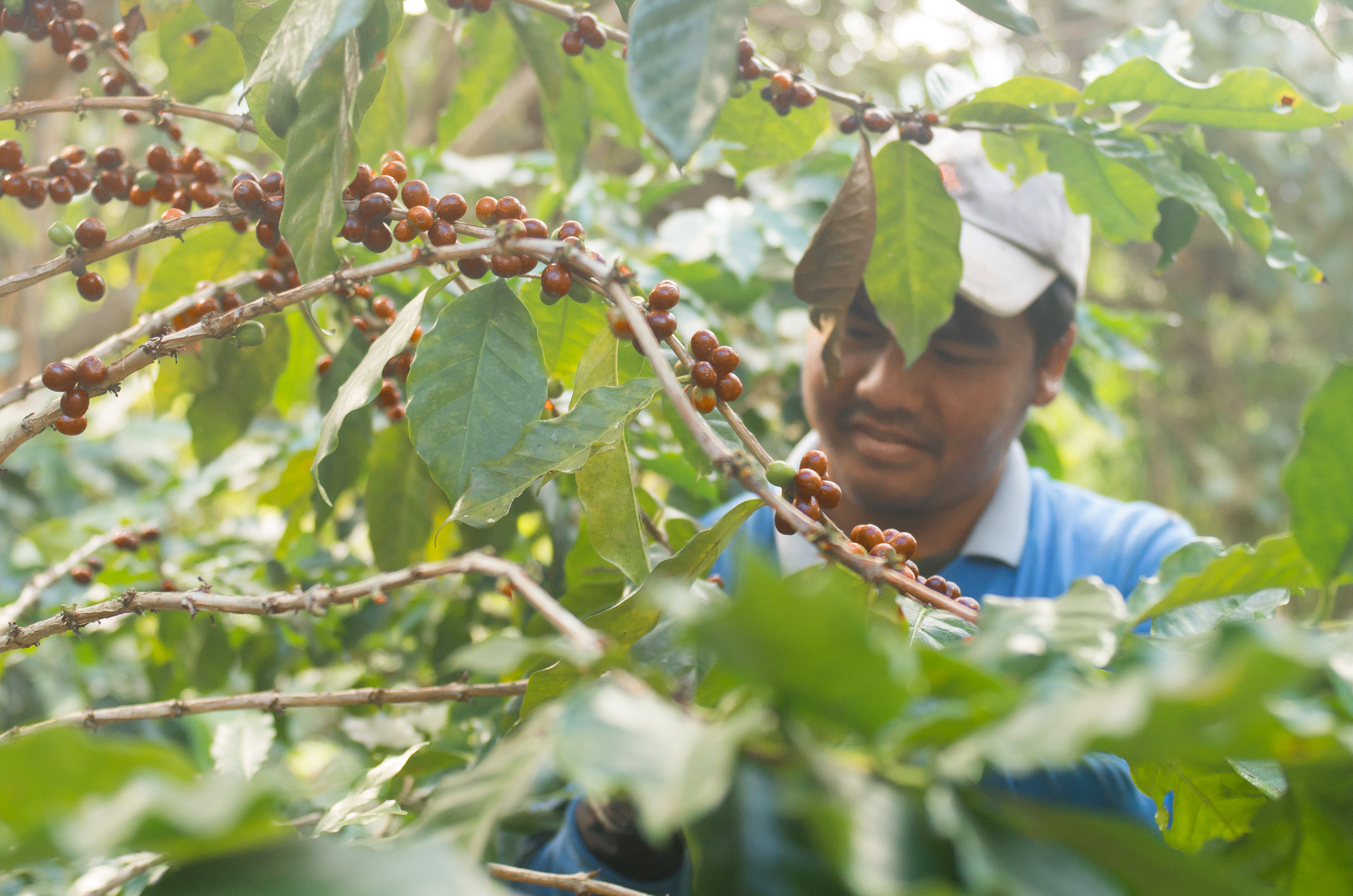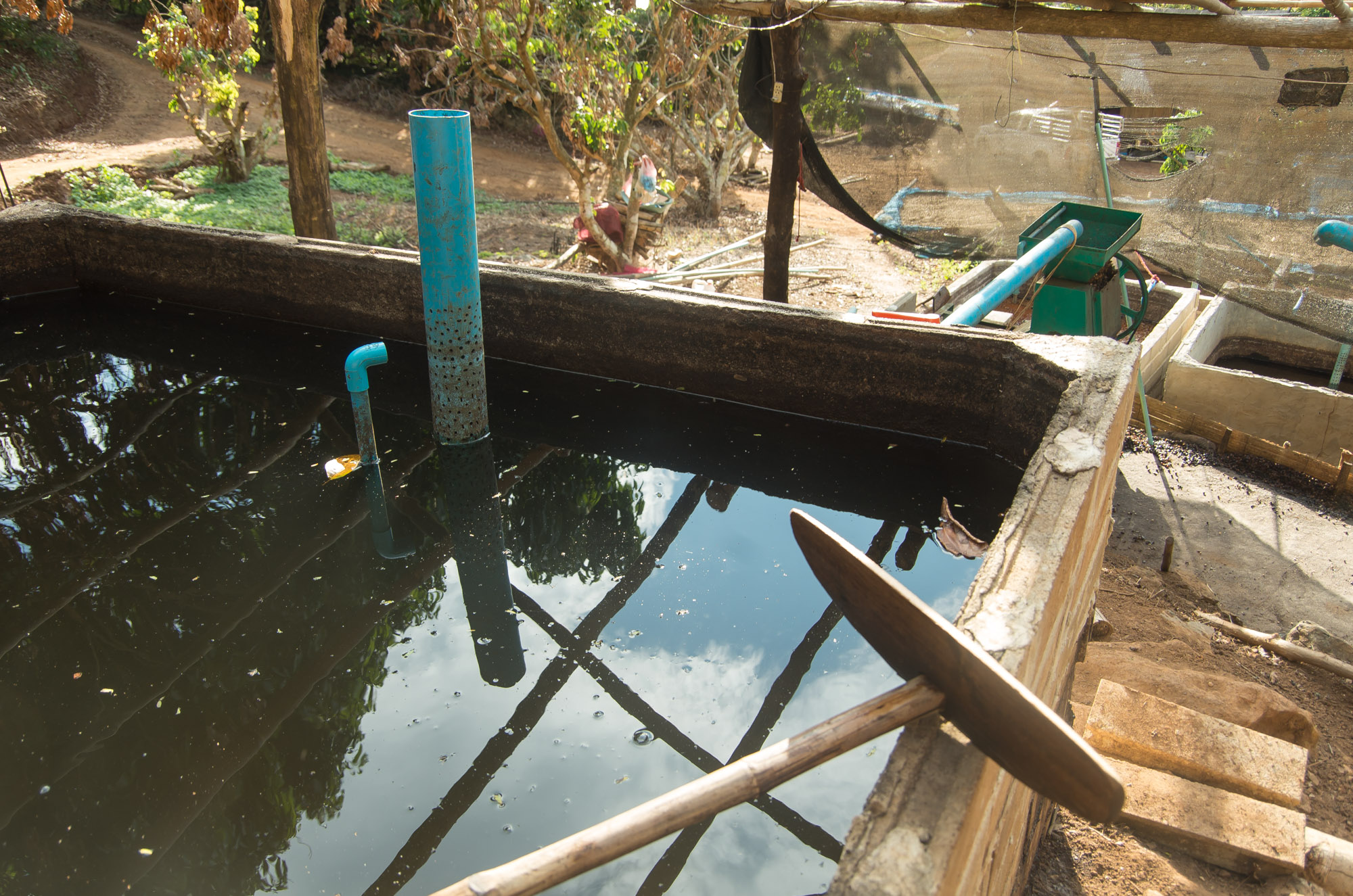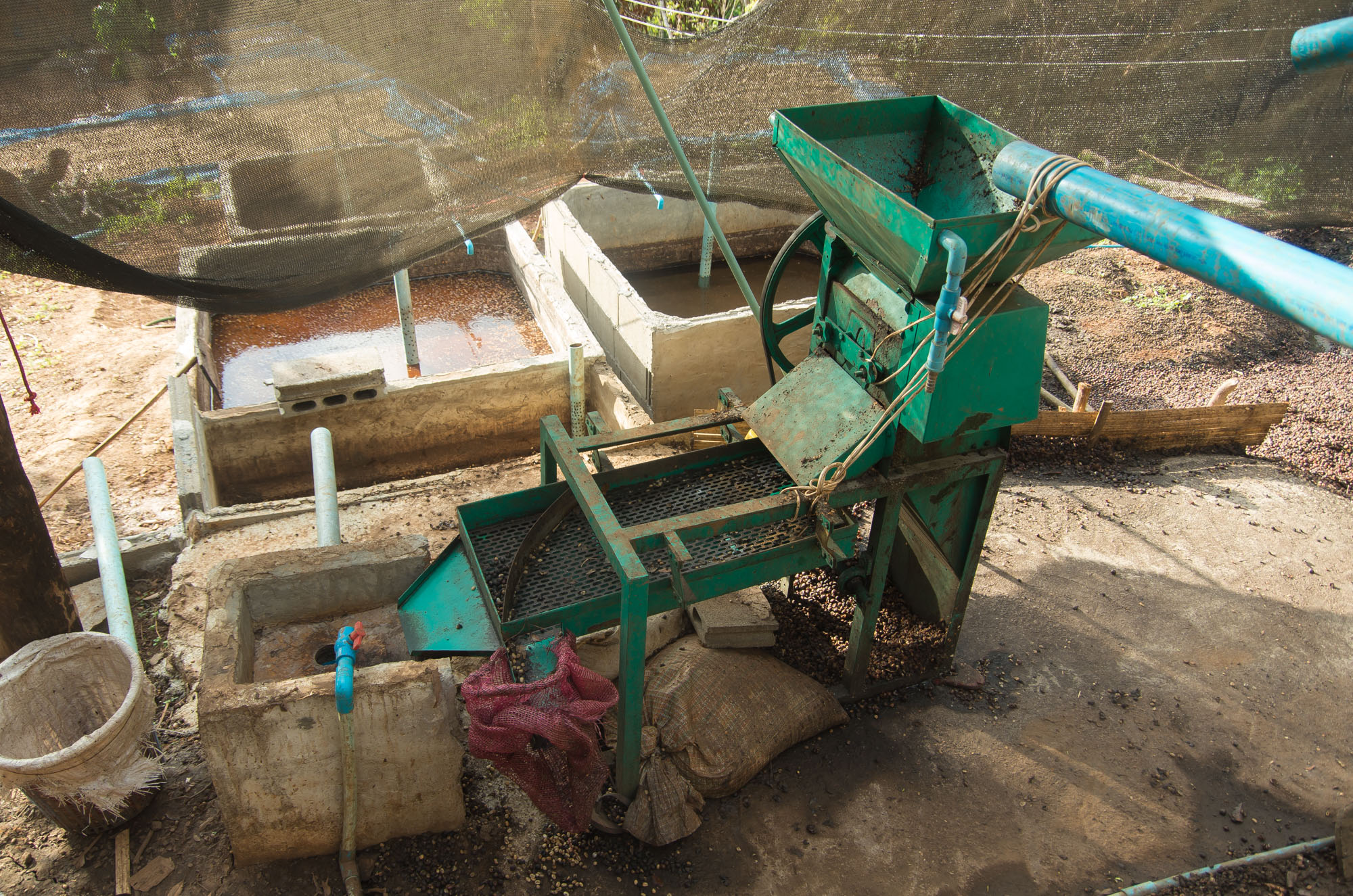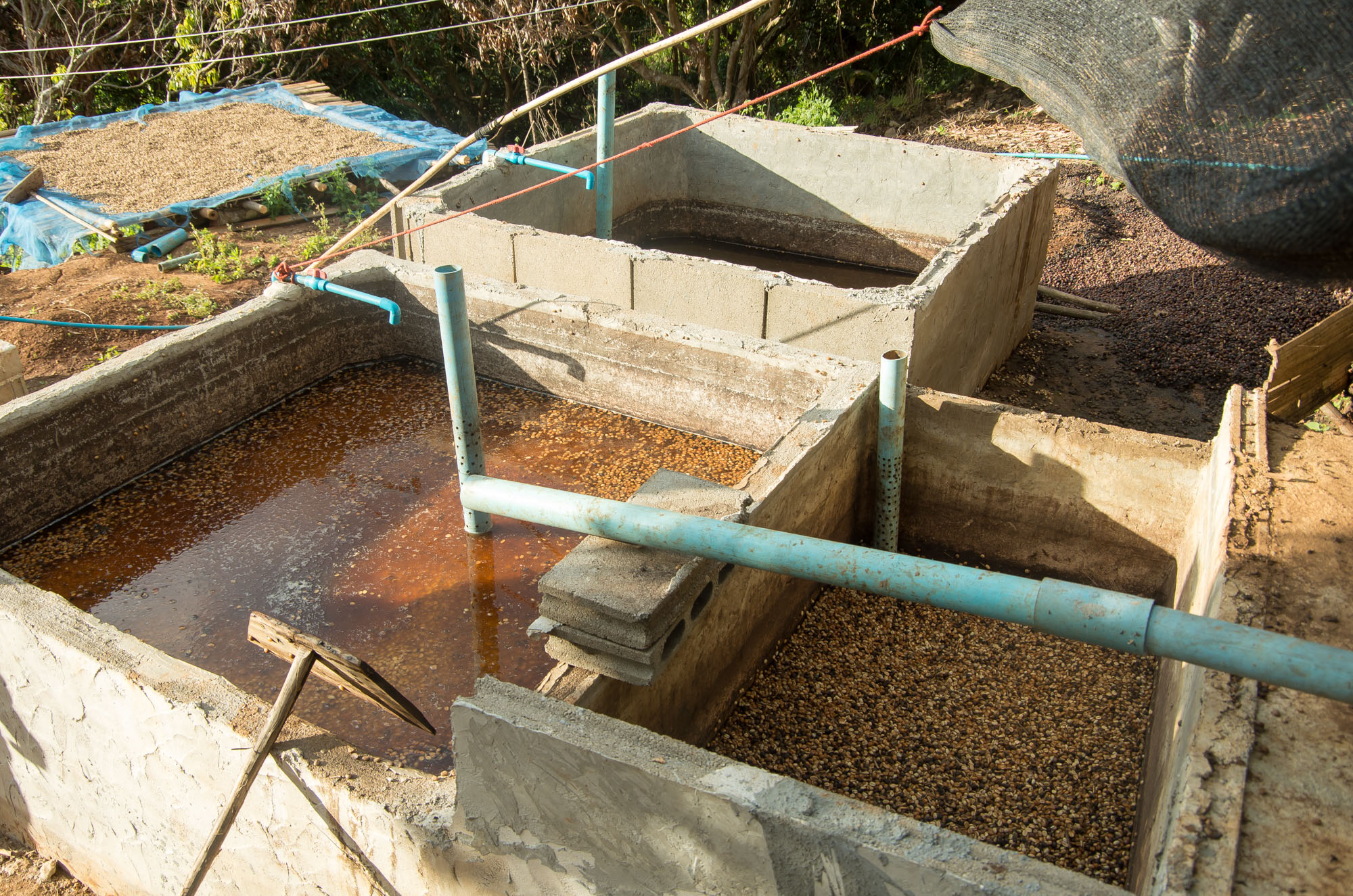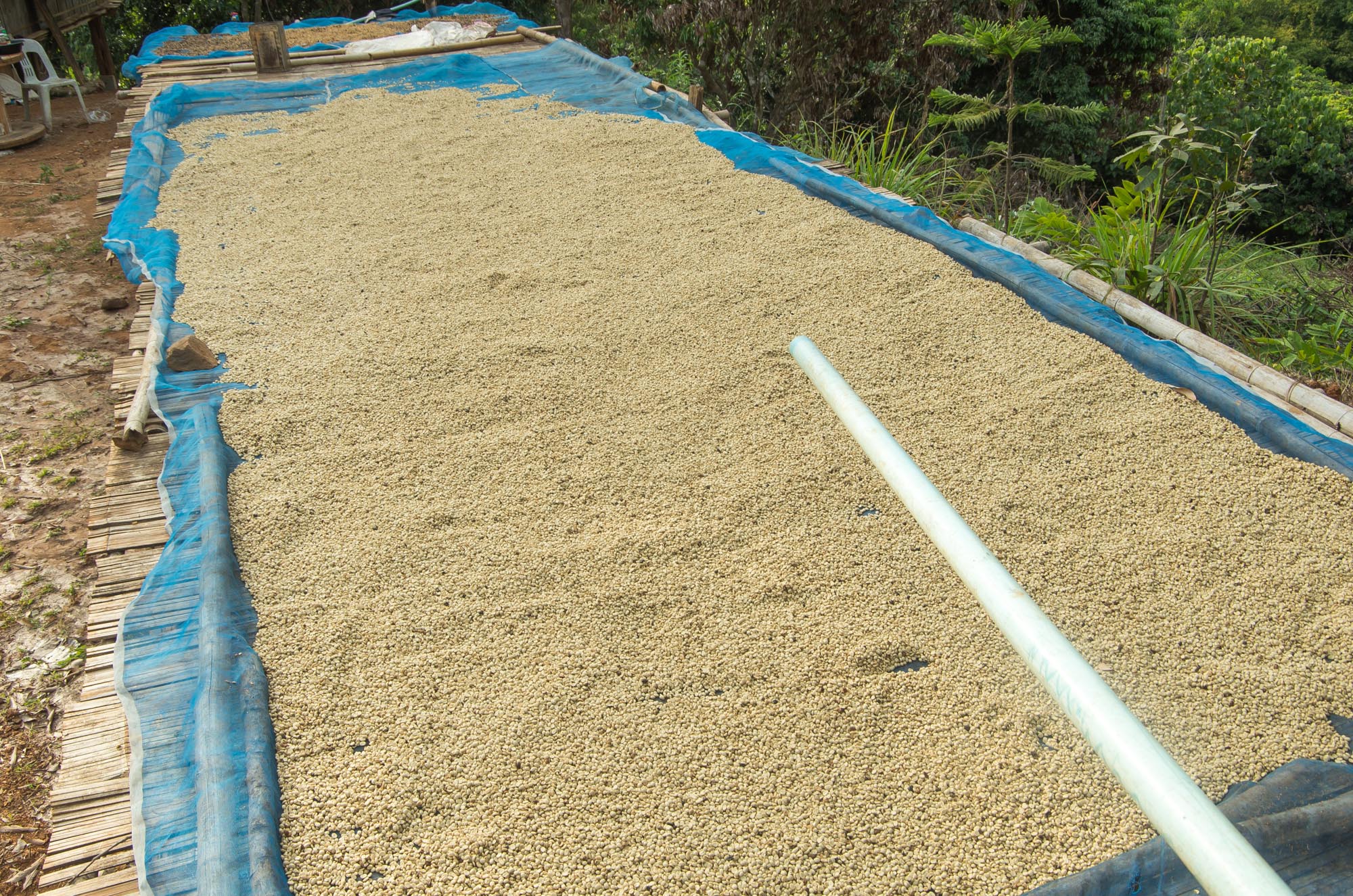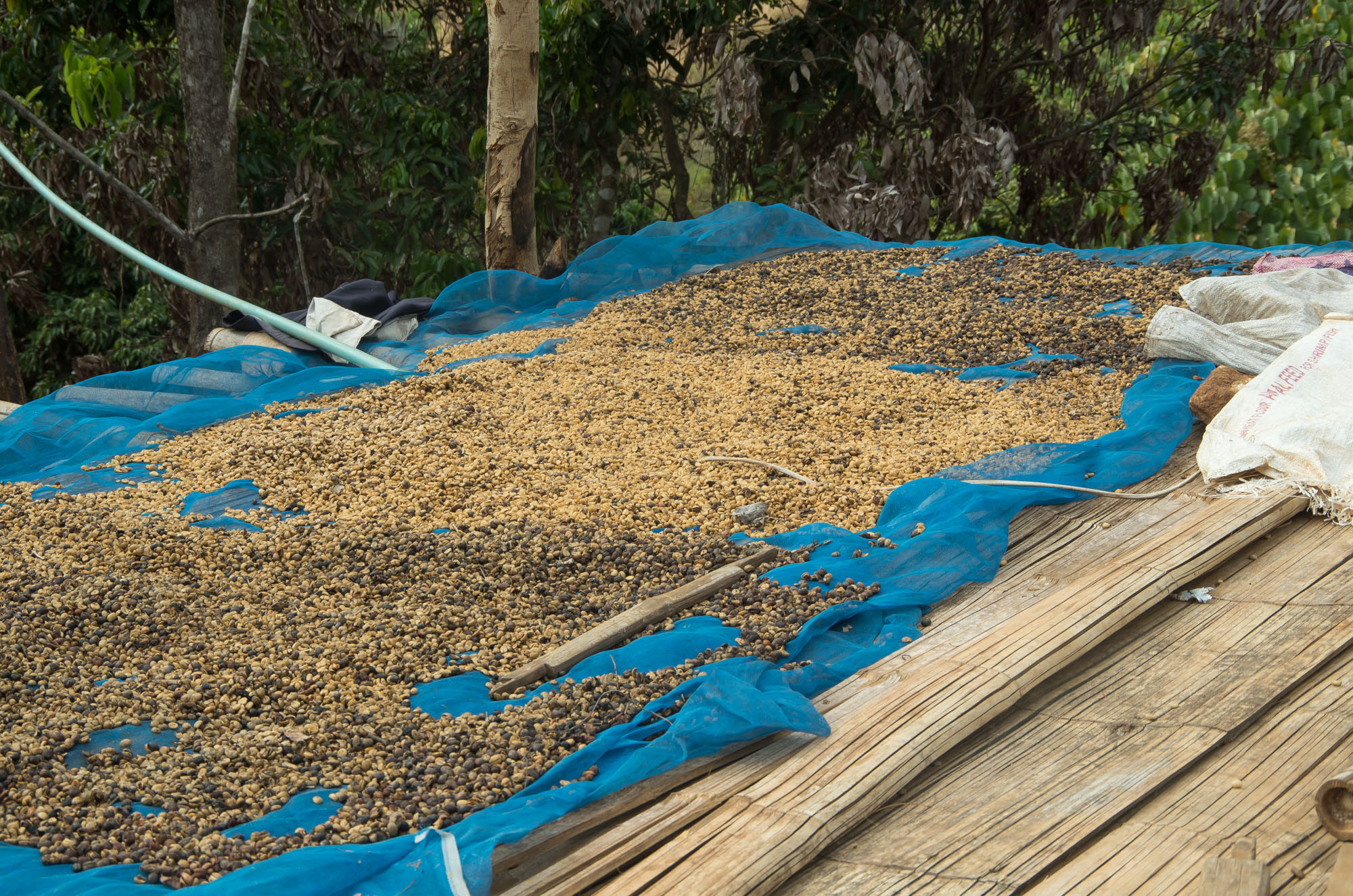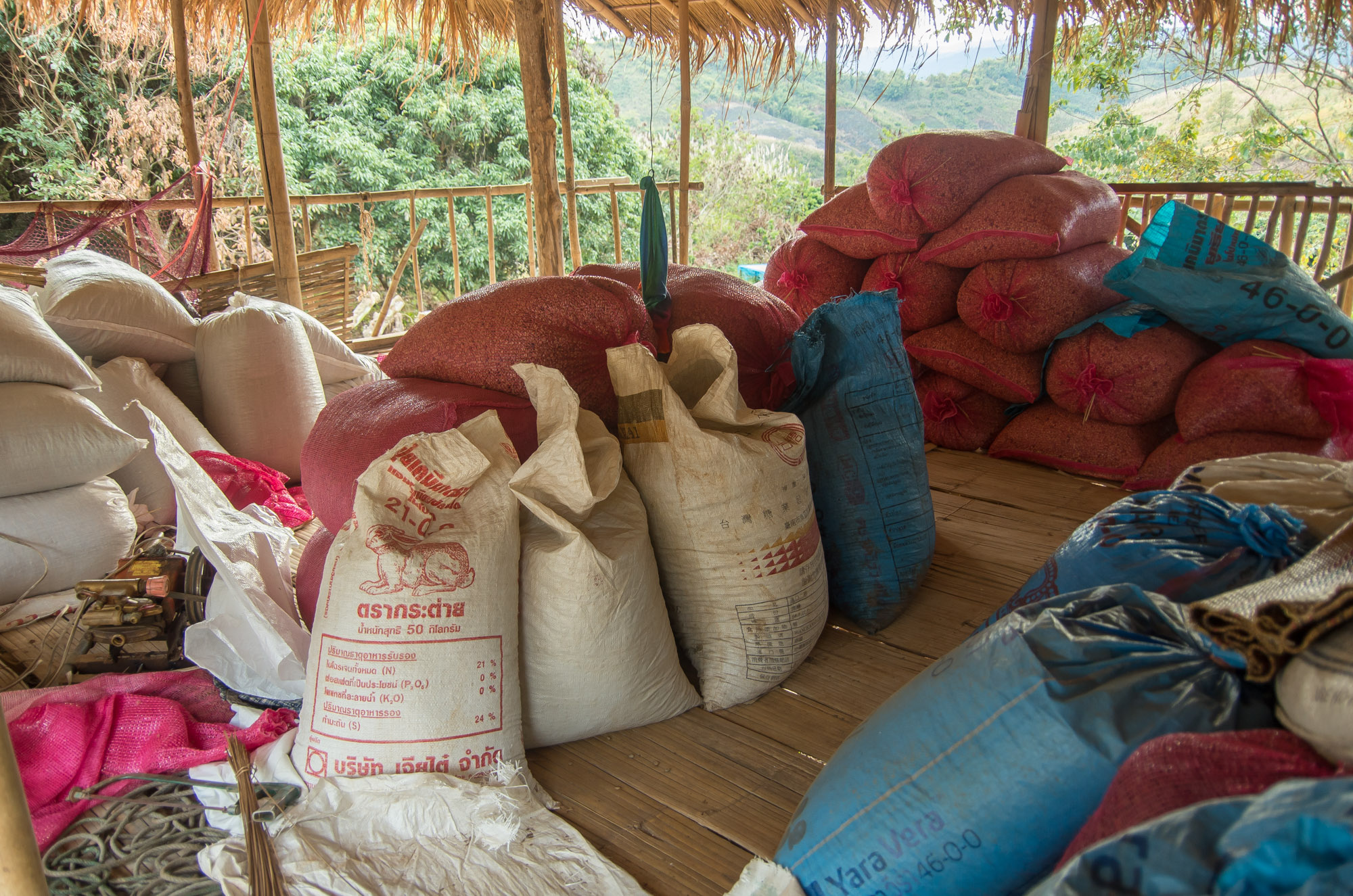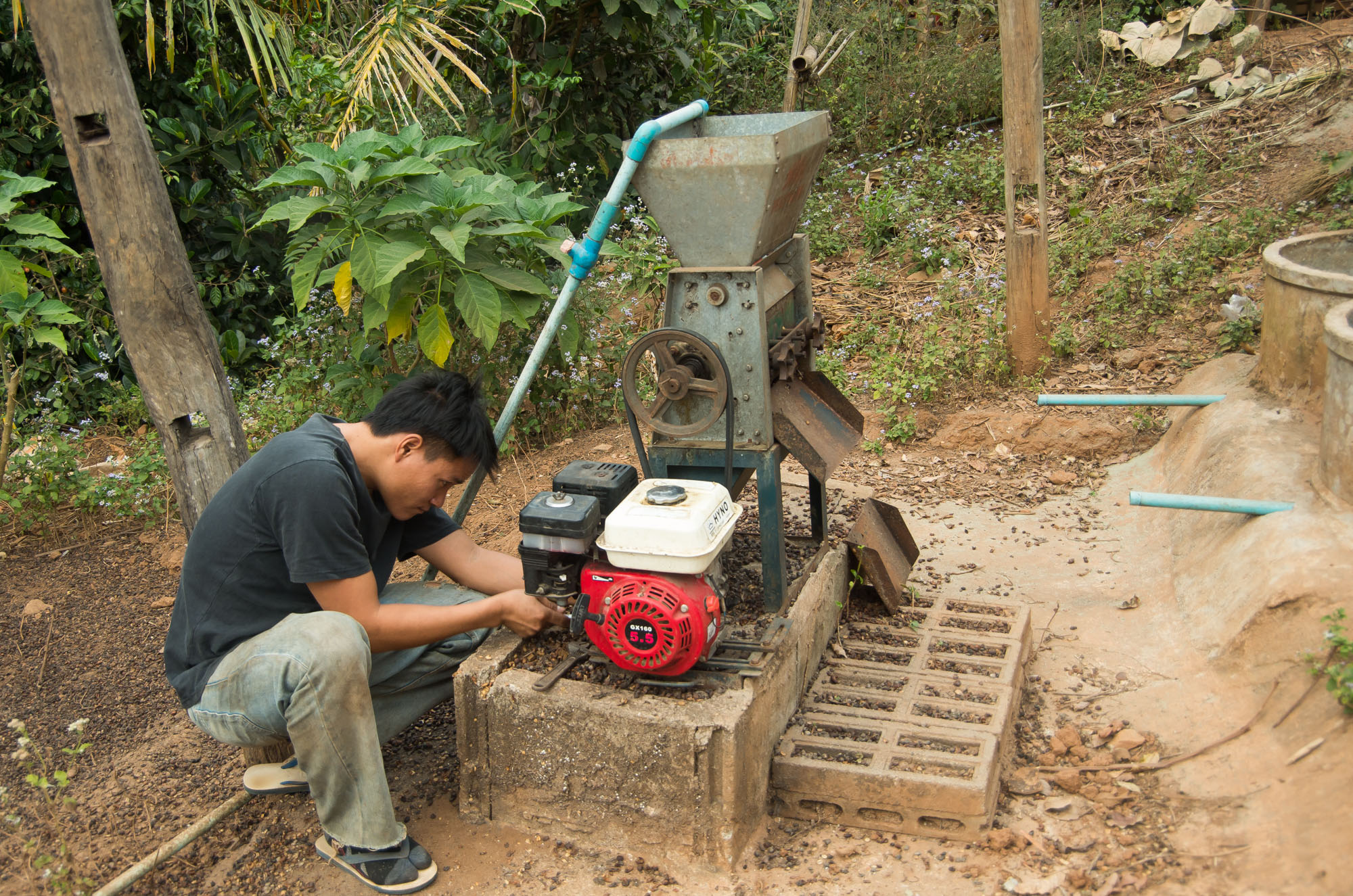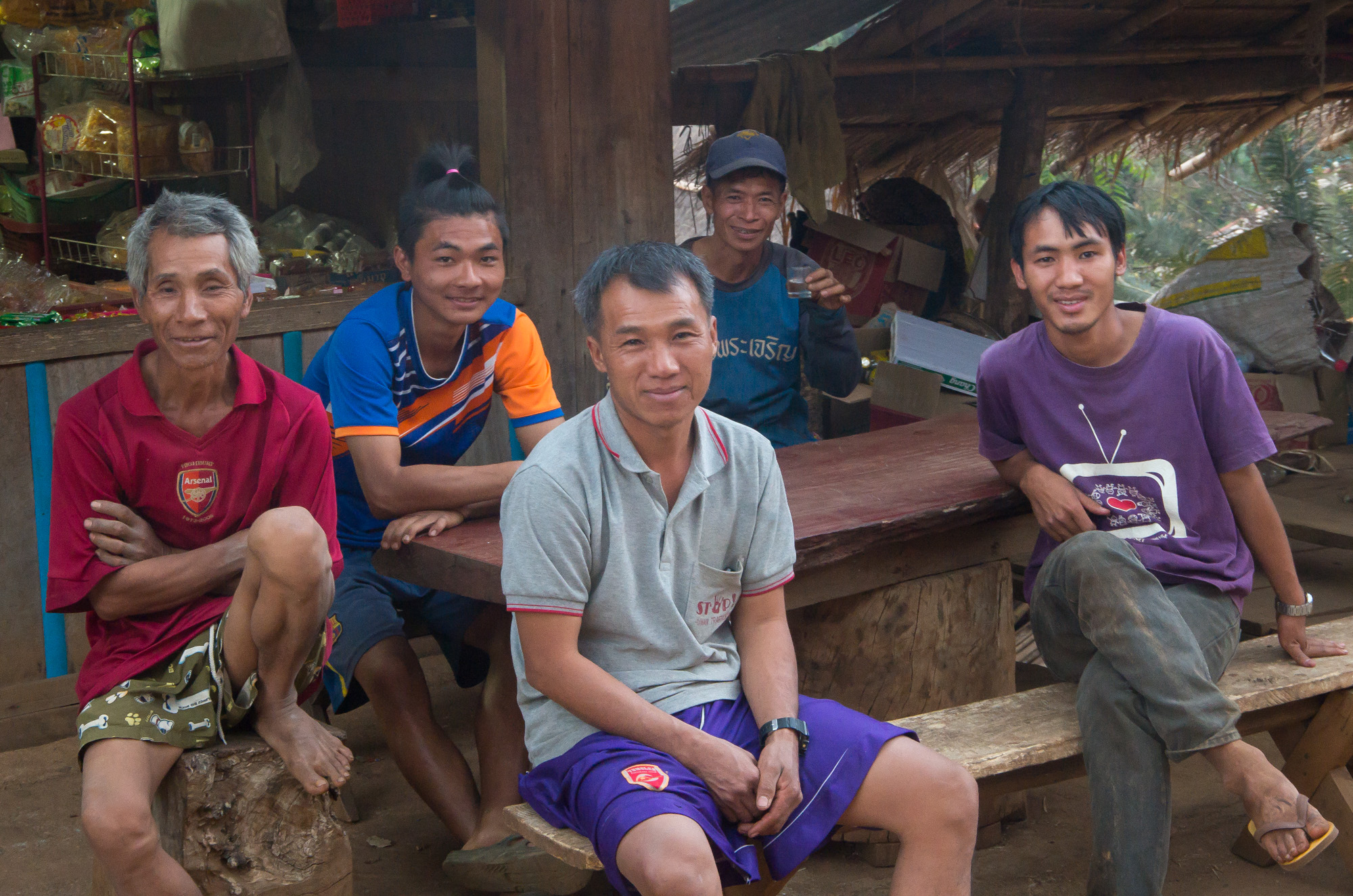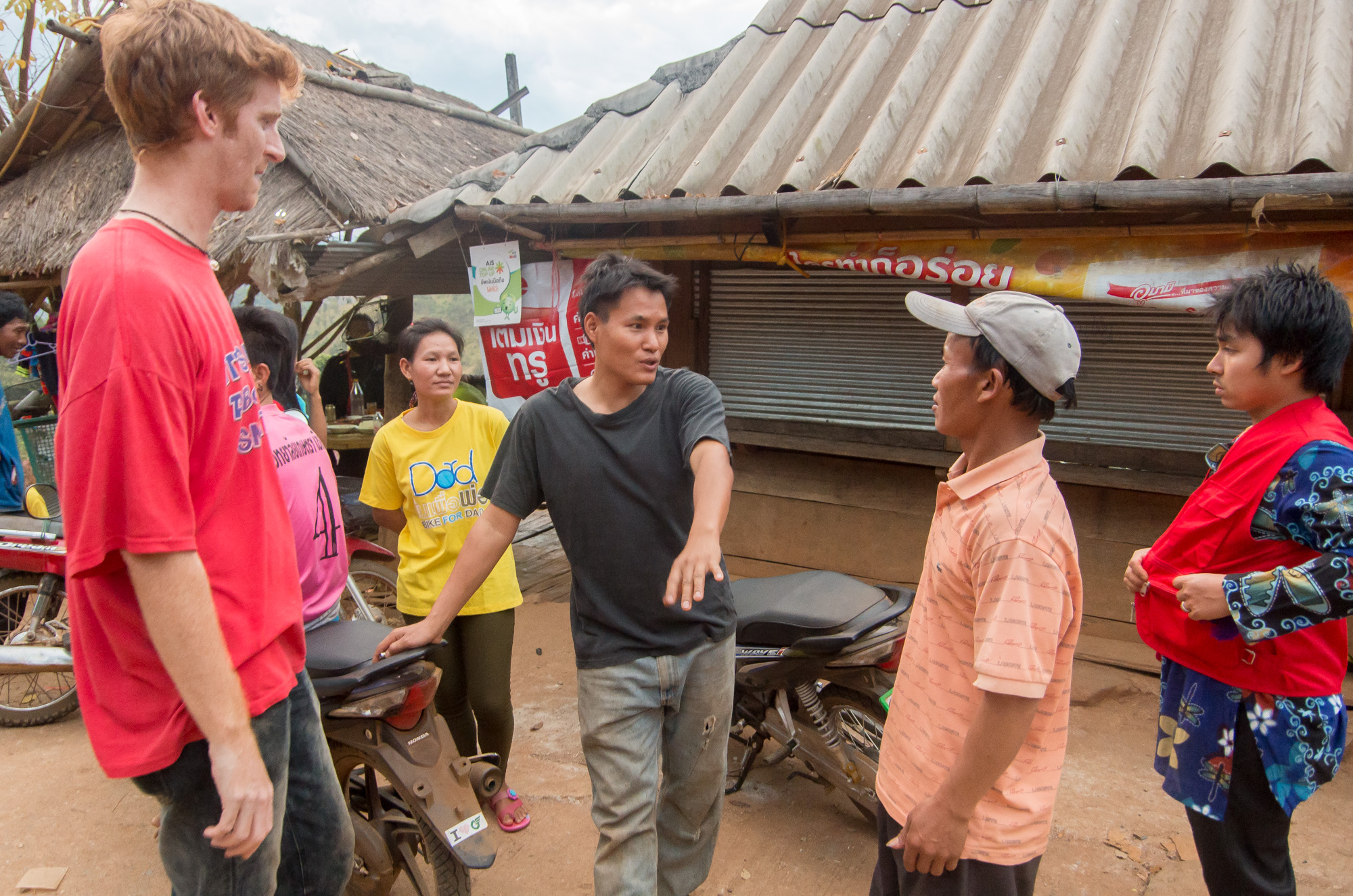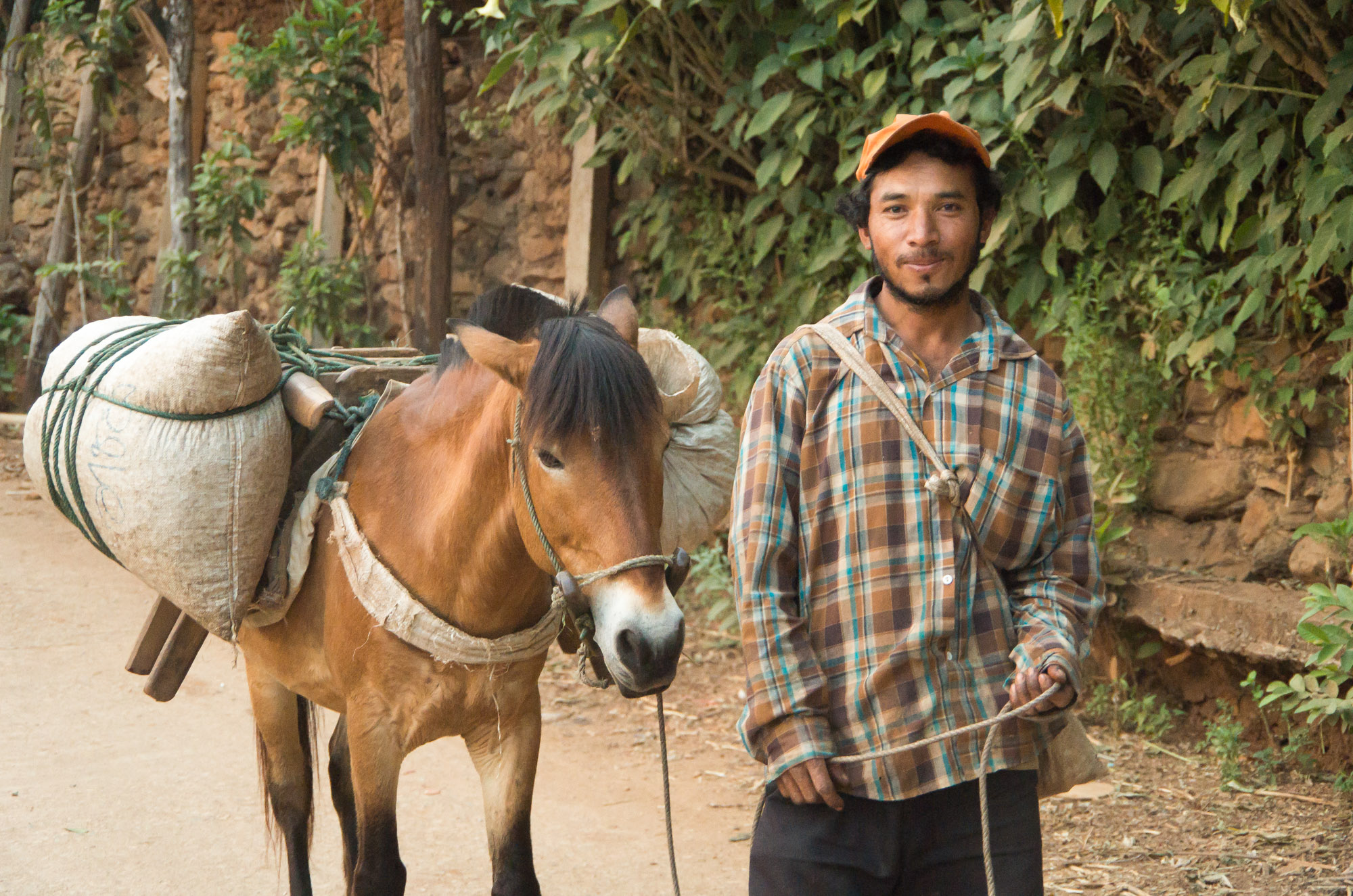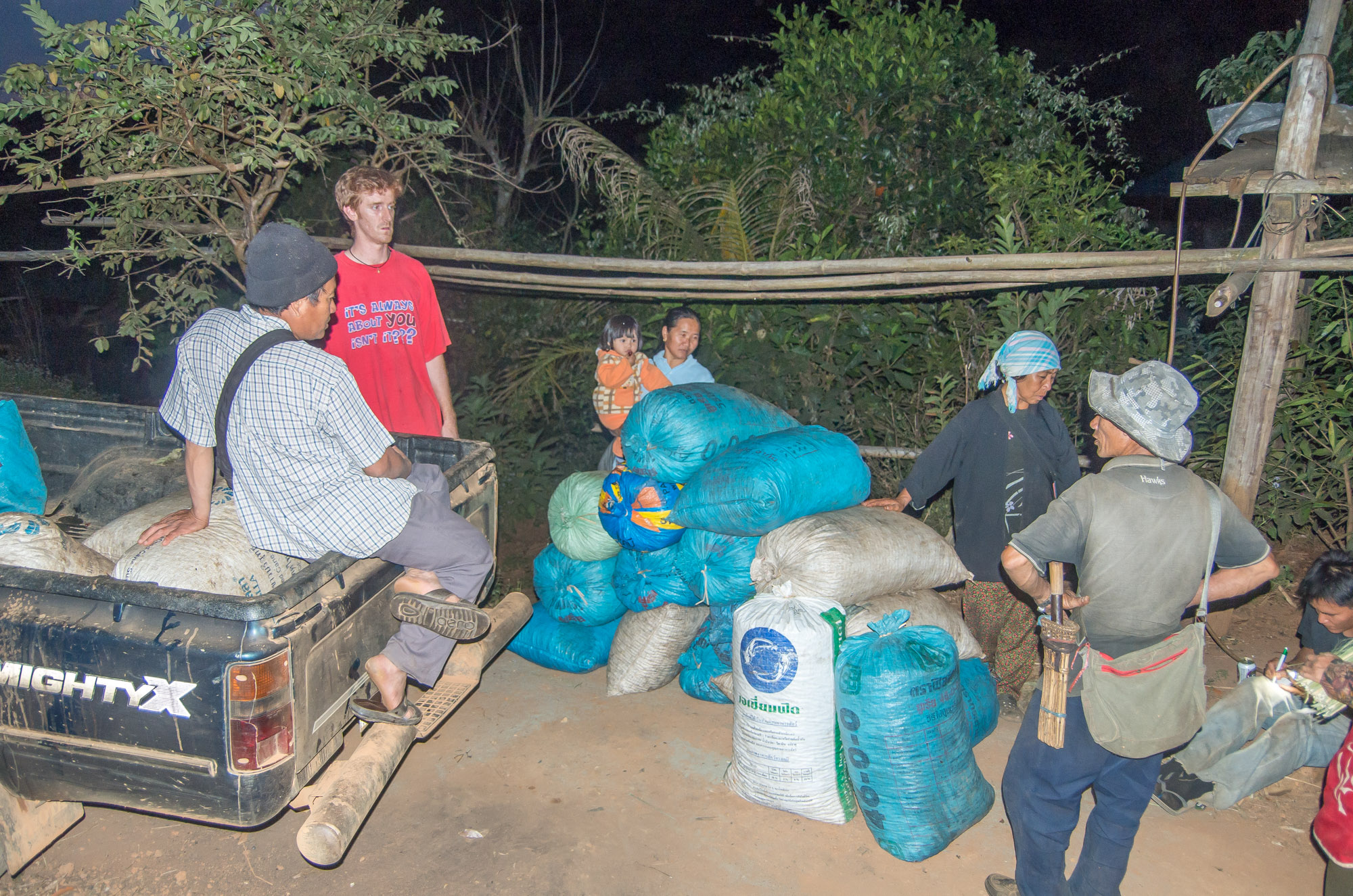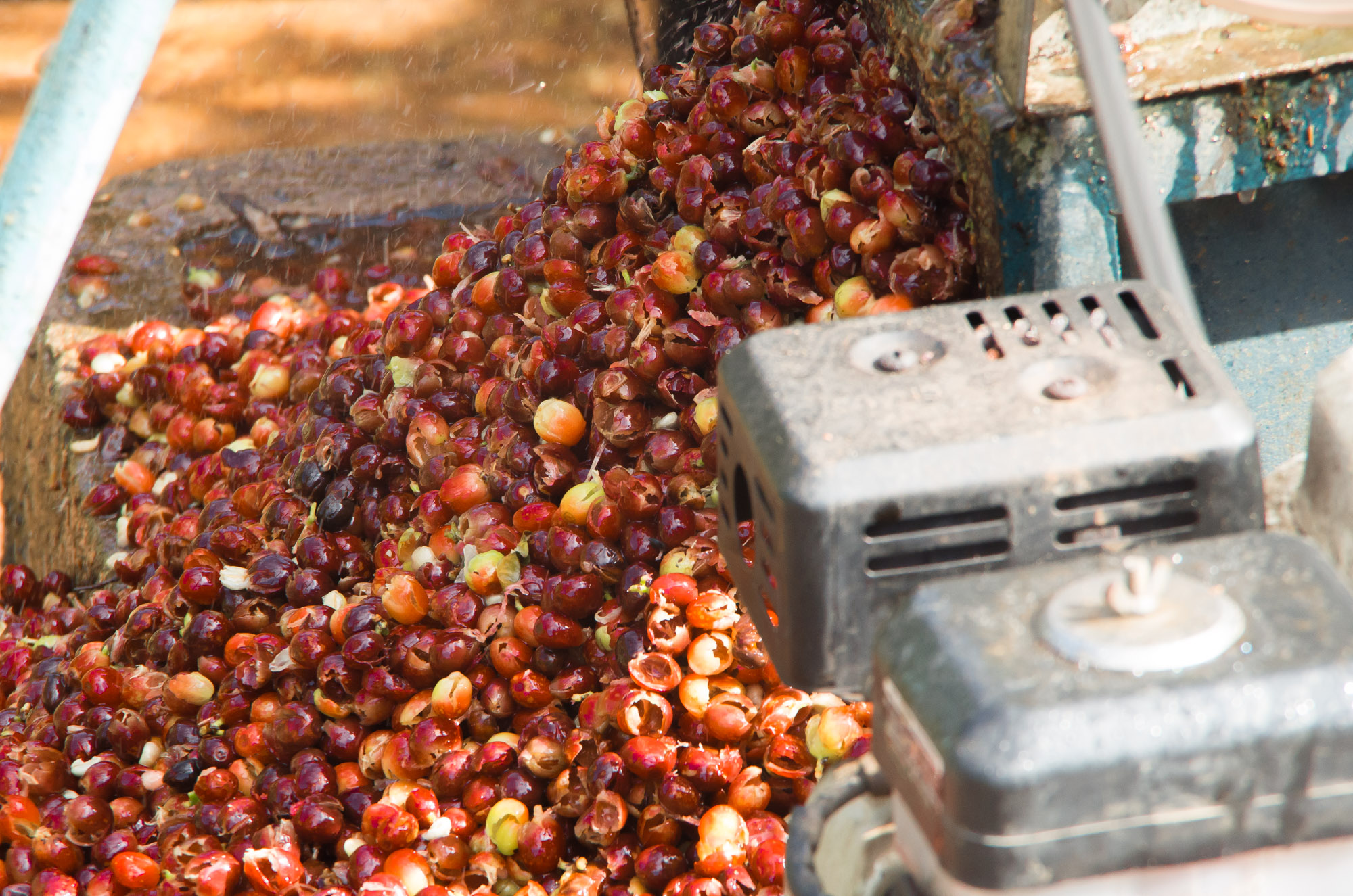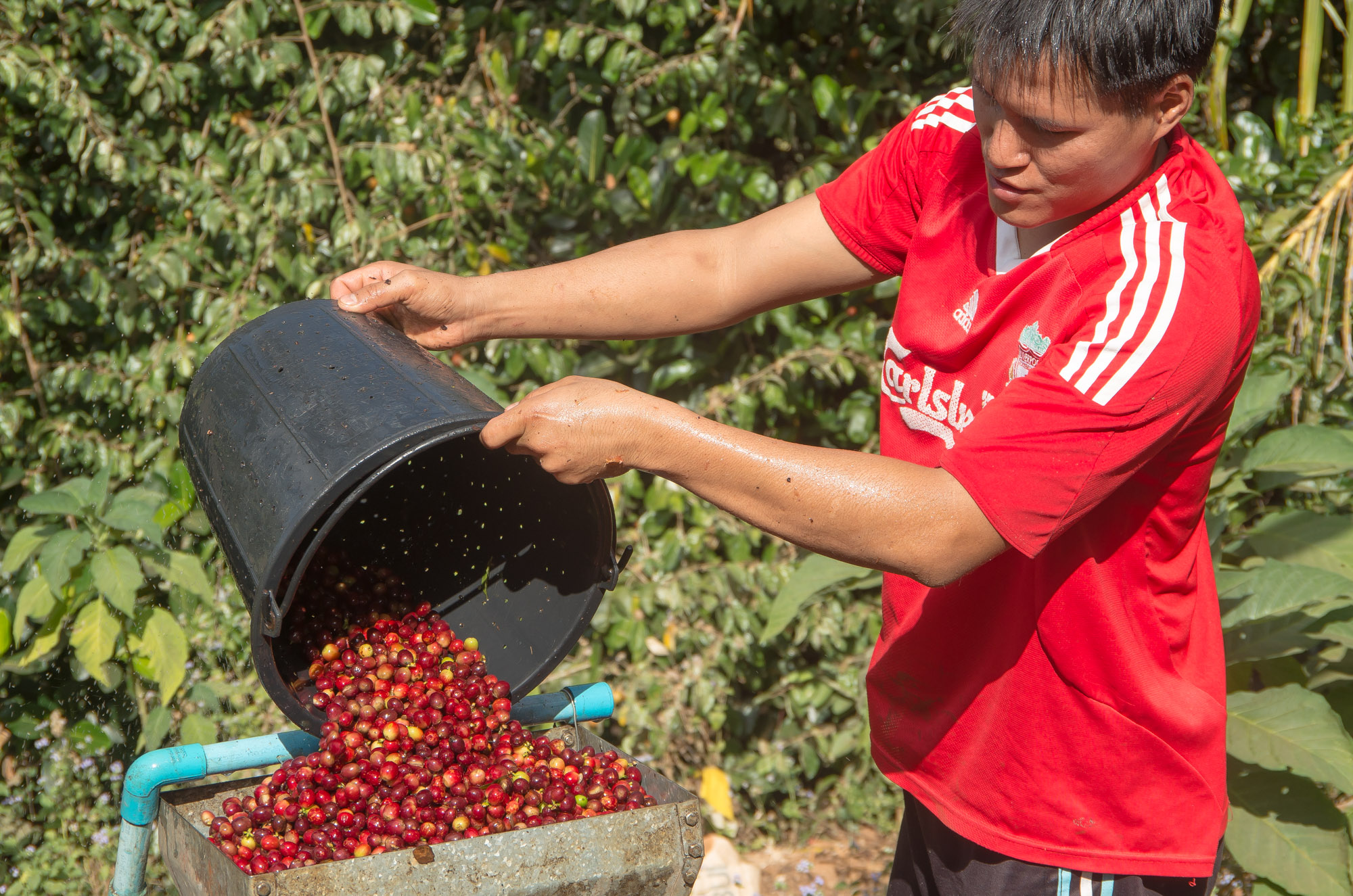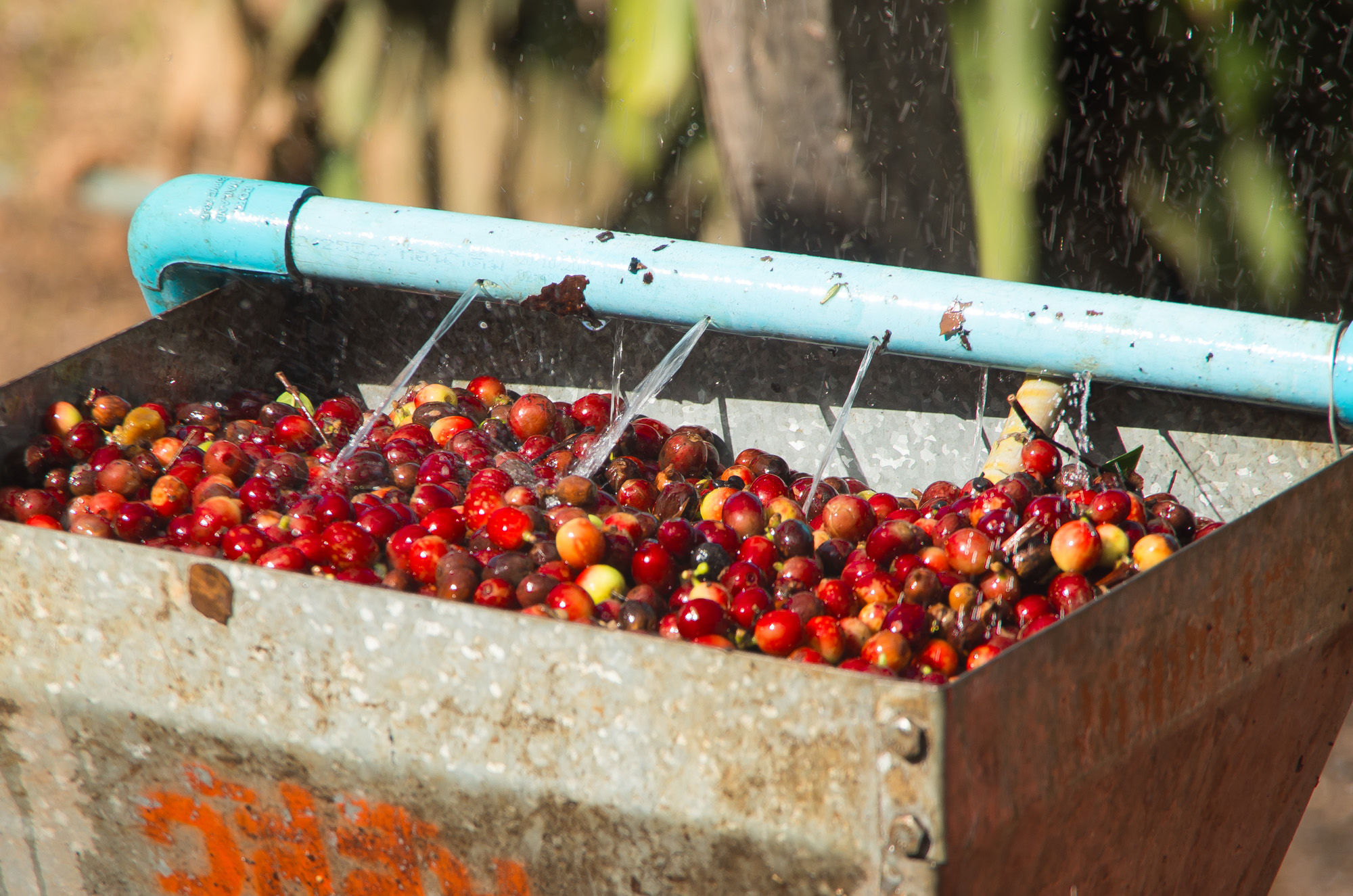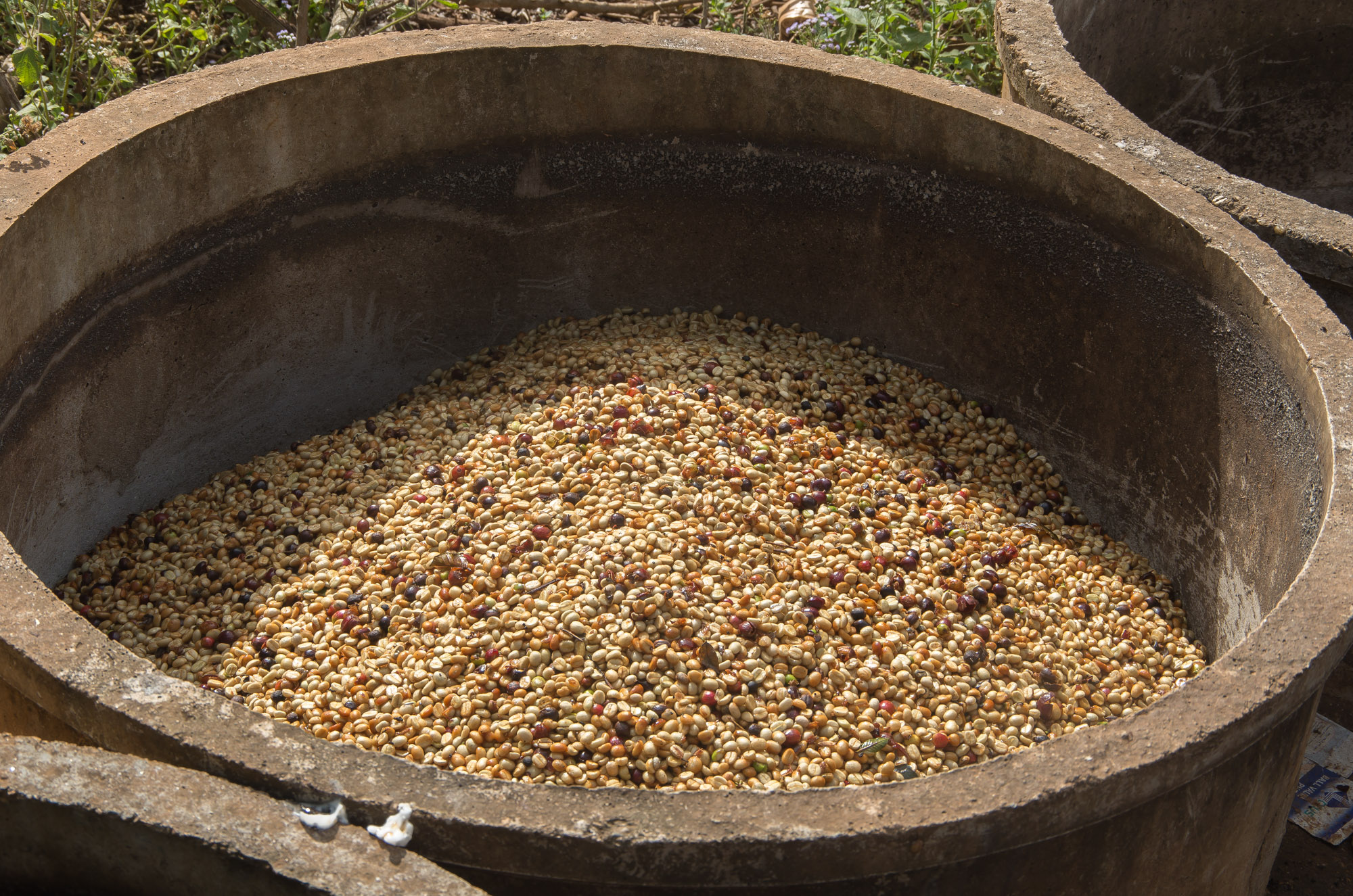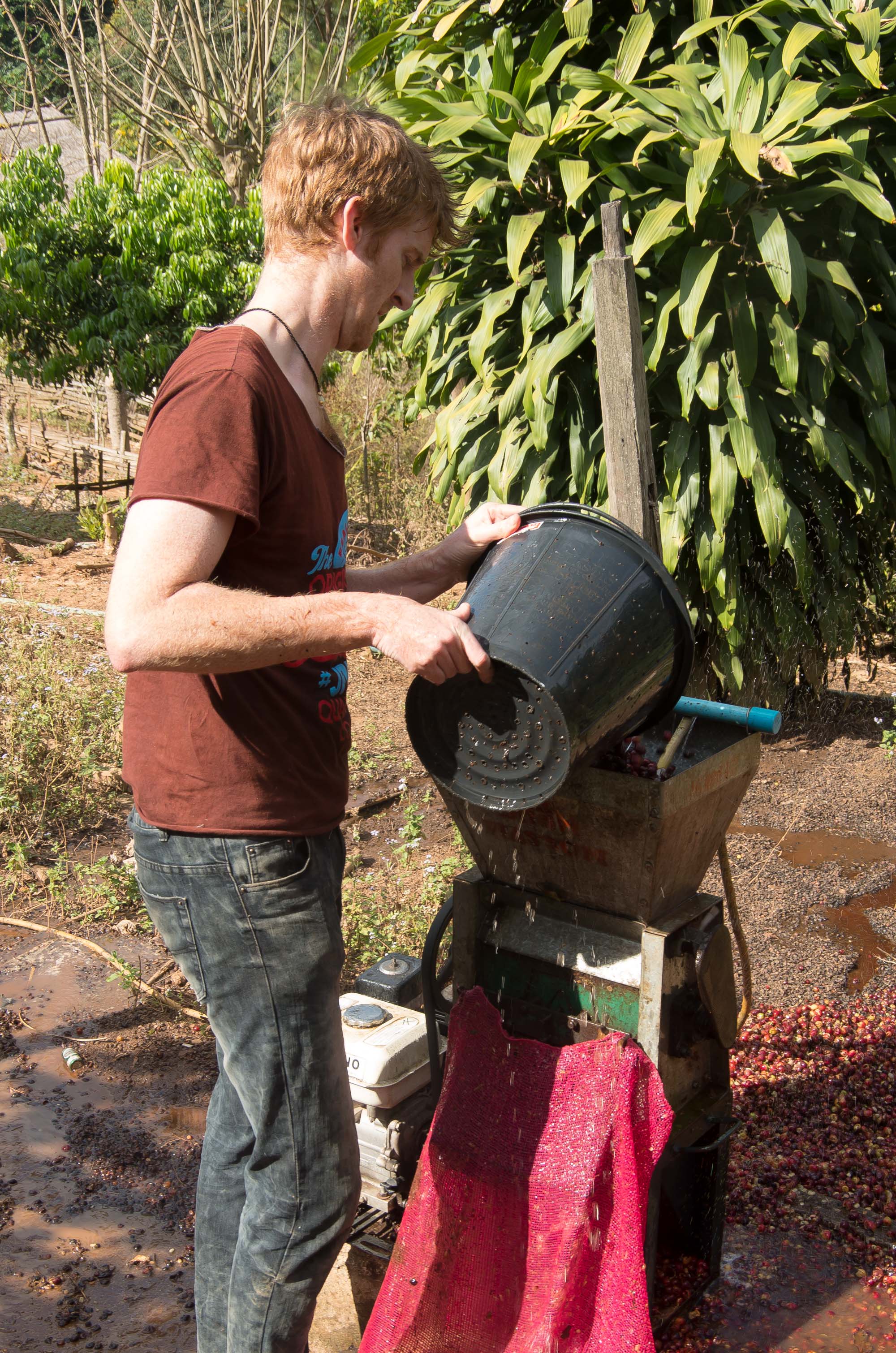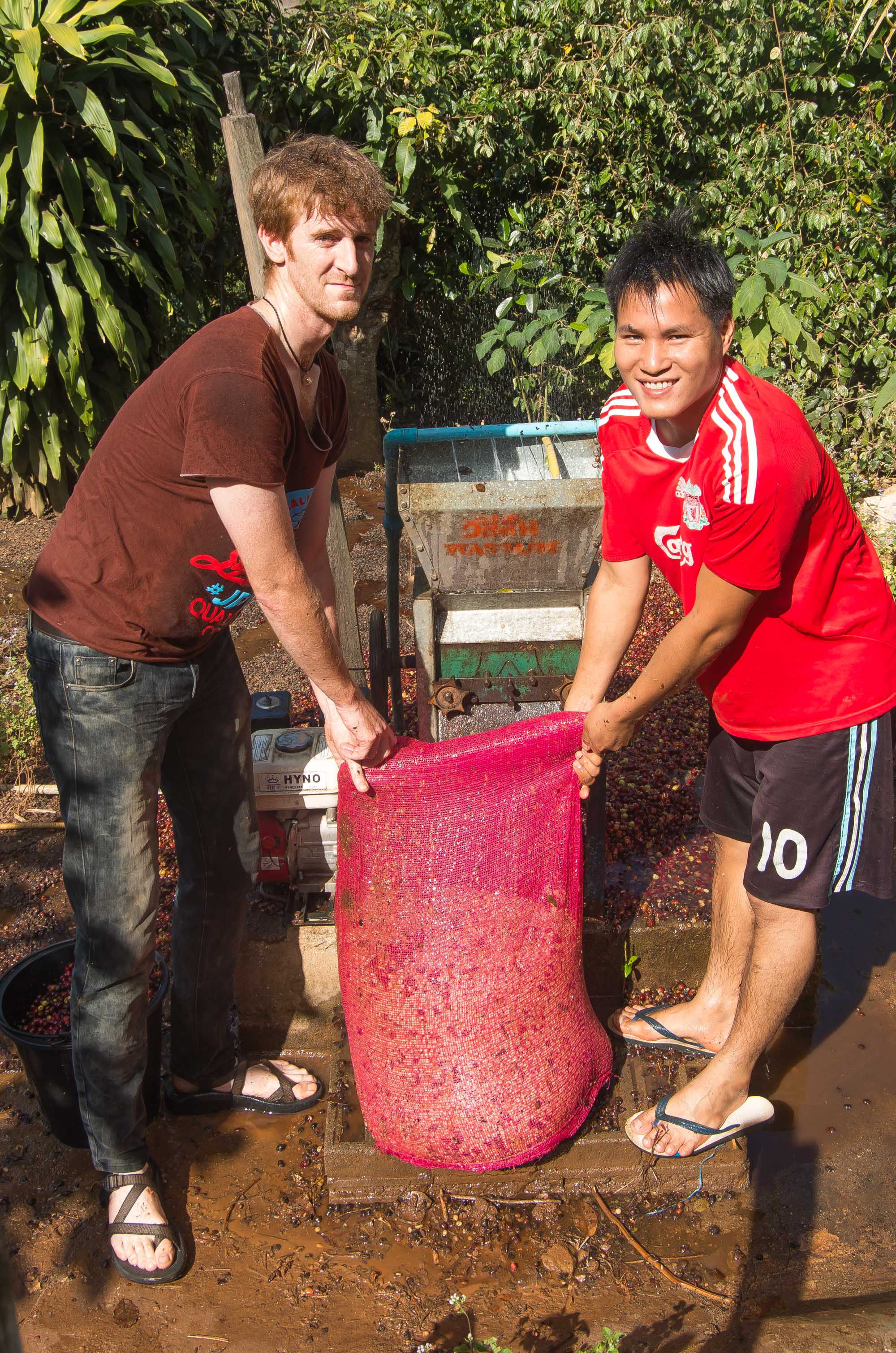Pa Daeng – Northern Thai Coffee Farming
Pa Deang is the name of both a mountain and the surrounding area in Northern Thailand between the cities of Chiang Mai and Chiang Rai, and is the home of the coffee processing operation that I have recently joined. The Akha hilltribe, one of a few nearby indigenous peoples, make up a majority of the population here.
Coffee is just one of the possible avenues that hilltribe family farms take, with others being rice, lychee, longan, other fruits/vegetables, etc.
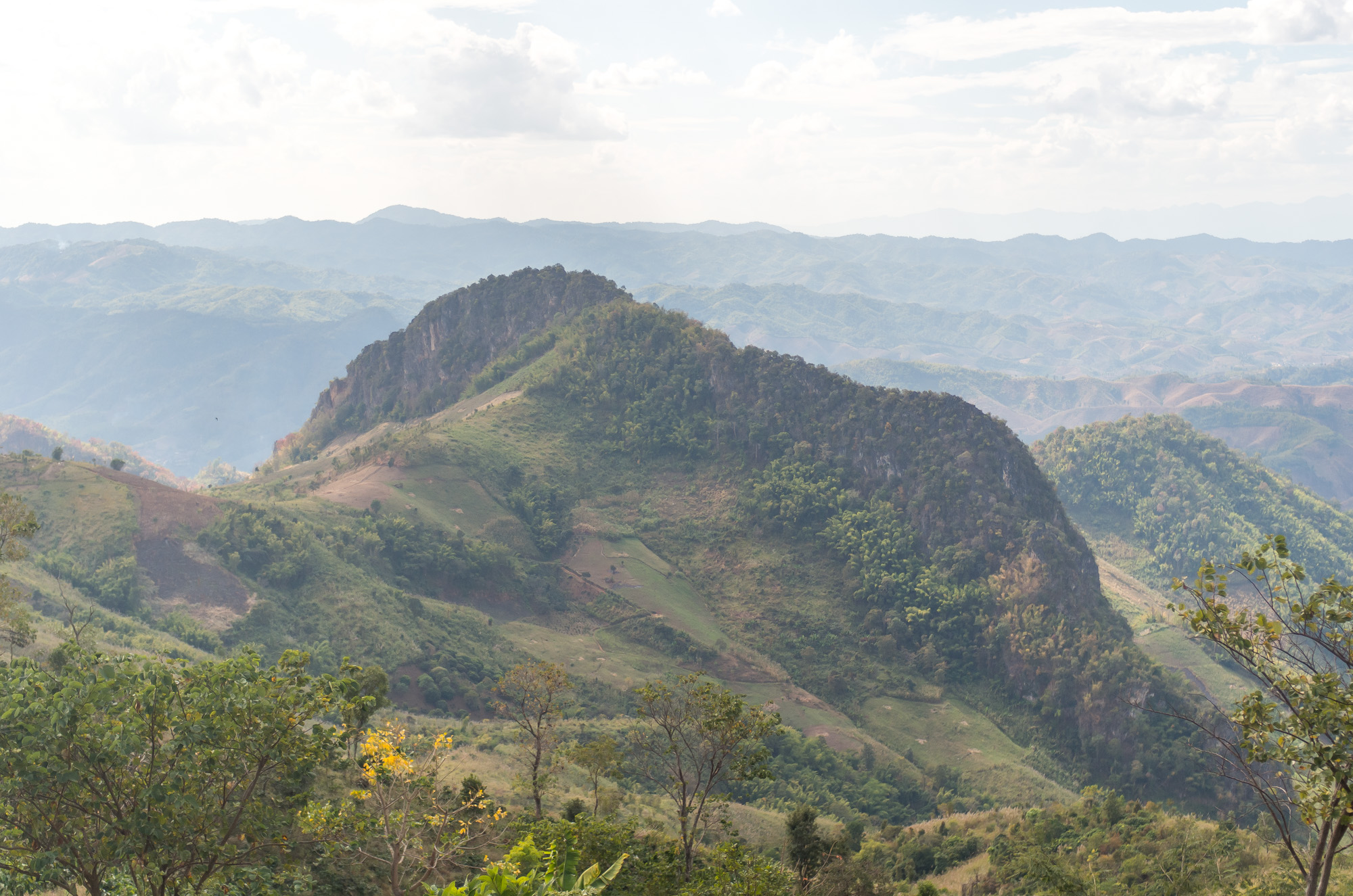
Pa Daeng
The Akha are an indigenous hill tribe who live in small villages at higher elevations in the mountains of Thailand, Burma, Laos, and Yunnan Province in China. They made their way from China into Southeast Asia during the early 20th century. Civil war in Burma and Laos resulted in an increased flow of Akha immigrants and there are now some 80,000 living in Thailand’s northern provinces of Chiang Rai and Chiang Mai, where they constitute one of the largest of the hill tribes.
Traveling to Pa Daeng requires a bit of a finesse and is preferably attempted with a jeep or other vehicle with four-wheel drive. The ride starts easily enough, but once you hit the mountain things get a bit hectic, between the bumpy off-roading and the narrow hillside paths. The narrow paths in particular, which will test anyone’s fear of heights.
This coffee processing operation was traditionally split between my partner Derek and his ex-wife Niti, who is Akha herself and has huge family ties with many of the village’s families. Since then, Niti’s brother Anucha and others in her family have taken some responsibility picking from the farm and buying/processing other farms’ product.
Derek and I rode with Anucha and his family at night, so I waited until waking up the next morning before pulling out the camera.
Waking up around 7am, I decided to wander a bit. The village is charming, with simple wood-built houses on stilts. Some are more lavish than others, denoting someone with status in the village.
- A house in the area
- A children’s school
- Woman with a small child. Her lips are darkened due to chewing betel nut.
- Hillside
A bit serendipitously, I came upon a guy who works with a farm in the area. He wanted to show me around, so we walked for a bit, trying to bridge the wide language gap between us. I tried to get his name but it didn’t seem to want to happen.
- The kind gentleman
- Walking down some stairs
He took me to a small processing area where parchment beans were sun drying along the hillside. It was a beautiful sight, especially in the early morning with the sun still rising.
- First platform of drying parchment.
- Observing the landscape as the sun rises
- You can see that there are many (at least 4) layers of beans drying along the hillside
- Parchment beans stored nearby
The farm operations in the area run fairly independently and the beans are up to the first/highest bidder. Even with this, many farms would still rather sell to us due to their history with Derek, Niti and her family, who have a very involved political history with the village and its dealings with the Thai government. Not to mention, we typically pay up front and at a higher price than most others.
It’s pretty safe for anyone in the village to assume that a foreigner is probably affiliated with Derek in some way. Despite the language barrier, I was delivered back to the right house when we parted. In good time, too, as breakfast was getting sorted.
A pot was boiling away for coffee, which was roasted by fire previously and prepared very basically, filtered with a cheesecloth. Anucha’s wife was very gracious to cook for all of us. She prepared fried pork, sauteed morning glory with ground chicken, and a light leafy soup that I didn’t recognize, all with rice.
- Boiling water
- Breakfast
- Morning Glory and Ground Chicken
- About to chow
Our plan for the day was to visit a few farms that supply us with coffee that we knew were currently harvesting, as well as check up on our farm to monitor the progress of the latest “experiment.” I also wanted to get a good solid view of the processing equipment, hopefully in action.
We came upon the first farm on our way, and they seemed to be doing well as a small source. Like all of the farms we deal with, they’re a family operation that also has interests in other crops like lychee. When we rode up, I showed them my camera and they invited us to join then in the crops to take a few snaps.
We then made our way to our farm, where Derek and Anucha have been experimenting with different cultivars to see how they fare. Currently, more than 90% of the Arabica coffee grown in Northern Thailand is Catimor, and Derek is convinced that different and varied cultivars can pick up. Kona did not prove to be fruitful, and this will be the first time that the current crop, bourbon, is expected to cherry, so we looked forward to see how it fared. I’ve been doing a lot of reading since first being involved with this operation, and I was excited to see a real solid example of what I’ve been reading in action.
- View of the countrysidefrom the farm
- Some of the plants. Since the land is angled, its hard to get a good sweeping view
- Coffee plants
- Close up
- Close up of bourbon cherry
As the pictures suggest, it was a very positive outcome. Most of the cherry were big, plump, and ready to pick. I got a lot of great shots as Derek and Anucha picked. We spent some hours at the site, until we decided it was time to visit another farm.
Our next stop was an operation owned by a local farmer named Prasid. Prasid is rather illustrious, owning a few farms in the area spanning many acres, growing different crops for different seasons. As soon as we showed up, he lit up and couldn’t wait to show us his bounty.
- Prasid
Like almost all of the farmers in the area, he would prefer to sell to us because of the long history he shares with Niti’s family and Derek. He explained to us that a large coffee producer that mainly operates from a nearby mountain range has shown interest in buying his crop, but he was holding off to hear from us.
We decided that it was best to buy the entirely of his current haul, with the possibility to buy the rest as it ripens. Almost two tons of cherry, amounting to roughly 300k of green.
With a new purchase understood, we felt this was good time to speak to him about improving the farming and picking process moving forward. We have particularly been mulling over how to deal with controlling the fertilization with them, and it seems the best option is to buy and supply it ourselves with a contract. Prasid was very open to the idea, and was more than happy to hear about future plans of improvement. Working with operations like his will definitely assure others in the area of our dedication to this effort.
Leaving him with a handshake, he would deliver the haul later that night, probably after sundown. Payment would be confirmed upon delivery and can be made electronically, but is often preferred by cash which requires a trip down the mountain.
With a few hours of sunlight left, I wanted to fit in a trip to one of the larger processing configurations we’ve used to see it firsthand.
- Many farmers believe that soaking the cherry for a couple of hours before pulping softens the pulp and skin, making the process easier
- Pulper with an attached sorter
- Beans are automatically led into fermentation tanks from the sorter using gravity
- After fermentation, gravity then leads the beans to drying racks
- Parchment
- Lower quality beans separated and kept aside to be sold for purposes like coffee flavoring, etc.
This facility was built with farmers in cooperation, and is rented for use. It’s a relatively large operation, and uses gravity and piping effectively to move beans from one part of the process to the next with little fuss. Great use of the naturally hilly landscape to move things efficiently.
We do have a smaller pulper, fermentation and drying area at the cabin that is used for most small batch farm operations that we deal with (which will be shown in pictures later), but for larger amounts we rent the complex above.
At the facility, the last processor who used it had many beans laid out for drying and packing.
With a pretty full day behind us, we headed back to the cabin to relax and process the bourbon beans that were picked earlier. The processor at the cabin is much smaller, and the process is less “automated”, with a requirement to hand carry beans from one process to the next. We lack a sorter, but it is easy enough to process a few metric tons using this small setup. Future enhancements planned are moving things around to make better use of the landscape, improving the onsite storage, and purchasing a sorter.
After having some dinner, we were invited over to a neighboring house for some drinks. This was a good opportunity to discuss some land issues that have been pending, including purchasing new farmland and building out a new cabin.
As the sun set, farmers began to make their deliveries to processors in the area. I was able to catch one of the deliveries being made the old school way, by horseback.
Prasid arrived with the earlier agreed upon cherry well into the evening.
The next morning, Anucha and Derek got to work on both the bourbon cherry picked from our plot, as well as Prasid’s haul.
- Pulp and skin extraction
- Loading
- Close up
- Beans to be fermented
- Loading
- Bag of beans to be moved to barrels for fermentation
From here, the beans will be washed, fermented, dried, etc, all at the cabin. The parchment is then stored for a few months before the green is ready to be roasted.
All in all, I’d say that I got everything I hoped for from this trip. I was able to see practically every step of the coffee picking and processing as it happens in Northern Thailand as a smaller and larger coffee producer.
As a company, we have a few considerations to mull over, as far as sale in Thailand/Asia and/or the US goes. It was great for me to see firsthand the kind of throughput possible, as well as the relationships/loyalty that exists between Derek/Niti and the farmers in the area.

